Today we were leaving Riga and doing a very Australian road trip in Eastern Europe… that is to say, we were covering about 750kms. Which is not so unusual if you’re in Australia, but is like, long-haul-trucker-crossing-at-least-three-countries, distance if you’re in Europe. We left Riga around 06:30 and it was pitch black and freezing cold and the streets were eerily quiet.
When the sun finally rise the landscape was beautiful. Getting off the highway is both a blessing and a curse though. The scenery dramatically improves in what appears to be a direct correlation with how drastically the road conditions deteriorate. Can’t have beautiful scenery and good roads it seems. 🙂 My high-speed landscape photography hasn’t improved any – but I do insist on doing it!


 I think I blinked and missed the Latvia border… Oh, well. Goodbye Lithuania and welcome to Poland! Here, have a disused border building, some indecipherable signage and an immediately discernible downgrade in road quality.
I think I blinked and missed the Latvia border… Oh, well. Goodbye Lithuania and welcome to Poland! Here, have a disused border building, some indecipherable signage and an immediately discernible downgrade in road quality. 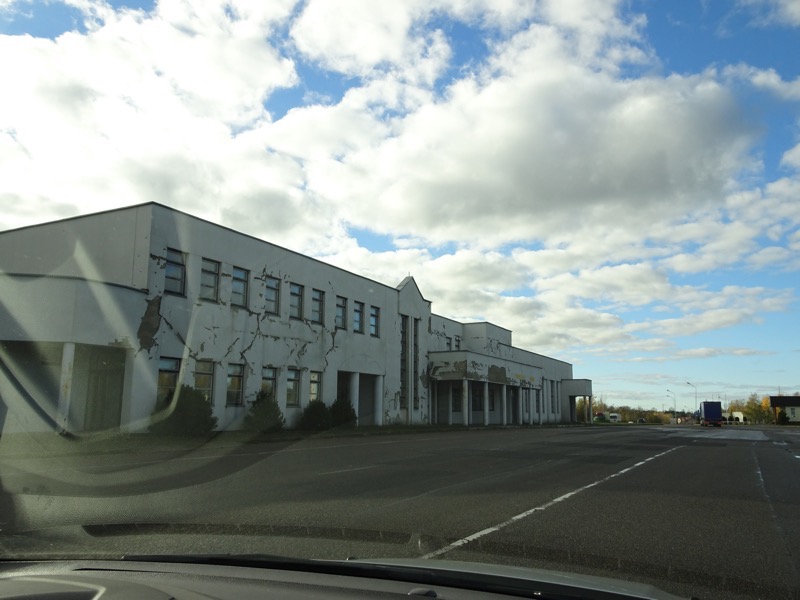
 Thankfully, we got to keep the pretty landscapes.
Thankfully, we got to keep the pretty landscapes.

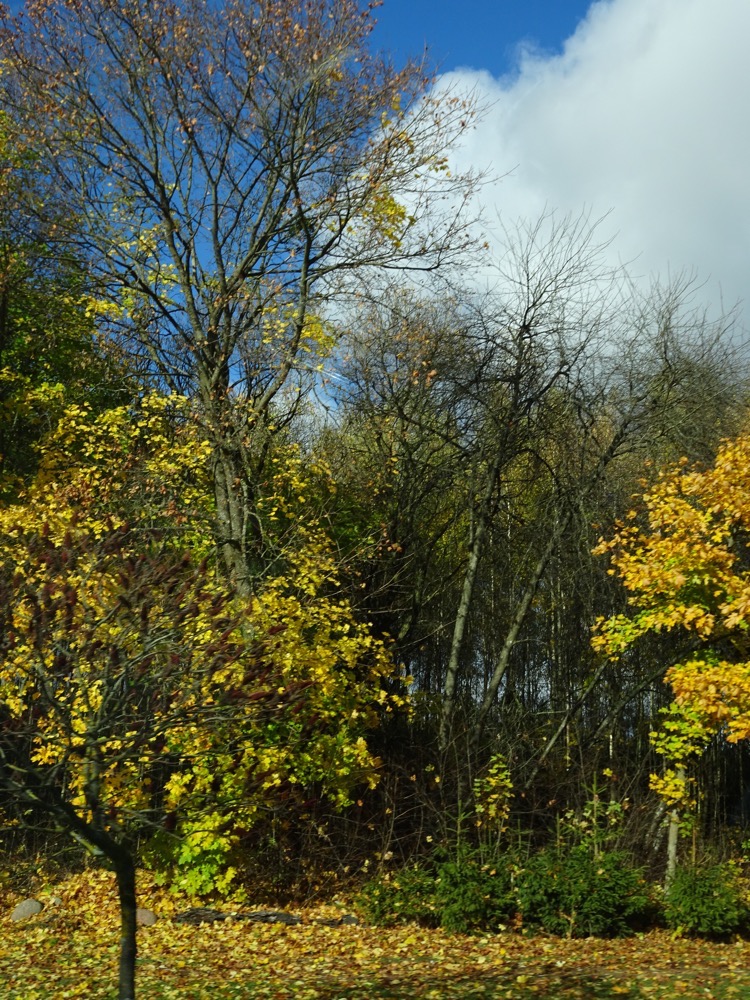
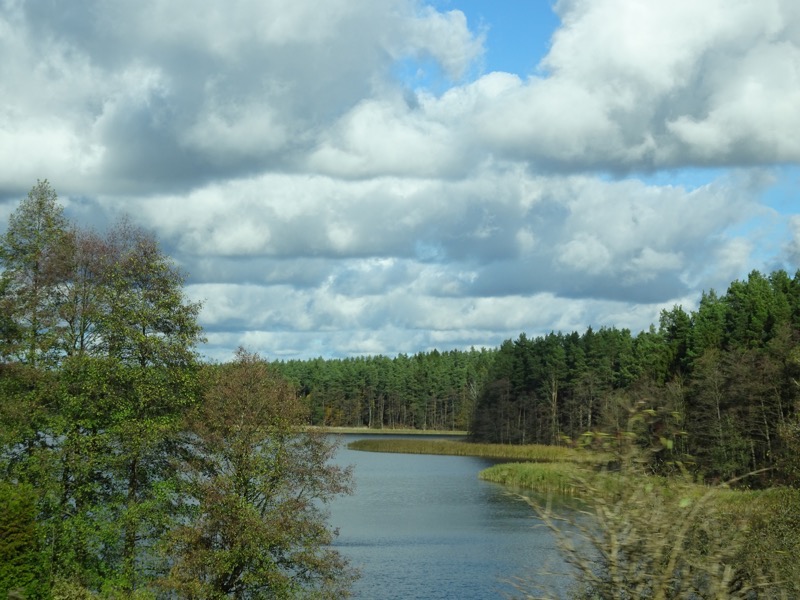
To break up our trip we had decided we would stop just after midday at the Wolf’s Lair. In German known as the ‘Wolfsschanze’. Basically, this was Hitler’s primary military headquarters on the Eastern Front for nearly three years of World War II.
The drive into the complex is skirted by dense forest, far from major roads and urban areas. Much of the forest surrounding the compound was heavily peppered in landmines during the war, as a defence against ground attacks. Would have been so pretty and yet so dangerous…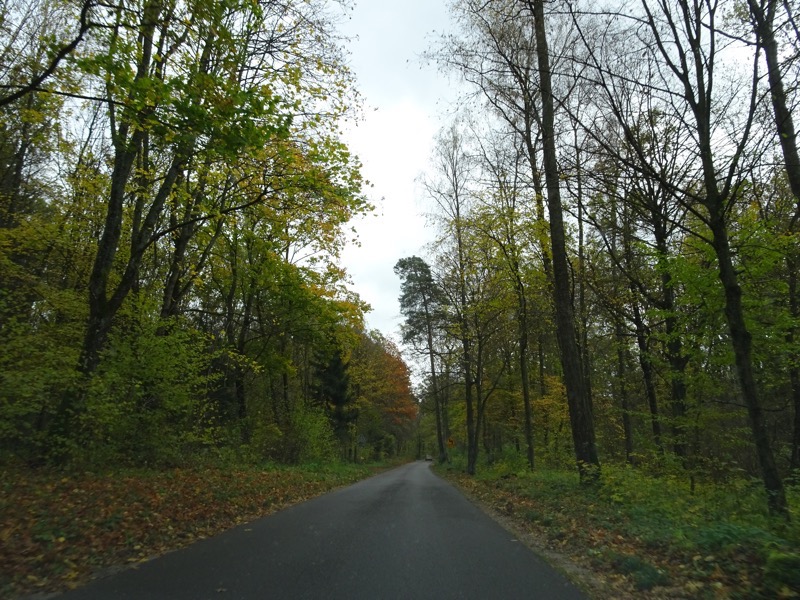 Hitler’s Wolf’s Lair complex is enormous – at roughly 6.5 km2 it was built by June 1941 to house the nearly 2,000 people who would come to live and work in the compound. Among the workers were twenty women who were Hitler’s official food tasters, like Margot Wölk. Margot was from a German family, born and raised in Berlin, married a man named Karl who was in the Germany army and she didn’t know if he was dead or alive. She ended up fleeing to Eastern Prussia when their home in Berlin was bombed and basically had no one to look out for her and found herself rounded up by the local mayor for duty as a food taster to Adolf Hitler?! Her story is remarkable if you read a bit further into it. Hitler’s intelligence sources were informing him that the British were planning an assassination attempt by food poisoning which fed Hitler’s perfectly just fear that people were trying to assassinate him, hence the food tasting team.
Hitler’s Wolf’s Lair complex is enormous – at roughly 6.5 km2 it was built by June 1941 to house the nearly 2,000 people who would come to live and work in the compound. Among the workers were twenty women who were Hitler’s official food tasters, like Margot Wölk. Margot was from a German family, born and raised in Berlin, married a man named Karl who was in the Germany army and she didn’t know if he was dead or alive. She ended up fleeing to Eastern Prussia when their home in Berlin was bombed and basically had no one to look out for her and found herself rounded up by the local mayor for duty as a food taster to Adolf Hitler?! Her story is remarkable if you read a bit further into it. Hitler’s intelligence sources were informing him that the British were planning an assassination attempt by food poisoning which fed Hitler’s perfectly just fear that people were trying to assassinate him, hence the food tasting team.
(Wilczy Szaniec – Polish for Wolf’s Lair)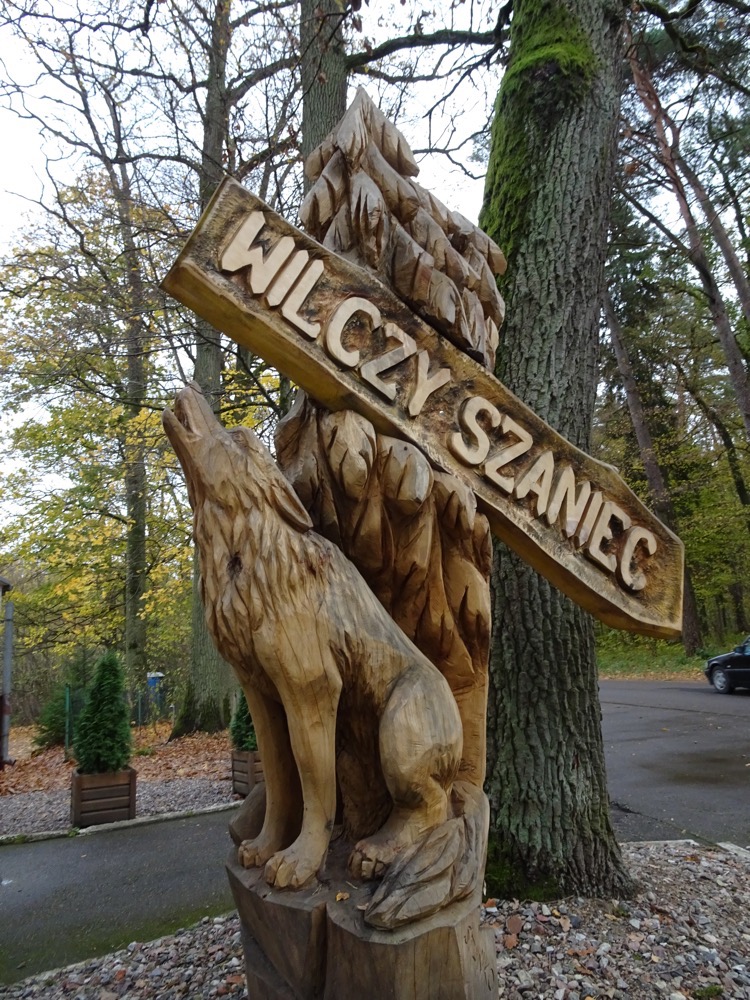
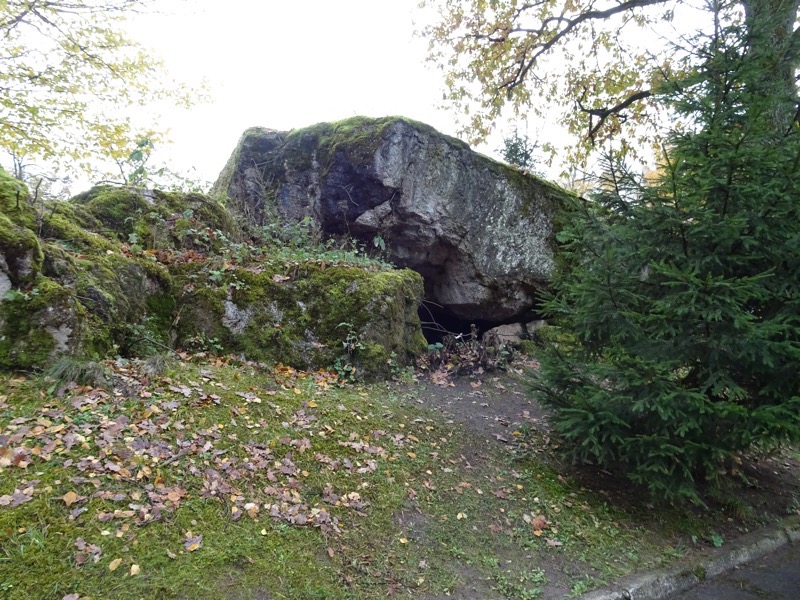
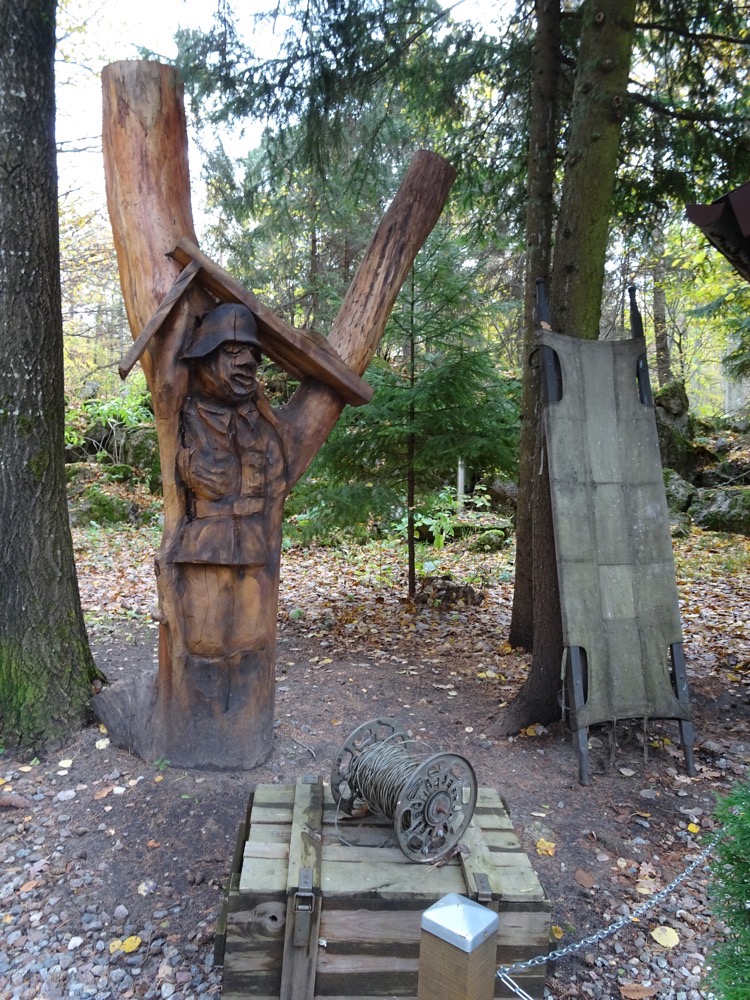
 RSD Command Centre – Reichssicherheitsdienst, a Nazi SS security command post that was responsible for all aspects of security for the complex.
RSD Command Centre – Reichssicherheitsdienst, a Nazi SS security command post that was responsible for all aspects of security for the complex.
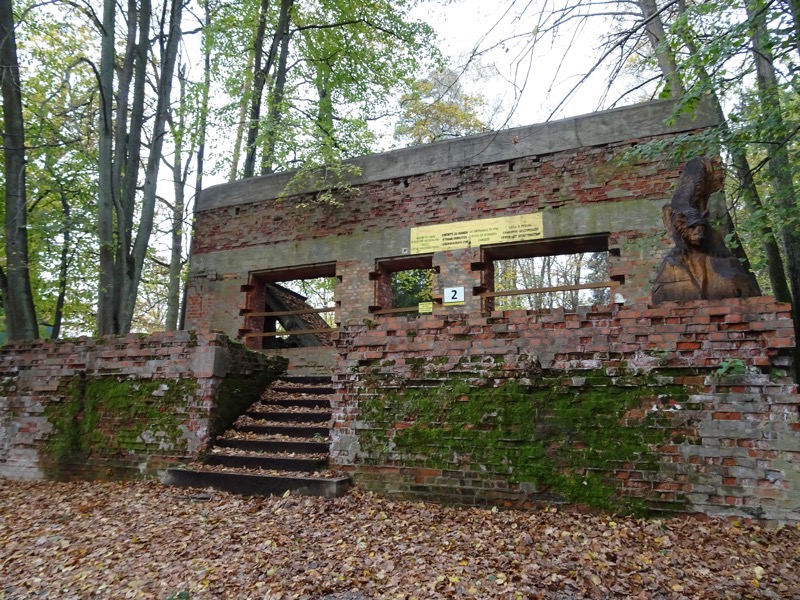 Security was arranged in three concentric circles around the compound:
Security was arranged in three concentric circles around the compound:
Security Zone 3 is the first zone encountered when entering the complex. It was the heavily fortified outer security zone which surrounded the two inner areas. It was defended by landmines I already mentioned and by the Führer Begleit Brigade (FBB), a special armoured security unit from Wehrmacht which was used to man multiple guard houses, watchtowers, and entry and exit checkpoints at the three entrance points.
Security Zone 2 was the next concentric circle in from the outer zone. It housed many lesser Reich Ministers such as Fritz Todt, Albert Speer, and Joachim von Ribbentrop. This zone also had quarters for the various other personnel that lived and worked in the Wolf’s Lair, as well as barracks and amenities for the officers of the RSD.
Security Zone 1 was the inner circle or ‘heart’ of the Wolf’s Lair. It was encircled by steel fencing and guarded by the Reichssicherheitsdienst (RSD) SS specialists. Inside this zone was Hitler’s Bunker and ten other camouflaged bunkers. Each bunker was constructed from steel-reinforced concrete that was over 2m thick. The bunkers in this area were for Hitler’s inner circle – including such infamous bastards as Hermann Göring, Martin Bormann, Wilhelm Keitel, and others.  Nearly all the bunkers seem to have basement air raid shelters or armament storage underneath them.
Nearly all the bunkers seem to have basement air raid shelters or armament storage underneath them.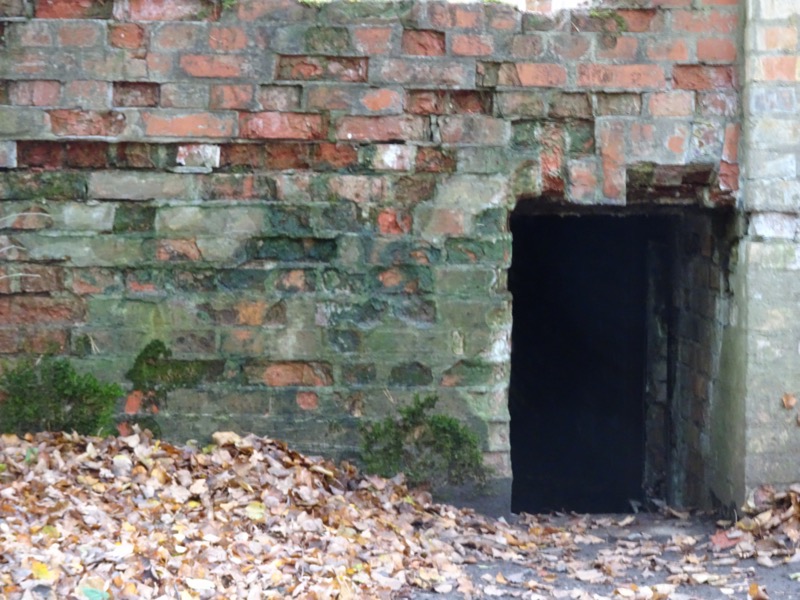 Inside the bunkers were a maze of corridors, conference rooms, workspaces and shelters.
Inside the bunkers were a maze of corridors, conference rooms, workspaces and shelters.
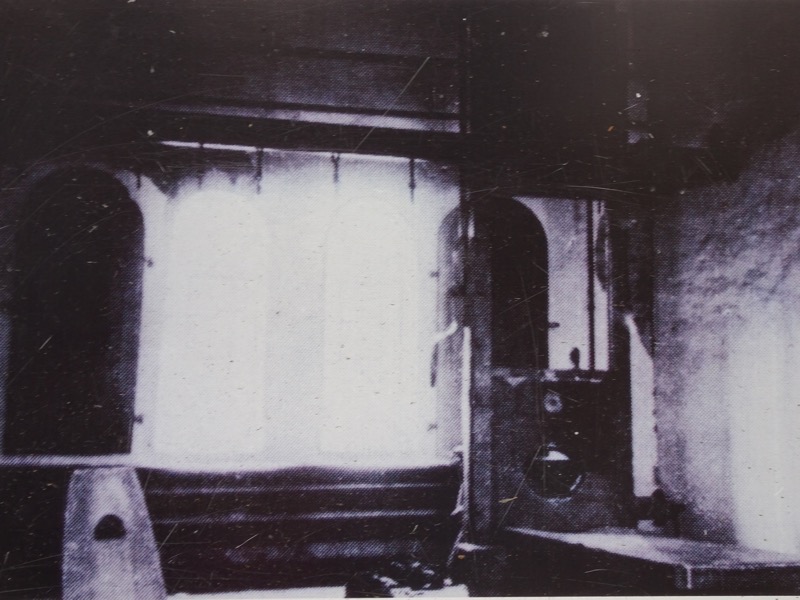
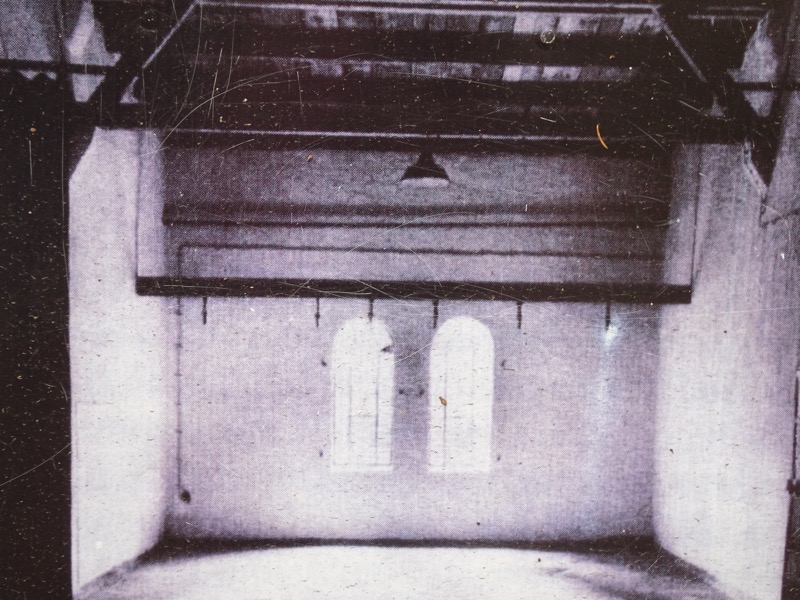
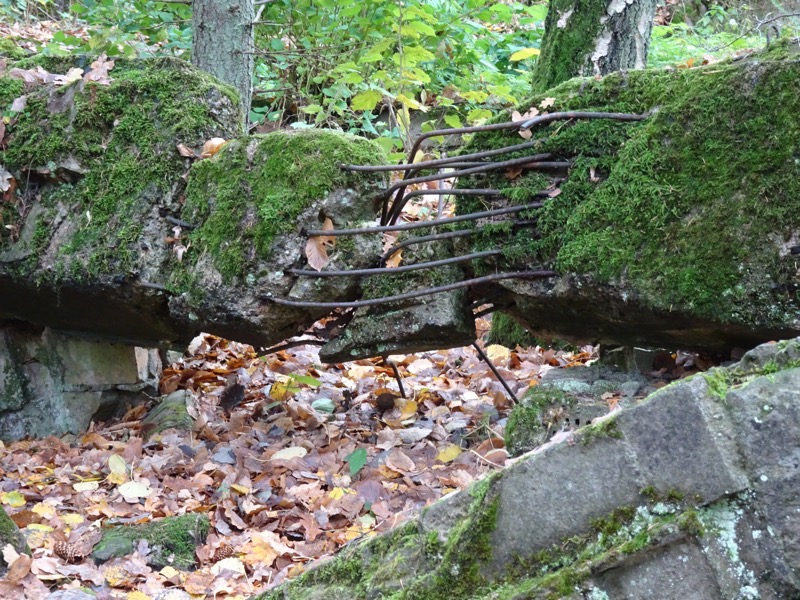 The Wolf’s Lair has several monuments and memorials that have been created to commemorate the people who were associated with this place in WWII, particularly those who did the difficult work of destroying it and making the surrounding areas safe from landmines.
The Wolf’s Lair has several monuments and memorials that have been created to commemorate the people who were associated with this place in WWII, particularly those who did the difficult work of destroying it and making the surrounding areas safe from landmines.
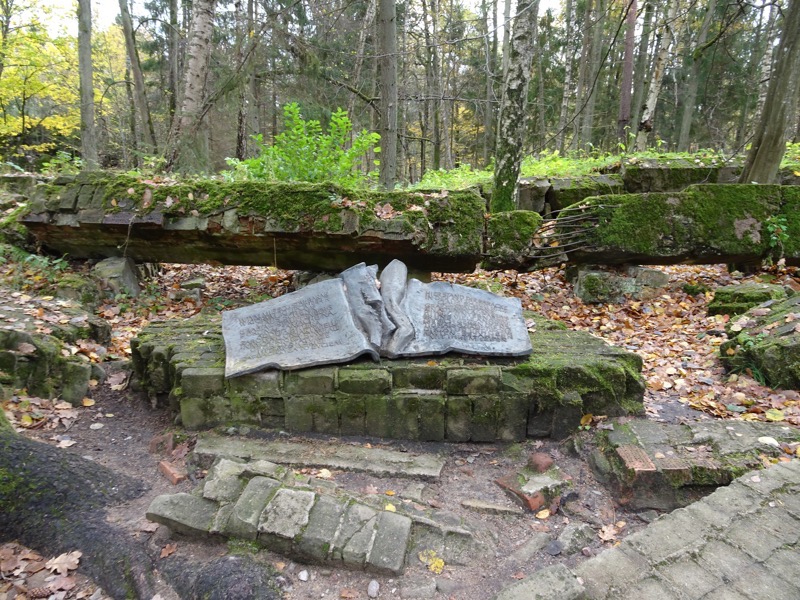


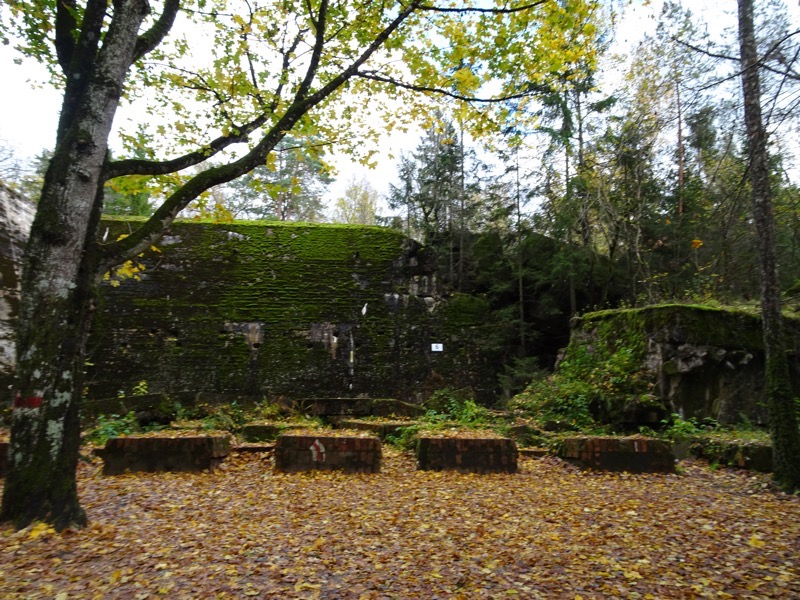 Bunker 6 held a conference room that was the site of the 20 July 1944 assassination attempt that was organized by a group of civilians, in cohorts with some acting and retired Wehrmacht officers whose goal was to kill Hitler, end the war, and establish a new Germany government. Staff officer Colonel Claus von Stauffenberg was the primary assassin and he carried a briefcase into what was a daily conference meeting. He was supposed to place it a few feet from where Hitler would hold his meeting, but unfortunately, on the day the attempt was to be made, the meeting location was changed to a different building due to refurbishment happening in the Führer’s Bunker *and* it was rescheduled to be earlier than usual – so the attempt was unsuccessful. The bomb went off as timed, and the interior of the Bunker 6 was destroyed, four people were killed, but Hitler sustained only slight injuries.
Bunker 6 held a conference room that was the site of the 20 July 1944 assassination attempt that was organized by a group of civilians, in cohorts with some acting and retired Wehrmacht officers whose goal was to kill Hitler, end the war, and establish a new Germany government. Staff officer Colonel Claus von Stauffenberg was the primary assassin and he carried a briefcase into what was a daily conference meeting. He was supposed to place it a few feet from where Hitler would hold his meeting, but unfortunately, on the day the attempt was to be made, the meeting location was changed to a different building due to refurbishment happening in the Führer’s Bunker *and* it was rescheduled to be earlier than usual – so the attempt was unsuccessful. The bomb went off as timed, and the interior of the Bunker 6 was destroyed, four people were killed, but Hitler sustained only slight injuries.
Before the bomb detonated, Colonel Stauffenberg and his co-conspirator, Lieutenant Werner von Haeften, had already left Wolf’s Lair to return to Berlin. They managed to pass through several of the security zones and after only a short delay at the RSD guard post just outside Zone 1, they were allowed to leave the site by car. News arrived in Berlin fairly quickly of the assassination attempt, and of Hitler’s survival. Poor Colonel Von Stauffenberg, his Lieutenant, and several co-conspirators were arrested and shot that same evening outside the Bendlerblock in Berlin.
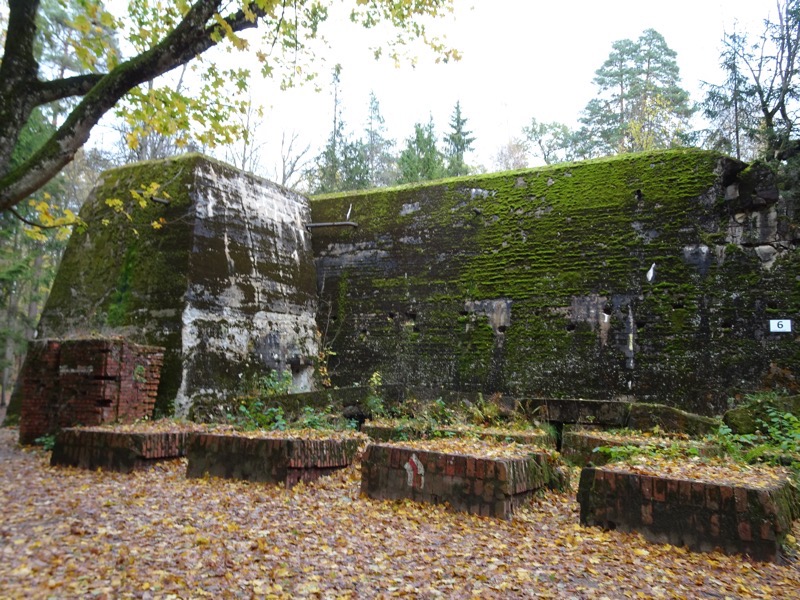 Reichsmarschall Hermann Göring surveying the conference room that was destroyed by the suitcase bomb left by Claus von Stauffenberg on 20 July 1944
Reichsmarschall Hermann Göring surveying the conference room that was destroyed by the suitcase bomb left by Claus von Stauffenberg on 20 July 1944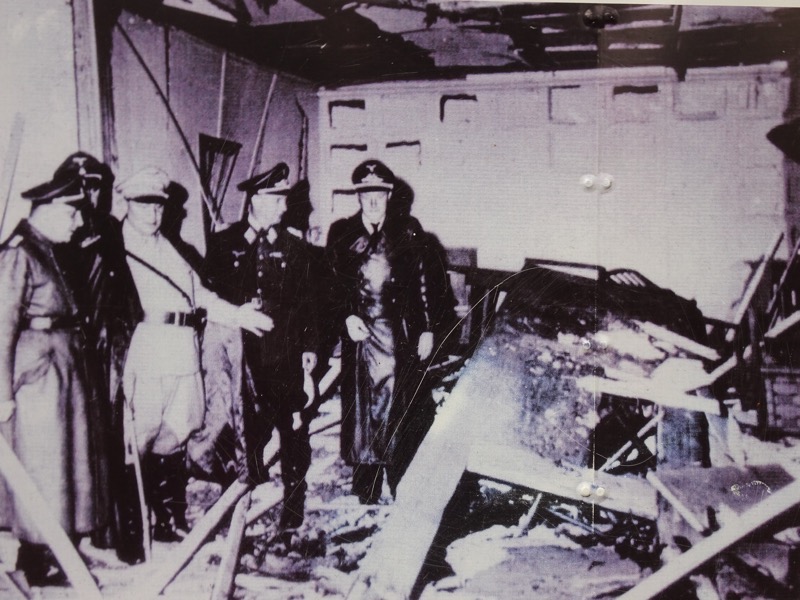

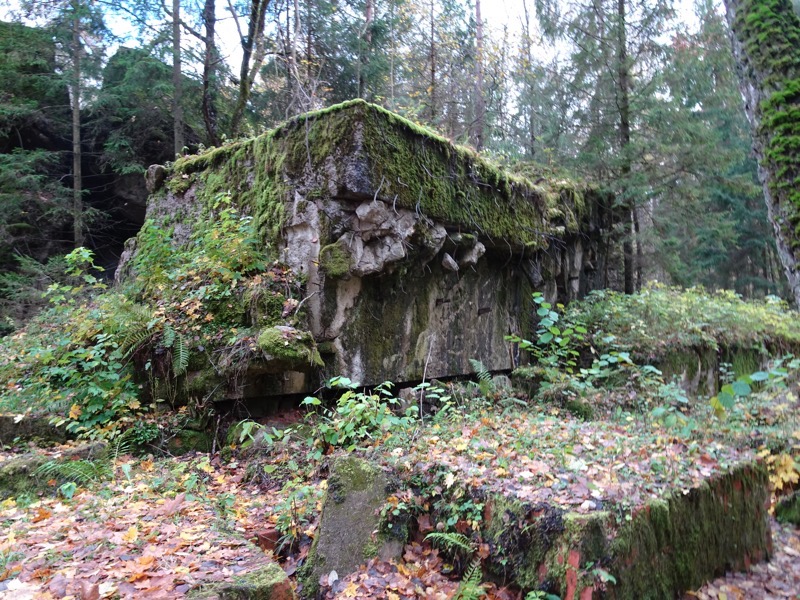
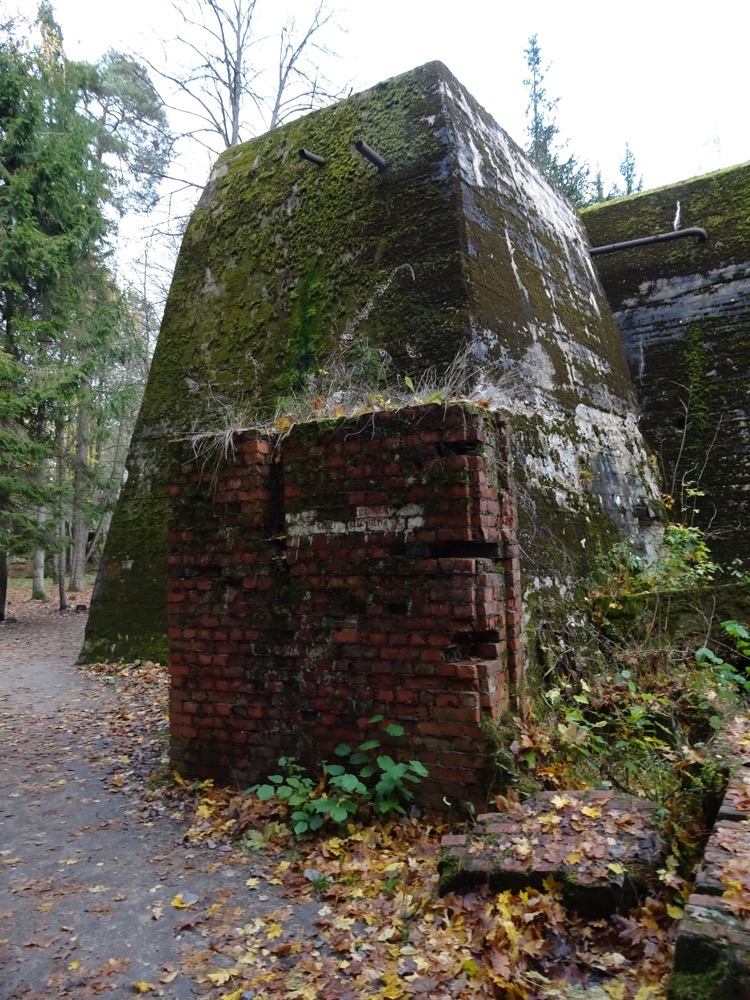
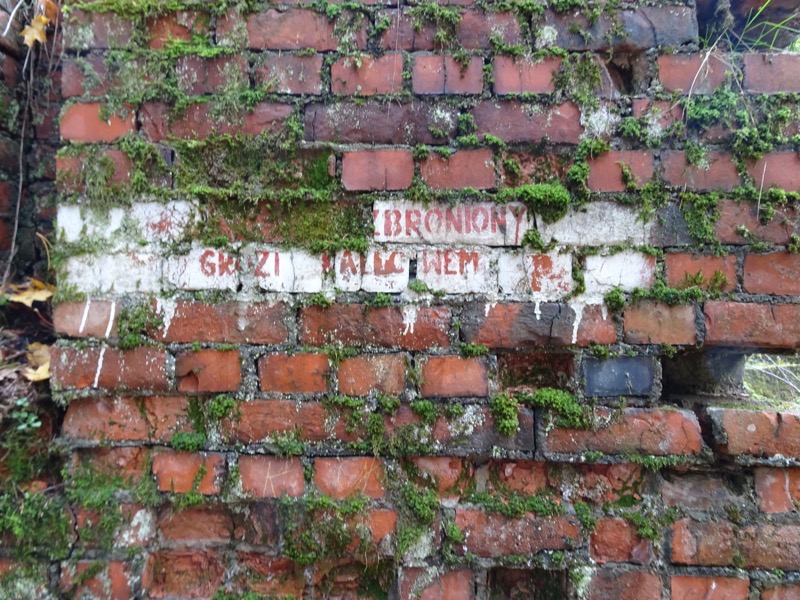 It struck me at Auschwitz-Birkenau and now again at Wolfsschanze just the sheer size and scope of the military industrial complex that was deployed by the Germans during World War II. It has been as eye-opening as the first time I went to Gallipoli – I had learned about the ANZACS and the Gallipoli military disaster during my formal education and had continued to study and gain knowledge o this topic throughout my entire life. But until I found myself looking down on ANZAC Cove and looking at the topography that the ANZAC diggers were attempting to overcome, the enormity and impossibility of it all did not really become a tangible and concrete concept in my mind.
It struck me at Auschwitz-Birkenau and now again at Wolfsschanze just the sheer size and scope of the military industrial complex that was deployed by the Germans during World War II. It has been as eye-opening as the first time I went to Gallipoli – I had learned about the ANZACS and the Gallipoli military disaster during my formal education and had continued to study and gain knowledge o this topic throughout my entire life. But until I found myself looking down on ANZAC Cove and looking at the topography that the ANZAC diggers were attempting to overcome, the enormity and impossibility of it all did not really become a tangible and concrete concept in my mind.
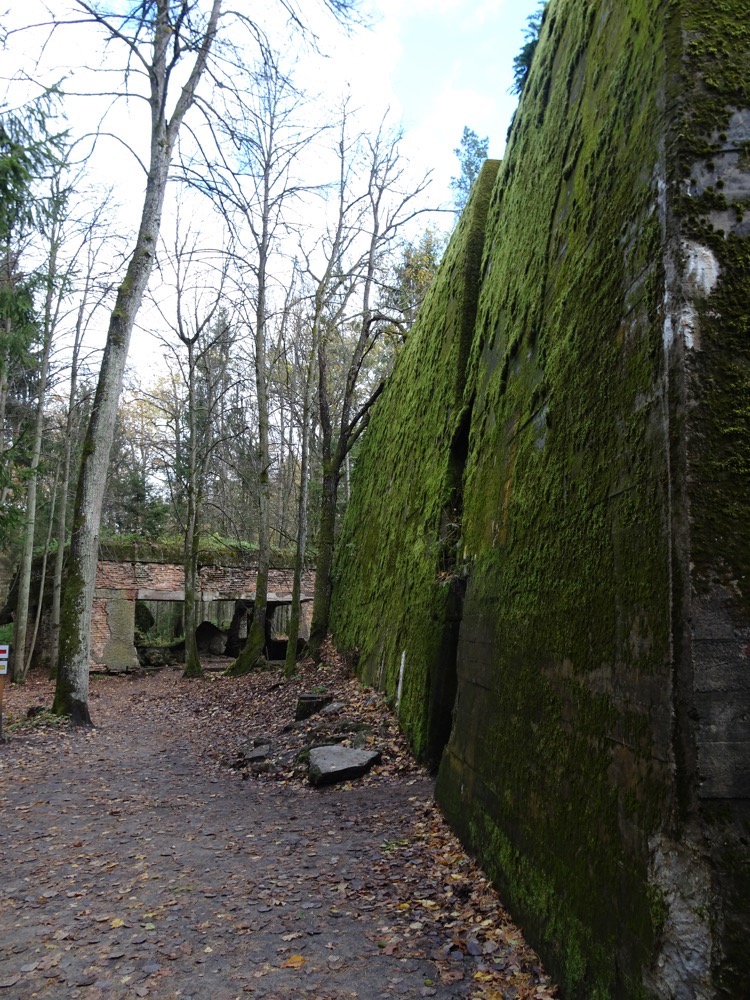 Likewise, having grown up in the ’70s and having been taught WWII history and continuing to learn more and more about the Holocaust over the years – the displacement and deportation of millions of people throughout Europe, the slave labour and abuses of the concentration camps, and of course the details of the truly horrific attempt to completely exterminate the European Jewish population in death camps – these things too have been academic concepts in my mind without concrete frame of reference to anchor them to.
Likewise, having grown up in the ’70s and having been taught WWII history and continuing to learn more and more about the Holocaust over the years – the displacement and deportation of millions of people throughout Europe, the slave labour and abuses of the concentration camps, and of course the details of the truly horrific attempt to completely exterminate the European Jewish population in death camps – these things too have been academic concepts in my mind without concrete frame of reference to anchor them to.
Now… having seen the enormity and scale of the just a portion of German military operation during WWII (and this has literally just been a small peek at what the Nazis had put in place), it has completely eclipsed my expectations and I am finding it difficult to verbalise just how monstrously immense the scale of their endeavour was, and the ruthless efficiency with which they appear to have attempted to deploy it. It’s… shocking. Truly shocking. I don’t know how something I have known about my entire life can be shocking. But it is. 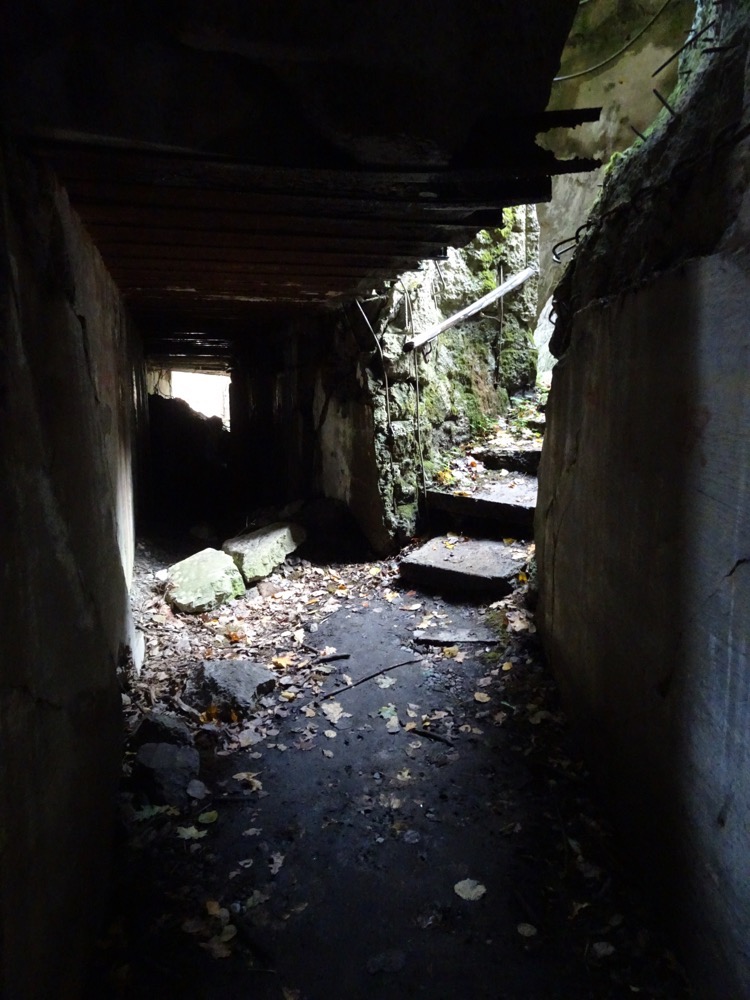 Bunker 8 was a Guest Bunker and Air Raid Shelter.
Bunker 8 was a Guest Bunker and Air Raid Shelter.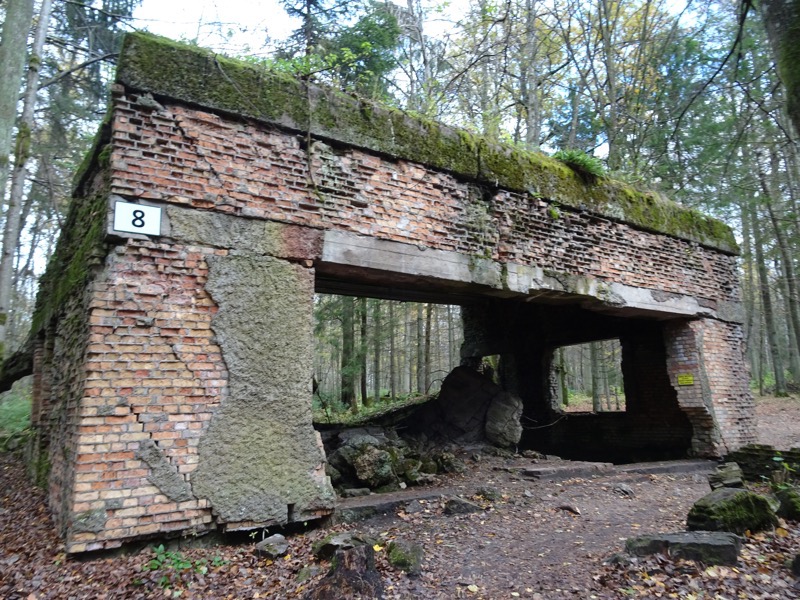
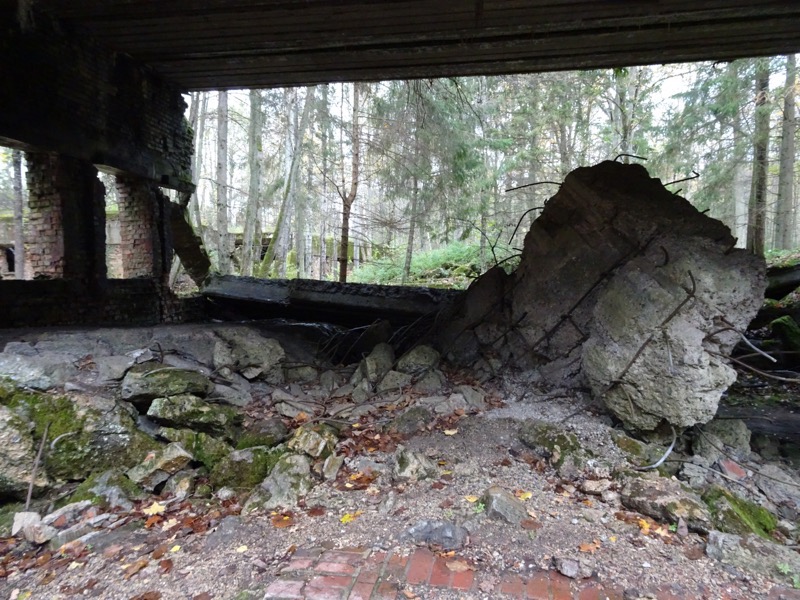
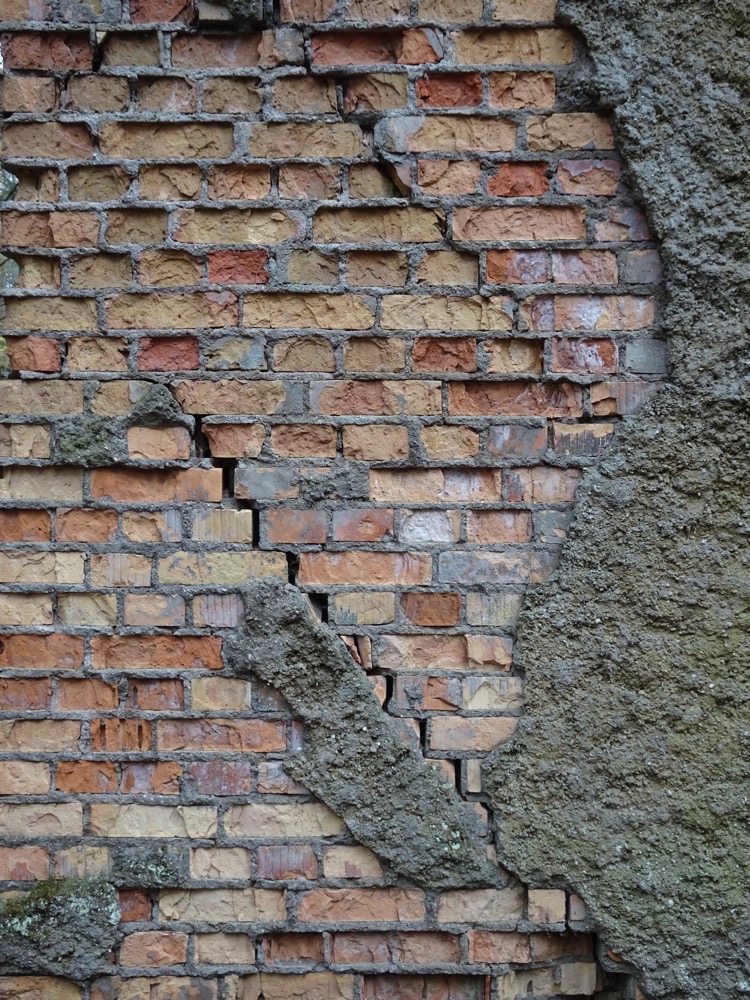 This enormous slab of concrete weighing who knows how many tonnes, looks like it is precariously balanced on just a few decaying bricks…
This enormous slab of concrete weighing who knows how many tonnes, looks like it is precariously balanced on just a few decaying bricks…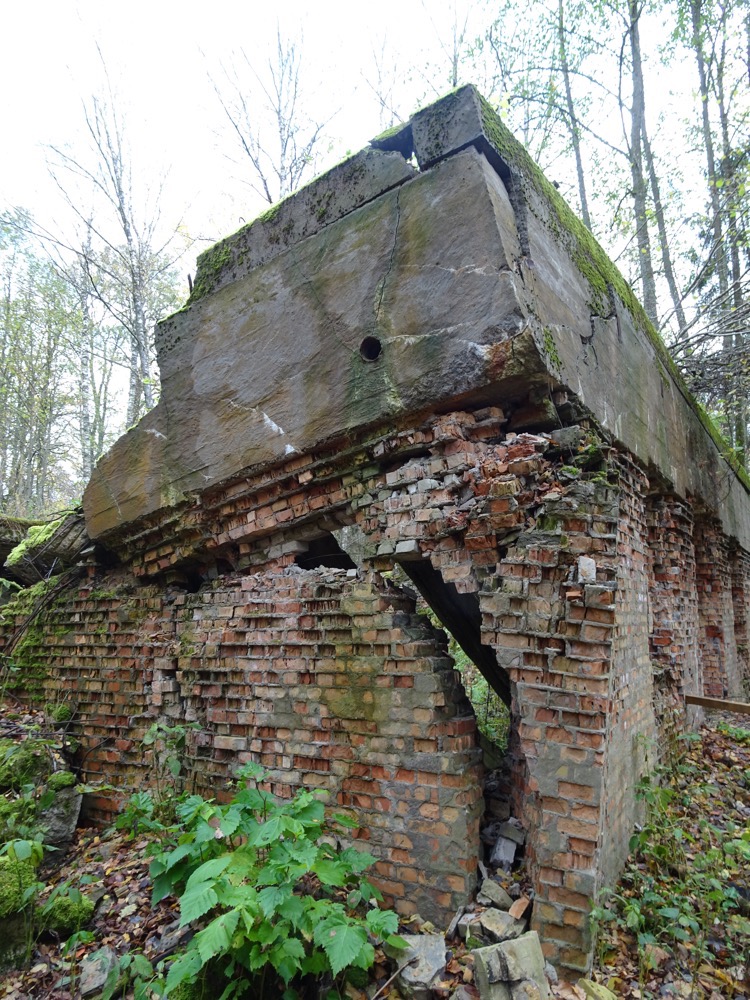

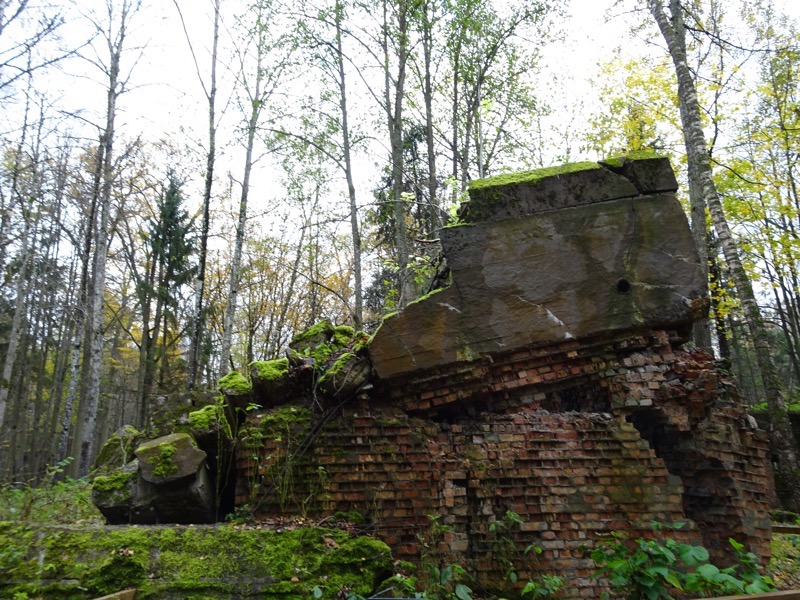 It’s not difficult to find a sombre beauty in the decay at Pripyat. Likewise, it is not difficult to find incredible textures, decaying walls and moss-covered walls at Wolf’s Lair that are similarly beautiful in their own way.
It’s not difficult to find a sombre beauty in the decay at Pripyat. Likewise, it is not difficult to find incredible textures, decaying walls and moss-covered walls at Wolf’s Lair that are similarly beautiful in their own way.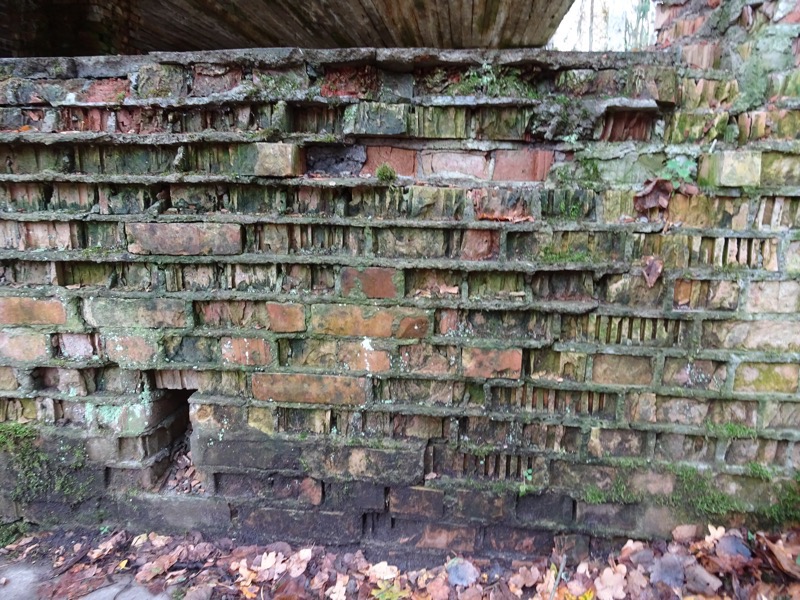

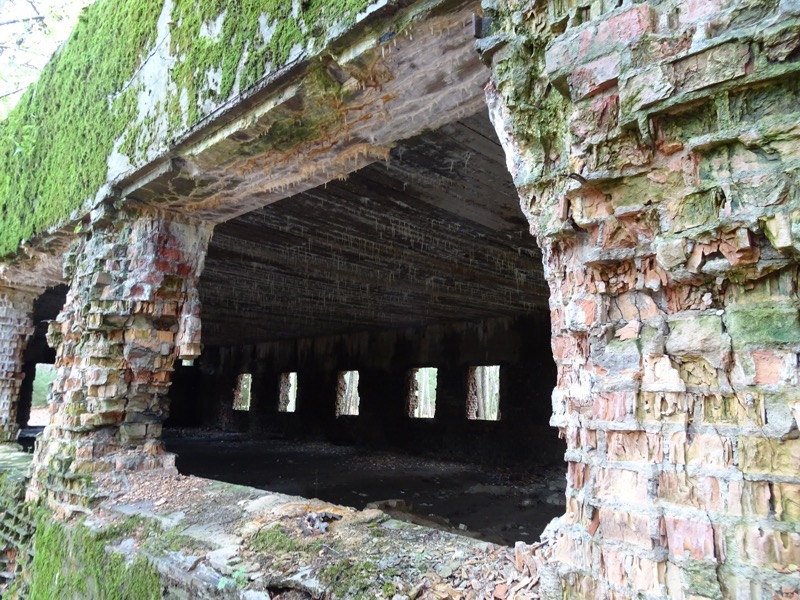
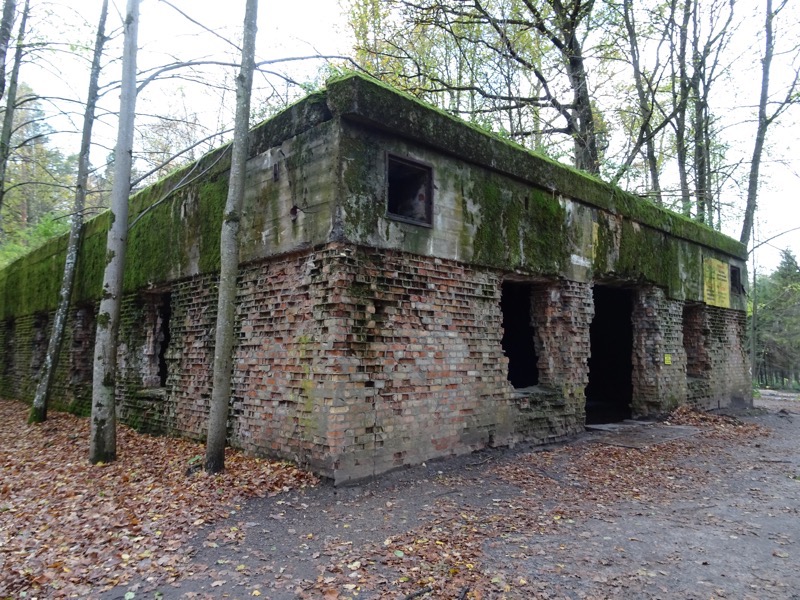
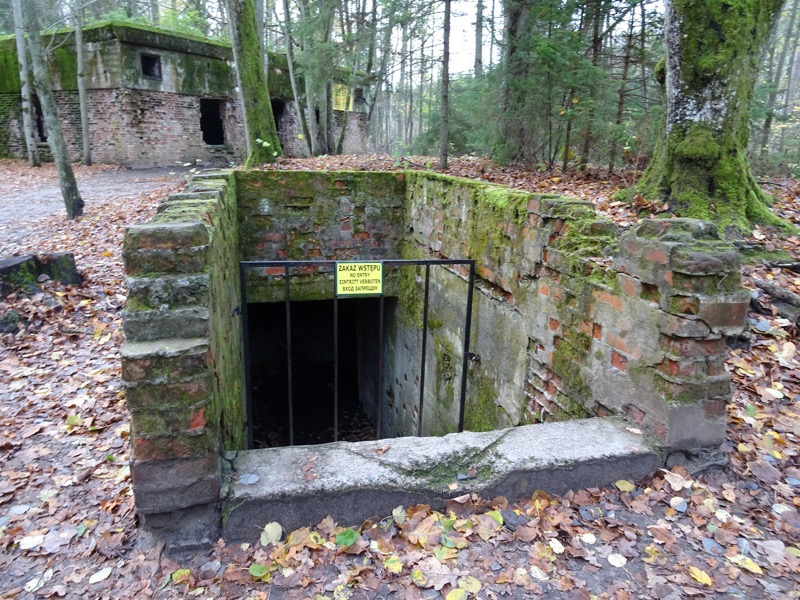 Bunker 11: Headquarters of Johann Rattenhuber, who was the Chief of the SS and head of Hitler’s security department. Also, fun fact – his headquarters doubled as the Post Office.
Bunker 11: Headquarters of Johann Rattenhuber, who was the Chief of the SS and head of Hitler’s security department. Also, fun fact – his headquarters doubled as the Post Office. 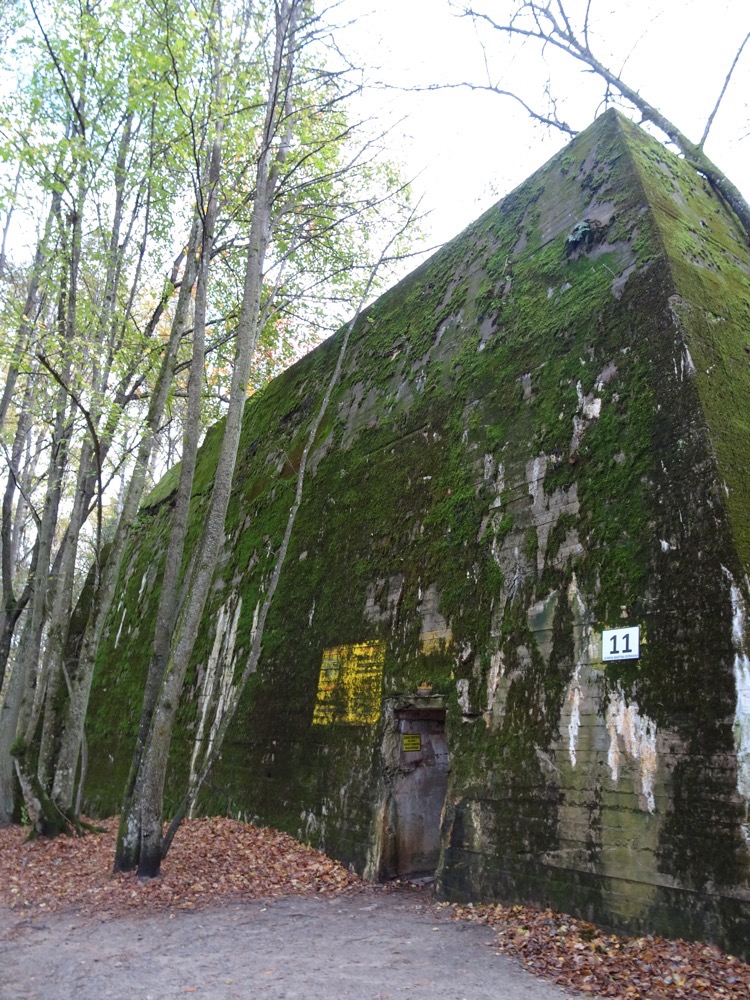


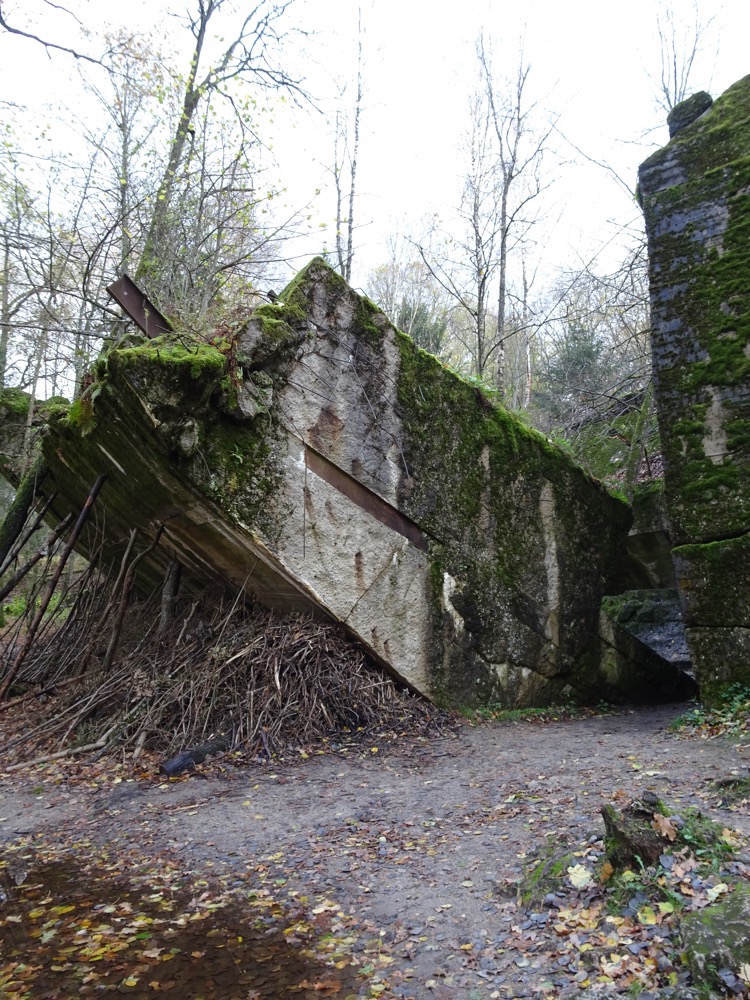 The bunkers were split wide open by explosives when the Red Army reached Eastern Prussia during the Baltic Offensive of 1944. Hitler left Wolf’s Lair for the last time on 20 November 1944 as the Soviet armies advanced. The Red Army took the site without firing a shot two days later, on the 22nd of November. Shortly after, directives were issued to destroy the complex and the demolition took place some months later in January 1945. Literally tonnes of explosives were used. Each bunker requiring approximately 8,000 kg of TNT to blast through the reinforced concrete. Given that most of these buildings have large portions still intact, even that amount of explosive was only enough to partially destroy these enormous reinforced bunkers.
The bunkers were split wide open by explosives when the Red Army reached Eastern Prussia during the Baltic Offensive of 1944. Hitler left Wolf’s Lair for the last time on 20 November 1944 as the Soviet armies advanced. The Red Army took the site without firing a shot two days later, on the 22nd of November. Shortly after, directives were issued to destroy the complex and the demolition took place some months later in January 1945. Literally tonnes of explosives were used. Each bunker requiring approximately 8,000 kg of TNT to blast through the reinforced concrete. Given that most of these buildings have large portions still intact, even that amount of explosive was only enough to partially destroy these enormous reinforced bunkers.
After that, efforts were started to clear each of the Wolf Lair’s security zones of the landmines that had been left behind. It took over a decade to clear more than 54,000 mines that had been scattered around the complex and in the security zones and wasn’t given the ‘all clear’ until 1955.
Bunker 13 – Hitler’s personal air raid shelter and bunker.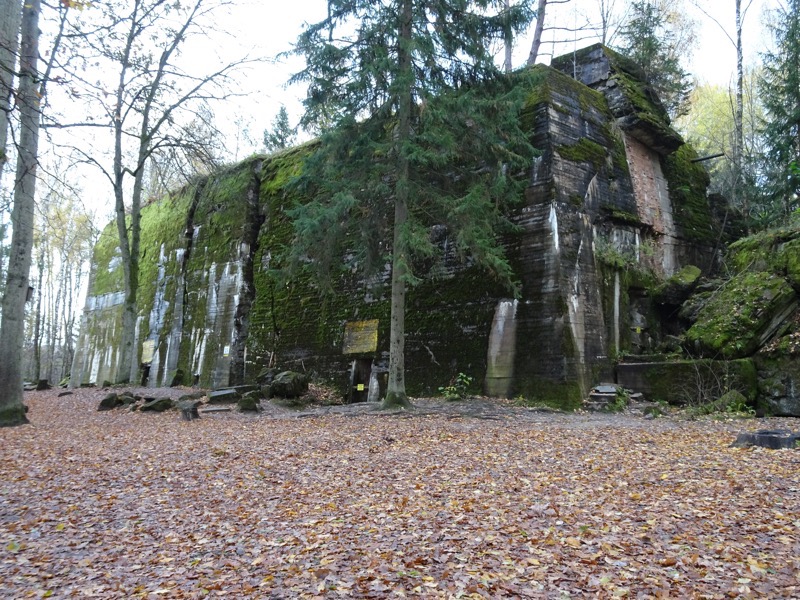
Each day, Hitler would take a walk alone with his dog at 09:00 in the morning before looking at the mail (which came by air or by train). At 12:00 he would have a situation briefing, which was normally held in Wilhelm Keitel’s or Alfred Jodl’s bunkers. These meetings would usually run for about two hours, after which he would have lunch at 14:00 in the dining hall. Witnesses recall that Hitler was a man of routine and habits and he invariably sat in the same chair, always between Alfred Jodl and Otto Dietrich. Wilhelm Keitel, Martin Bormann, and Hermann Göring’s personal adjutant, General Karl Bodenschatz would sit opposite him.
After lunch, Hitler would work on non-military matters and in the late afternoon, coffee would be served around 17:00 before a second military briefing with Alfred Jodl at 18:00. Dinner each day would start at 19:30 and could last up to two hours (I can’t stop thinking about the twenty women who were ‘kept’ here as his food tasters!), after which they would often watch films in the cinema. Yes, one of these big bunker style buildings was a cinema – I guess they needed somewhere to watch all those Leni Riefenstahl propaganda films (they also had a gambling hall/casino here in one as well). Hitler would usually retire to his private quarters where he ‘gave monologues’ to his closest acquaintance, including the two female secretaries who travelled with him to the Wolf’s Lair. Sometimes Hitler and his entourage would listen to gramophone records after dinner – Beethoven, Wagner or other operas – in what sounds like a very civilized and precise way to go about your day… but in among the seemingly orderly lives that these people lived, here, among in these bunkers, decisions were made that effectively signed the death warrants of millions of people across the whole of Nazi-occupied Europe as it was here the ‘Final Solution’ was developed and implemented.

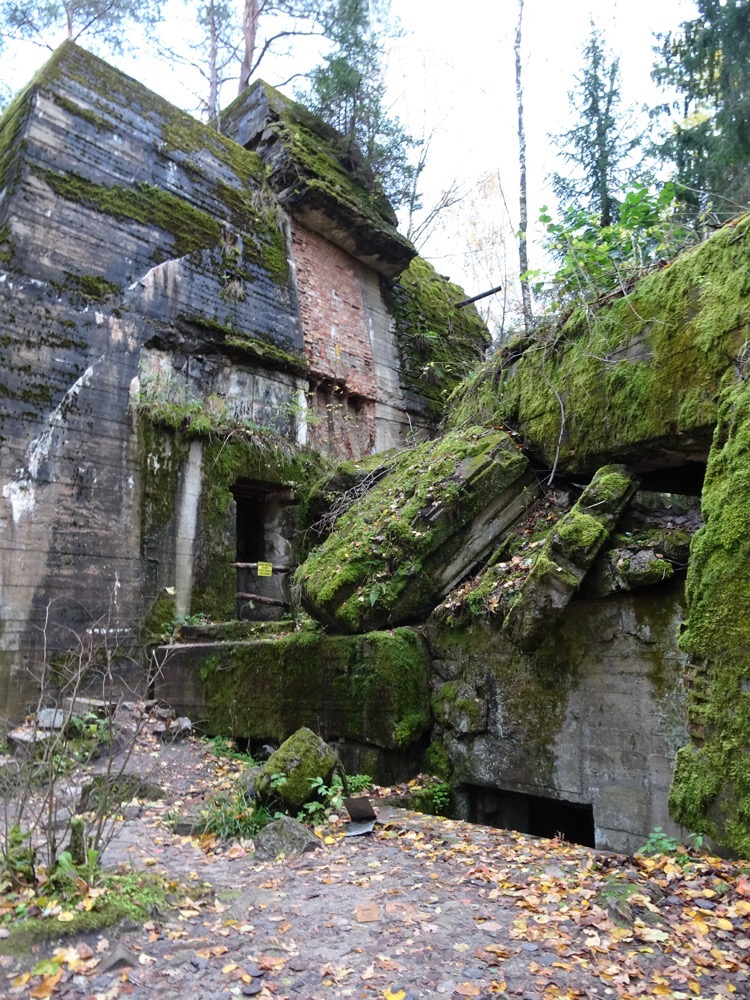

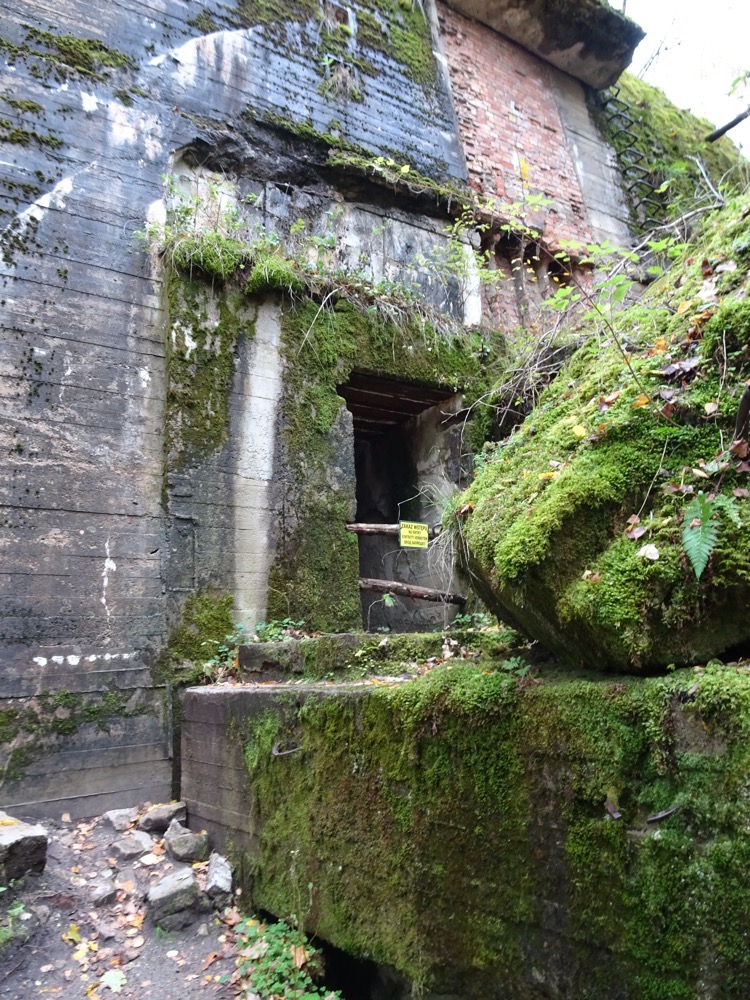

 Looking inside what was Bunker 13 from the rear.
Looking inside what was Bunker 13 from the rear.

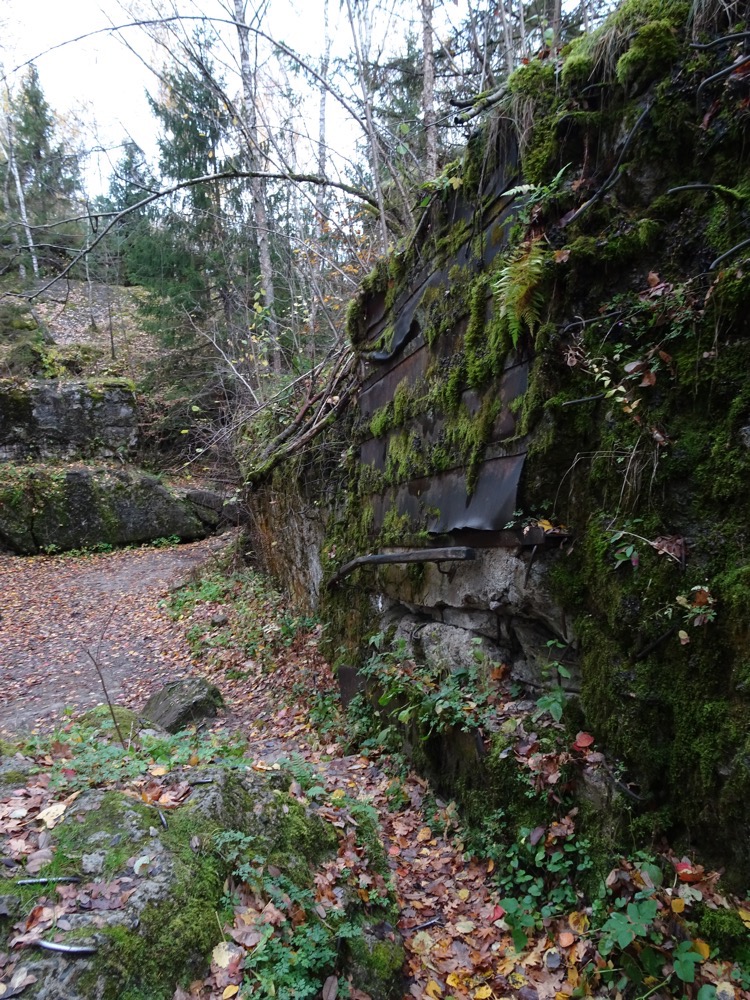
Building 12 – Radio and Telex Buildings
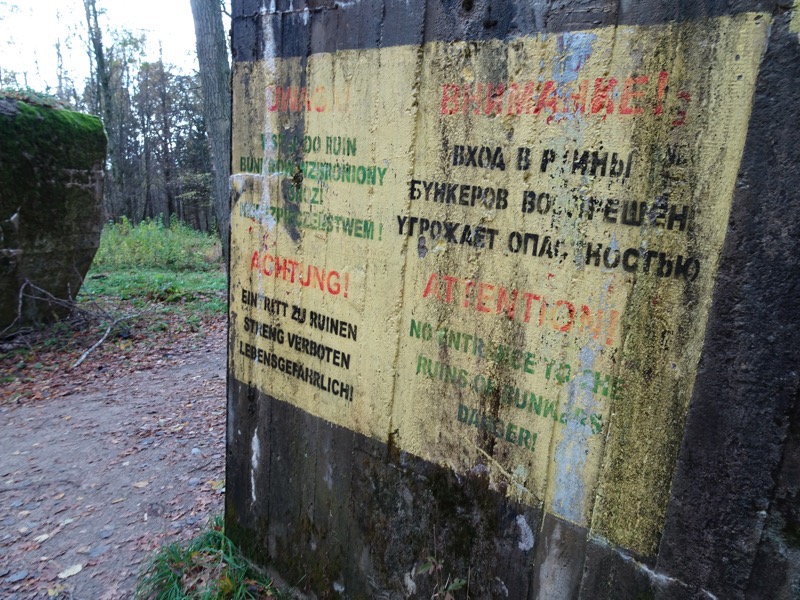 Bunker 20 – Martin Bormann’s personal air raid shelter for him and his staff. Bormann was Hitler’s personal secretary.
Bunker 20 – Martin Bormann’s personal air raid shelter for him and his staff. Bormann was Hitler’s personal secretary.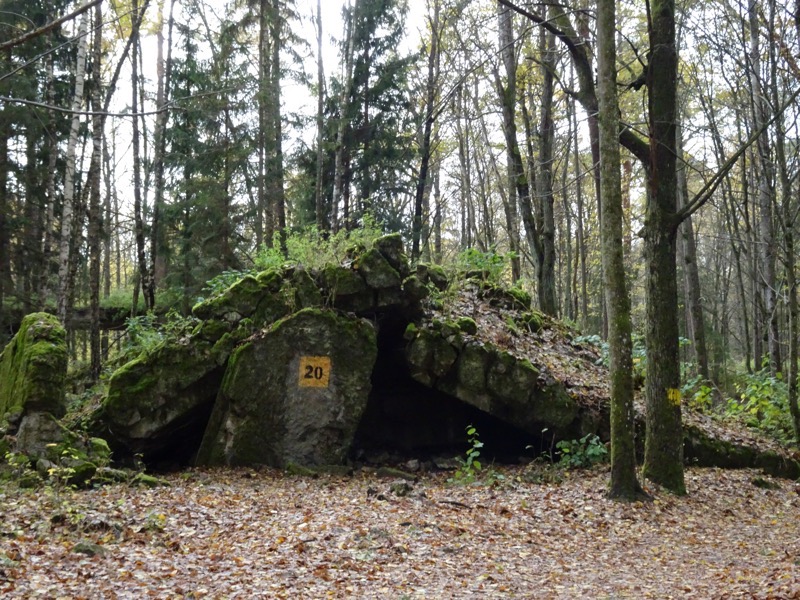 Bunker 16 was a building to house generators to provide power for the complex.
Bunker 16 was a building to house generators to provide power for the complex.
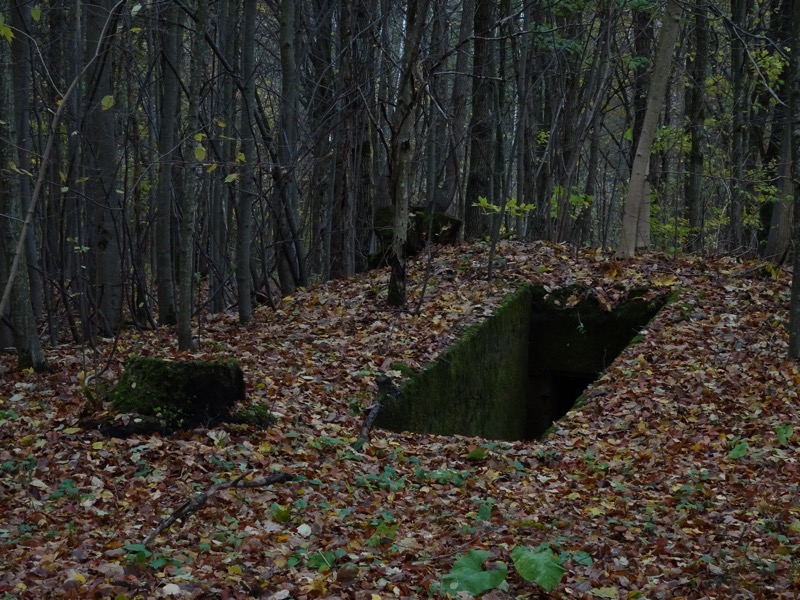 Hermann Goering’s Bunker:
Hermann Goering’s Bunker: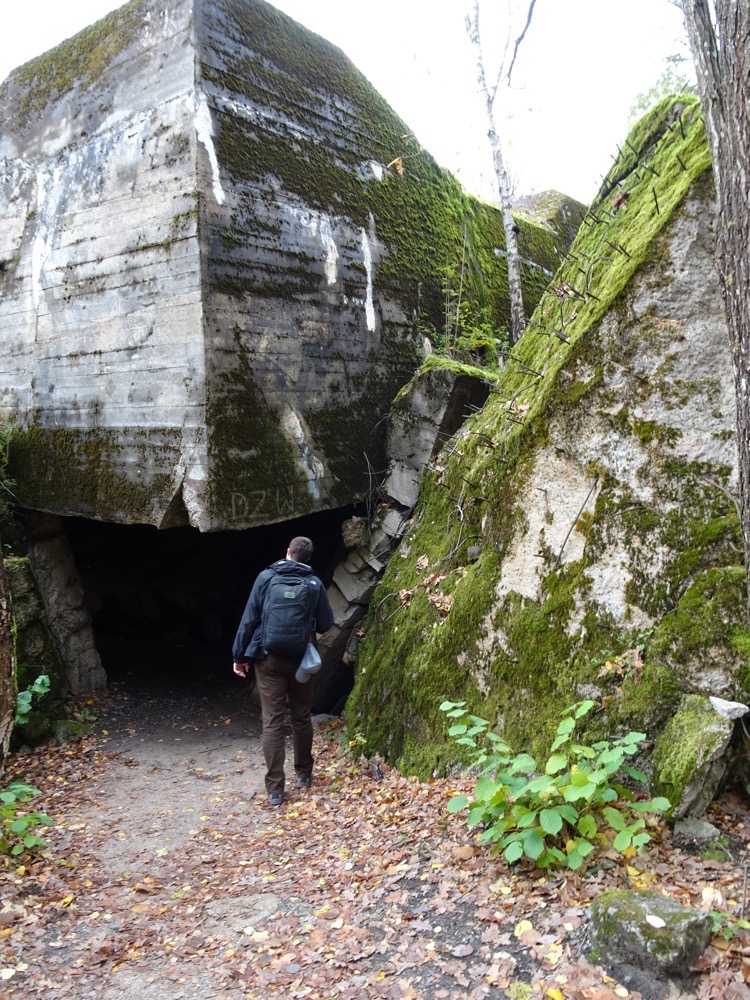 Walking under the ruins of Goering’s destroyed Bunker. It is cold, damp, and there is lots of thick rebar sticking out at all angles. Over our heads is a massive – just indescribably, massive and heavy – concrete slab over two metres thick. There are ‘no entrance’ signs everywhere but plenty of evidence that visitors have been walking through these spaces frequently.
Walking under the ruins of Goering’s destroyed Bunker. It is cold, damp, and there is lots of thick rebar sticking out at all angles. Over our heads is a massive – just indescribably, massive and heavy – concrete slab over two metres thick. There are ‘no entrance’ signs everywhere but plenty of evidence that visitors have been walking through these spaces frequently.
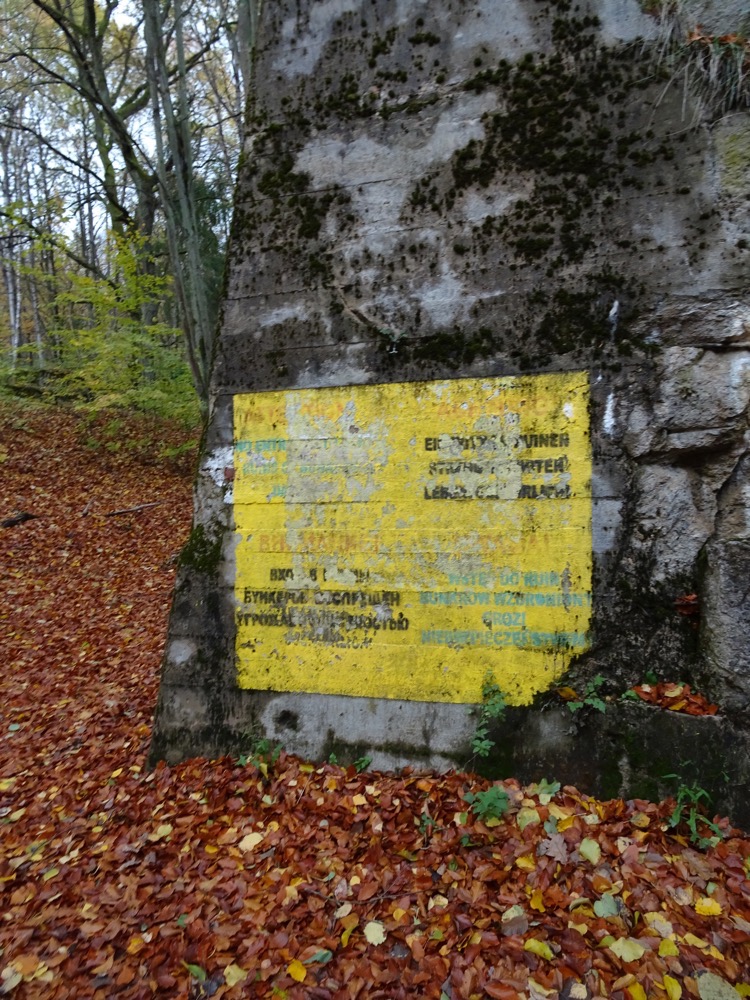 The concrete walls were indeed well thicker than 2-5m… yale for scale.
The concrete walls were indeed well thicker than 2-5m… yale for scale.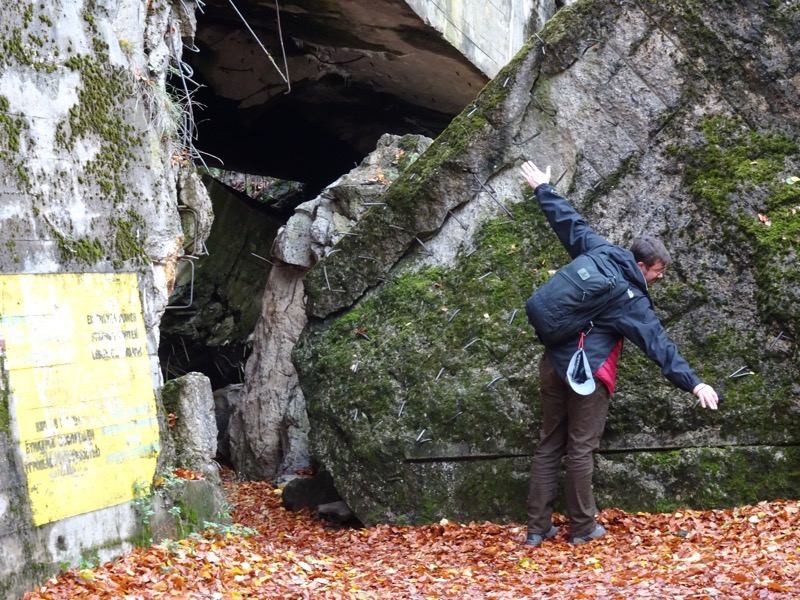 I had read that this place is not so great to visit in the summer – partly because of the crowds (though it apparently only sees 200,000 visitors a year, which is not that many compared to say, the five million plus visitors that see the Sistine Chapel each year), but also because of the foliage. In summer all the trees are still covered in their leaves, which obscure the size and shapes of the enormous bunkers. This was quite deliberate, Hitler was paranoid about the likelihood of an air bombing raid so the thick tree cover in the middle of the forest was designed to camouflage the entire complex. No major air offensive ever occurred here and it could be because the Western Allies were unaware of the Wolf’s Lair location entirely or were just unaware of its strategic importance – they have never disclosed whether they knew about it or not. The Soviet Red Army was certainly unaware of the complex’s location and scale when they discovered it during their advance towards Germany in late 1944. So anyway, from the leaf litter which is well over 20cm deep everywhere, I can imagine that in summer you would find it hard to make out the size, scale and even proximity of these buildings to each other, in the summertime.
I had read that this place is not so great to visit in the summer – partly because of the crowds (though it apparently only sees 200,000 visitors a year, which is not that many compared to say, the five million plus visitors that see the Sistine Chapel each year), but also because of the foliage. In summer all the trees are still covered in their leaves, which obscure the size and shapes of the enormous bunkers. This was quite deliberate, Hitler was paranoid about the likelihood of an air bombing raid so the thick tree cover in the middle of the forest was designed to camouflage the entire complex. No major air offensive ever occurred here and it could be because the Western Allies were unaware of the Wolf’s Lair location entirely or were just unaware of its strategic importance – they have never disclosed whether they knew about it or not. The Soviet Red Army was certainly unaware of the complex’s location and scale when they discovered it during their advance towards Germany in late 1944. So anyway, from the leaf litter which is well over 20cm deep everywhere, I can imagine that in summer you would find it hard to make out the size, scale and even proximity of these buildings to each other, in the summertime. Hermann Goering’s House
Hermann Goering’s House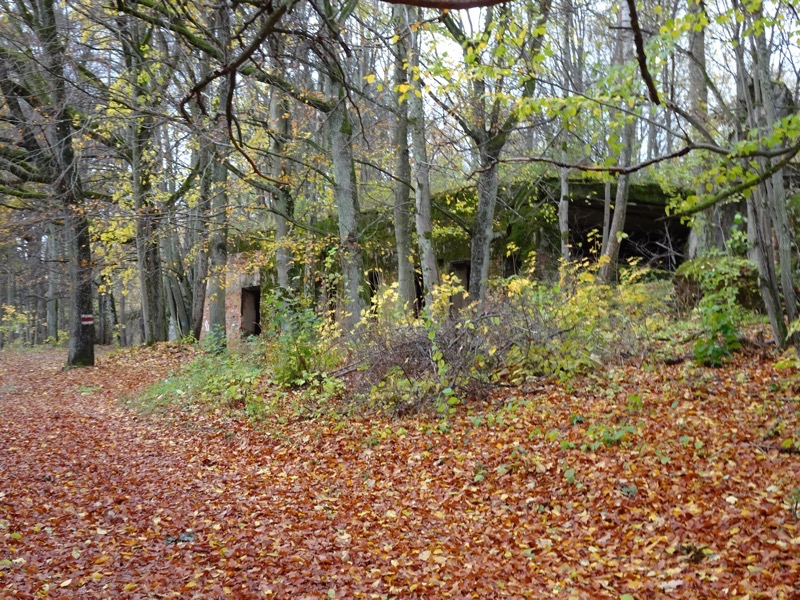

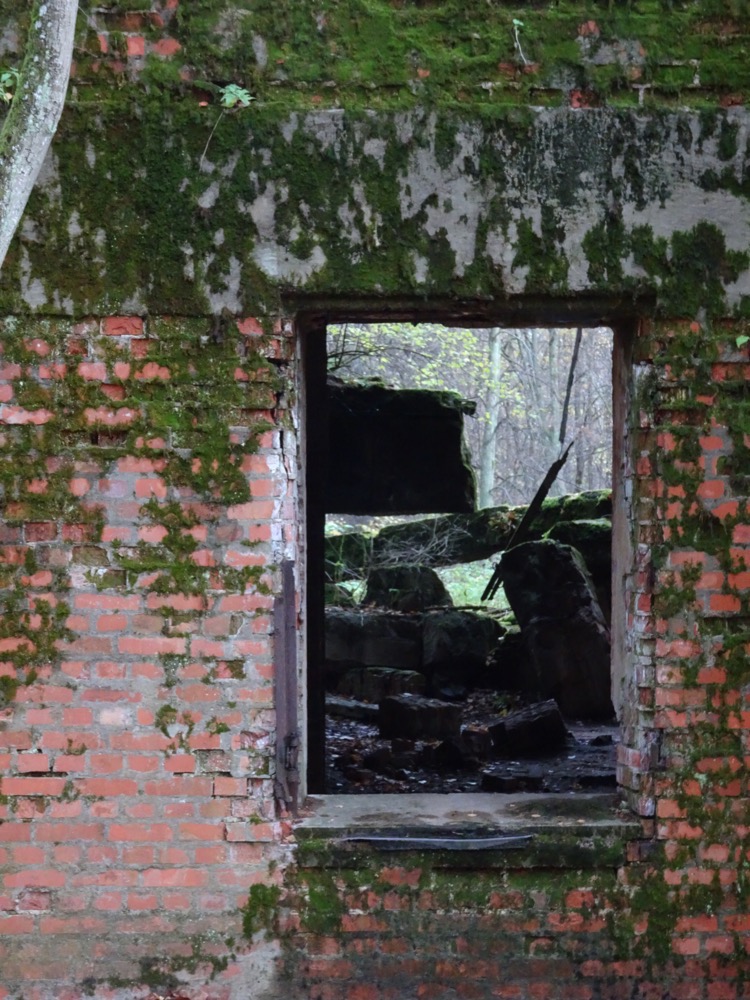
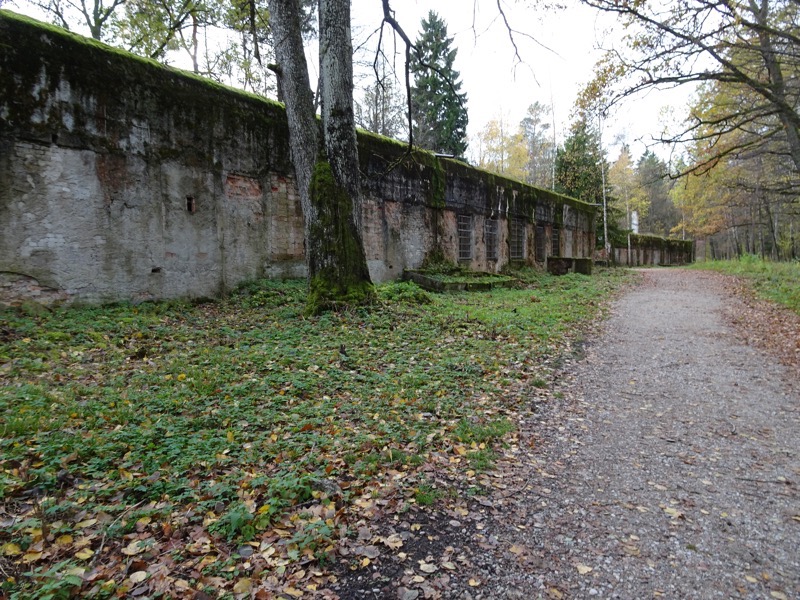
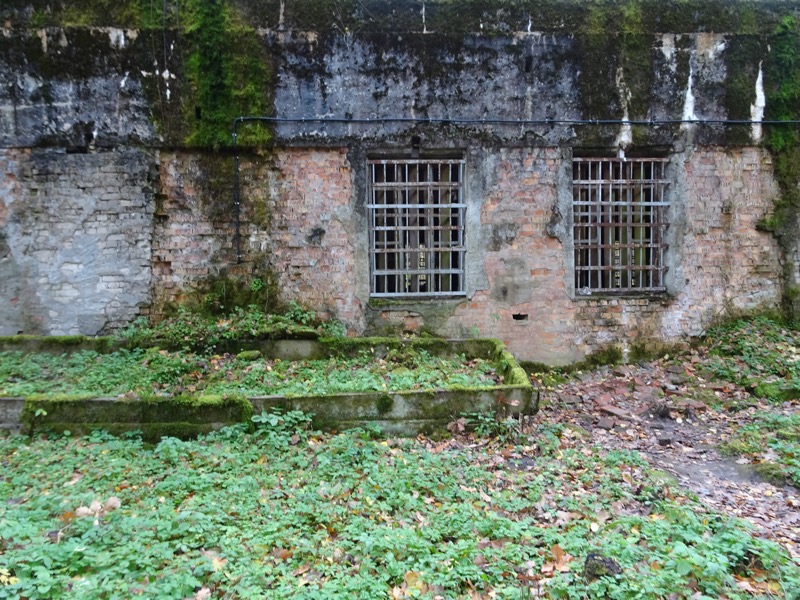 Ventilation shaft.
Ventilation shaft.
 Recreated checkpoint – there were only three entrances to the complex, and each one had a checkpoint at security zone.
Recreated checkpoint – there were only three entrances to the complex, and each one had a checkpoint at security zone.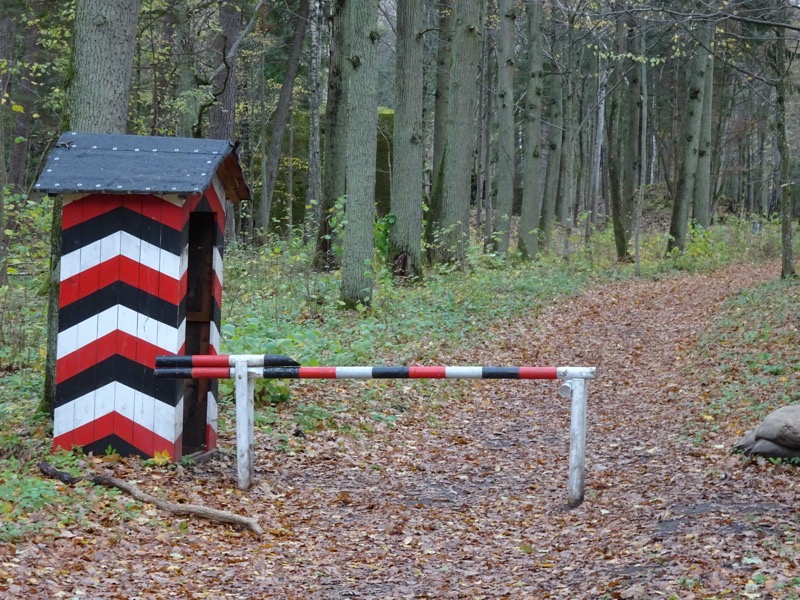 As we drove away from the Wolf’s Lair and my speed landscape photography attempted and failed to capture the forest, I couldn’t help but think that this area was once full of 54,000 landmines. Blurred and chaotic seems to work in this instance.
As we drove away from the Wolf’s Lair and my speed landscape photography attempted and failed to capture the forest, I couldn’t help but think that this area was once full of 54,000 landmines. Blurred and chaotic seems to work in this instance. The roads became noticeable worse as we were heading through tiny little villages making out way back to the major highways on our way to Gdansk. We were hurtling along doing an average of 90kmph on some of the shittiest single lane back roads ever – I was literally holding my boobs some of the way, because I didn’t know I was going to need a sports bra to go for a drive in the countryside! Mind you, the crap conditions of the road doesn’t slow the locals down one bit – they were overtaking us at alarming breakneck speeds.
The roads became noticeable worse as we were heading through tiny little villages making out way back to the major highways on our way to Gdansk. We were hurtling along doing an average of 90kmph on some of the shittiest single lane back roads ever – I was literally holding my boobs some of the way, because I didn’t know I was going to need a sports bra to go for a drive in the countryside! Mind you, the crap conditions of the road doesn’t slow the locals down one bit – they were overtaking us at alarming breakneck speeds.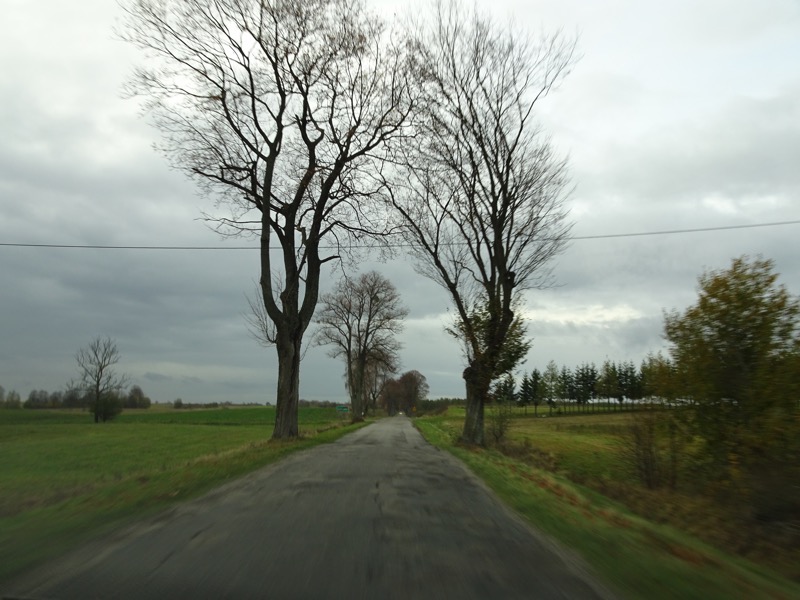 Honestly – we were doing just over 90kmph when this video was taken…
Honestly – we were doing just over 90kmph when this video was taken…
Eventually, we made our way back to the highway and then had to figure out how to get our car into the centre of Gdansk’s predominantly pedestrianised Old Town where our accommodation, the Aparthotel Neptun, is located. It was a little bit tricksy – you can approach the Old Town from many sides by car, but you can’t drive through the middle of it, so if your stupid GPS sends you to the wrong side and then suggests you drive the 100m to your hotel, right through the middle of people taking an evening stroll down the Long Market, you really need to back out and then fight your way around to try and enter from a different direction. We only got pulled over by Police, once, so we thought we did okay.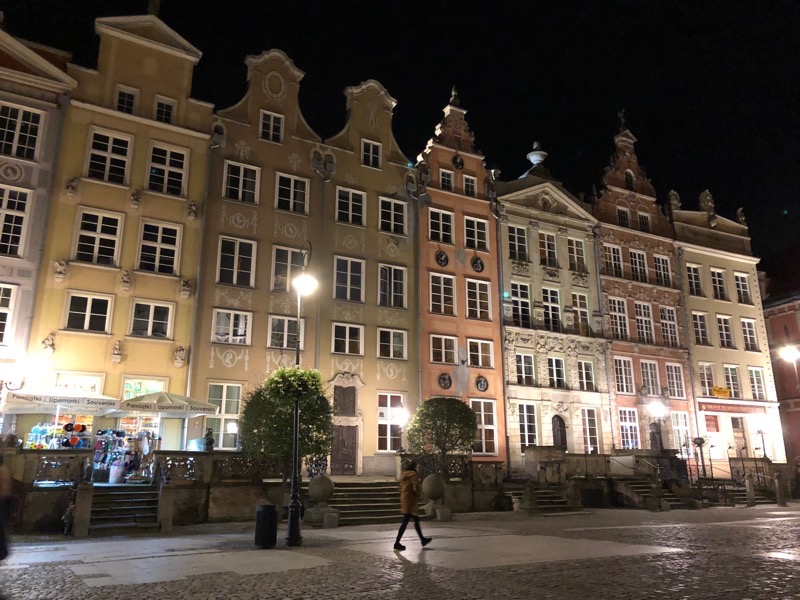 We checked in (nice hotel, actually) and then went straight back out again to find some dinner, as lunch was a dodgy service station hotdog many hours and several hundred kilometres ago. We wandered the Long Market and ended up at a restaurant called the ‘Latający Holender’ where we were met with some of the best food, but worst customer service in Poland… which is saying something really because between here, Krakow, and Warsaw, I don’t think we have met any hospitality or retail staff who were in any way welcoming, hospitable or even a little bit friendly. It’s kinda to be expected I guess – end of the tourist season, god knows I’d be over the bloody tourists too… but take heed waitpeople – winter is coming, and then we will see who is missing the tourists, their foreign currencies and their tipping habits!
We checked in (nice hotel, actually) and then went straight back out again to find some dinner, as lunch was a dodgy service station hotdog many hours and several hundred kilometres ago. We wandered the Long Market and ended up at a restaurant called the ‘Latający Holender’ where we were met with some of the best food, but worst customer service in Poland… which is saying something really because between here, Krakow, and Warsaw, I don’t think we have met any hospitality or retail staff who were in any way welcoming, hospitable or even a little bit friendly. It’s kinda to be expected I guess – end of the tourist season, god knows I’d be over the bloody tourists too… but take heed waitpeople – winter is coming, and then we will see who is missing the tourists, their foreign currencies and their tipping habits!
What was I saying? Dinner. Right. It was quite good actually and dining out now we are back in Poland, is cheap, cheap, cheap! I rarely used to photograph food for my blog, but then I found myself saying, ‘What was that thing we tried in Buenos Aires at that restaurant after we went to the place…?’ So now I am making more of an effort – so I can hunt down recipes back home for things we liked too.
After a bit of pfaffing around with tables, ‘Sit wherever you like’… we then take a seat and then it felt like the server was rolling his eyes at us and a ‘Why are they sitting there?’ type attitude ensued..?! We then waited for nearly ten minutes for menus … about halfway through what seemed an interminably long wait for a menu I said, ‘I think they are hoping we will give up and leave, but they have underestimated my current mood!’ We then waited again for ages to get drinks… part of this sense of waiting stemmed from watching the servers all gathering not far from our table and seemingly hanging out and chatting with each other instead of filling drink orders and seating customers, etc?! I dunno, the disdain was coming off them in waves – but hopefully not just in our direction. 😛
I ordered for an appetiser – Tiger prawns cooked in butter, onion, chili, fresh parsley, white wine and served with garlic bread… it was pretty fabulous. and yale ordered the Goulash soup – which was rather more watery and somewhat oilier than he had hoped. So that one was a bit hit and miss.
and yale ordered the Goulash soup – which was rather more watery and somewhat oilier than he had hoped. So that one was a bit hit and miss.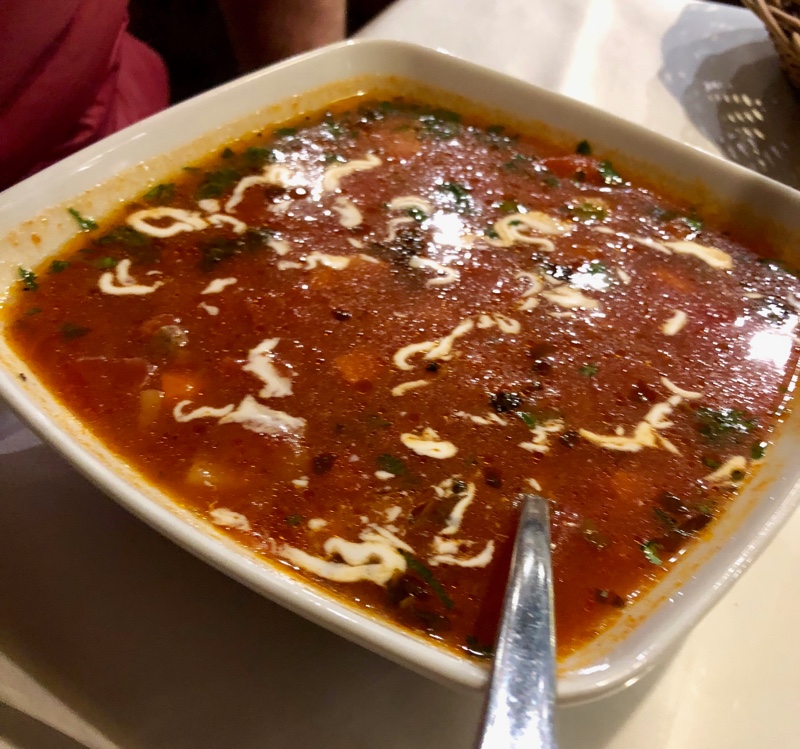 For a main, I ordered the Grilled salmon with roasted potatoes, green asparagus, butter sauce and caviar. Again, lovely though I usually prefer my salmon slightly more medium.
For a main, I ordered the Grilled salmon with roasted potatoes, green asparagus, butter sauce and caviar. Again, lovely though I usually prefer my salmon slightly more medium.
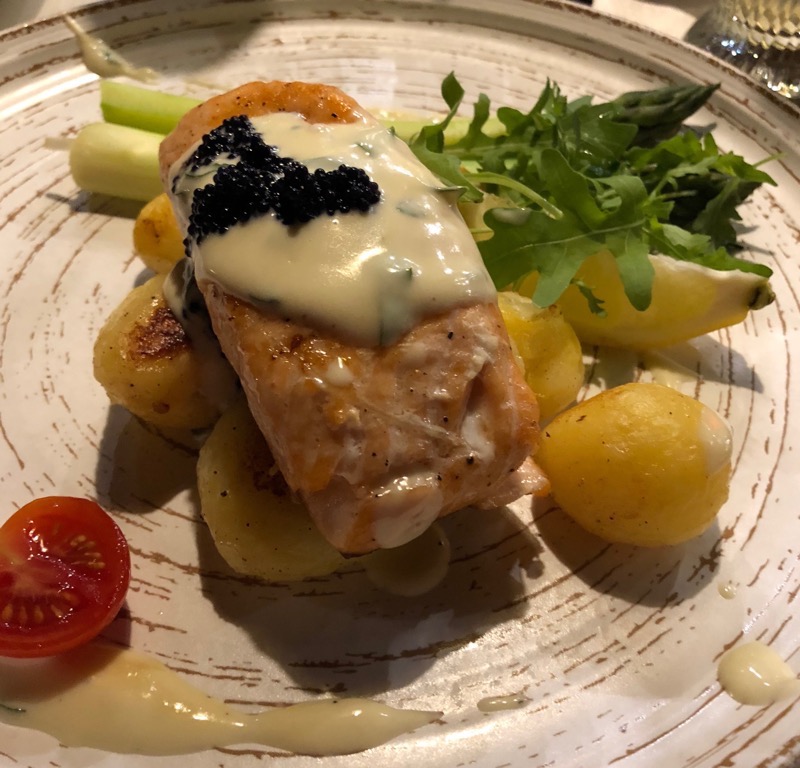 And yale seemed to commit some sort of unwritten ordering faux pas by having the audacity to order two dishes (he’s a big guy, he gets hungry), of Meat Dumplings, stuffed with beef and pork meat, smoked bacon, onion, arugula, and tomatoes. And a main dish called, Desk of Polish Sausage, comprising of a selection of Polish sausage served with bread, pickled cucumber, mustard and horseradish.
And yale seemed to commit some sort of unwritten ordering faux pas by having the audacity to order two dishes (he’s a big guy, he gets hungry), of Meat Dumplings, stuffed with beef and pork meat, smoked bacon, onion, arugula, and tomatoes. And a main dish called, Desk of Polish Sausage, comprising of a selection of Polish sausage served with bread, pickled cucumber, mustard and horseradish.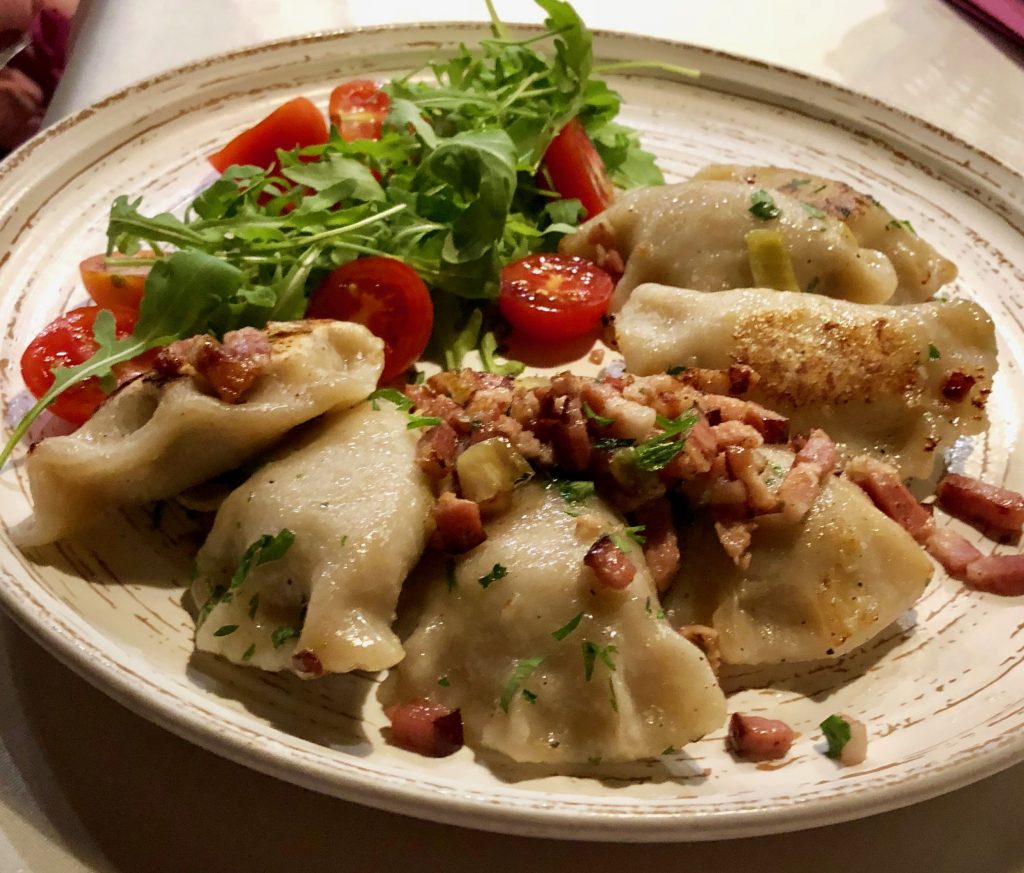 Well didn’t the little man have a ‘Two dinners? How could you? Wait, how will I serve them?’ moment over that. Like I said, weird service. Great food.
Well didn’t the little man have a ‘Two dinners? How could you? Wait, how will I serve them?’ moment over that. Like I said, weird service. Great food.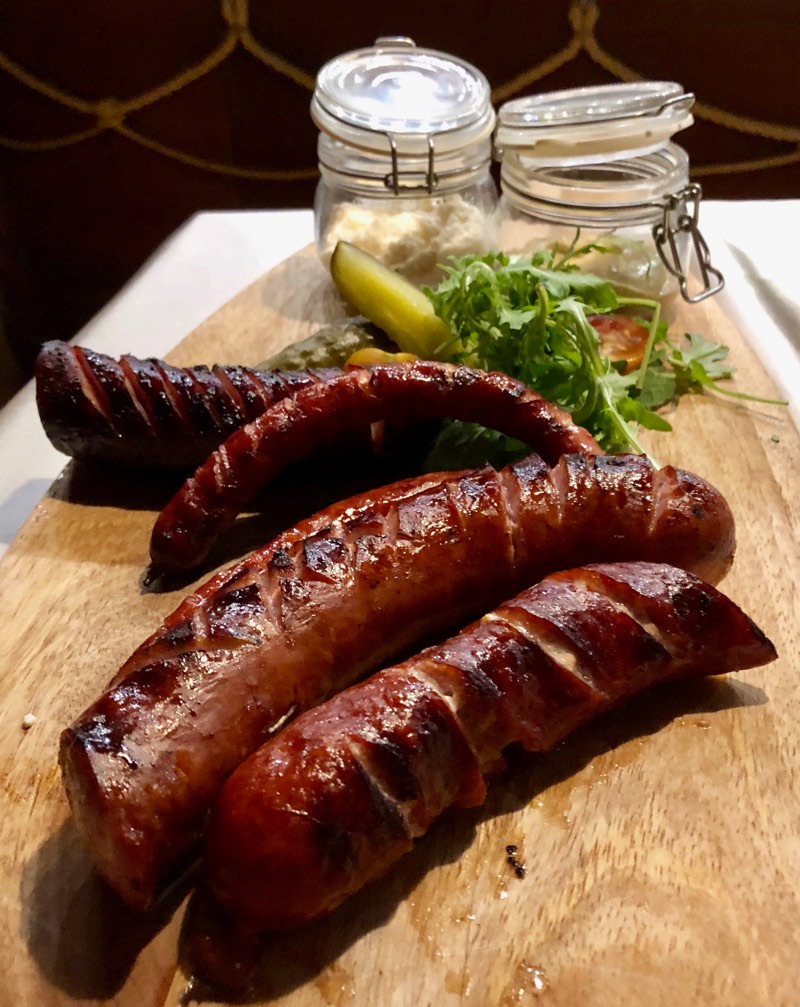 A few happy ciders later and we didn’t much care either way for the server’s attitude anyway. Dinner was nice, but I wouldn’t recommend it unless you like being treated like an inconvenience by the staff. 😛
A few happy ciders later and we didn’t much care either way for the server’s attitude anyway. Dinner was nice, but I wouldn’t recommend it unless you like being treated like an inconvenience by the staff. 😛
What a long, long day. Tomorrow – Gdansk!

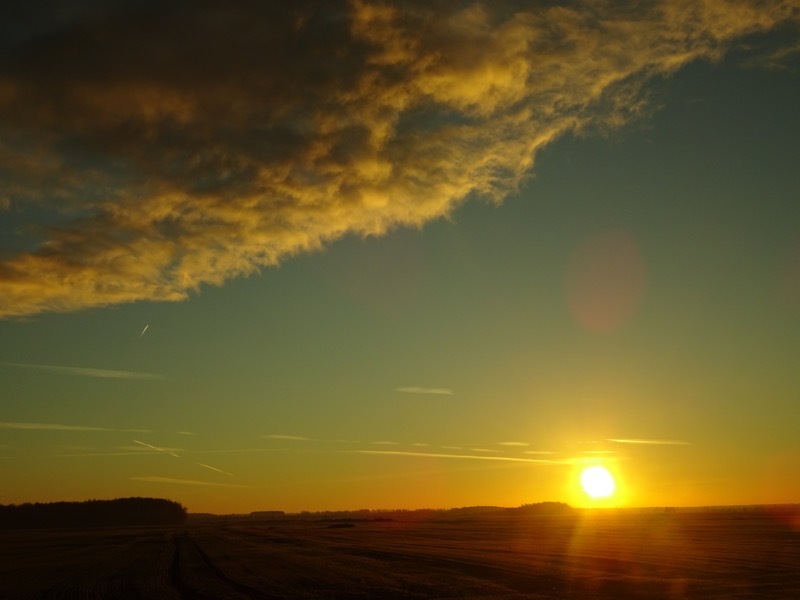 Once the sun was, up however, the darkness dissipated and showed us a foggy and potentially drizzly day ahead. It was very moody as we pummelled through the landscape in our trusty Ford Fuckus.
Once the sun was, up however, the darkness dissipated and showed us a foggy and potentially drizzly day ahead. It was very moody as we pummelled through the landscape in our trusty Ford Fuckus.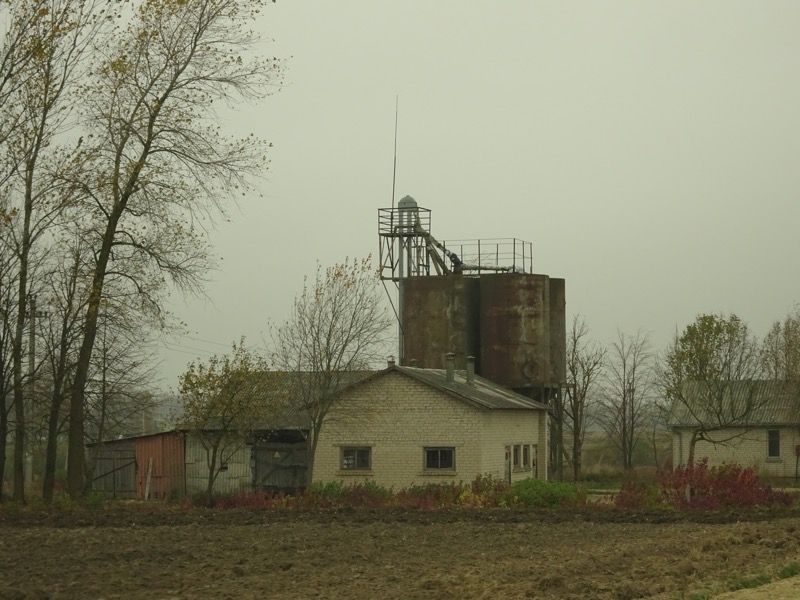
 Turns out it was a ‘Kompresorius’… but we won’t let that get in the way of yale looking ridiculous for our entertainment. We checked the tyres and acquired a hot chocolate (this one actually being hot-hot, unlike the last one which was left 90% unconsumed on a table with a note saying “THIS IS NOT HOT!” at a previous pit stop).
Turns out it was a ‘Kompresorius’… but we won’t let that get in the way of yale looking ridiculous for our entertainment. We checked the tyres and acquired a hot chocolate (this one actually being hot-hot, unlike the last one which was left 90% unconsumed on a table with a note saying “THIS IS NOT HOT!” at a previous pit stop). Check out these unsightly erections dotting the landscape, ruining the views.
Check out these unsightly erections dotting the landscape, ruining the views.
 The Hill of Crosses is about 12 km north of the city of Šiauliai, in the north of Lithuania, about an 80-90 min out of Vilnius. The actual origin of the practice of leaving crosses on this particular hill has been obscured by the passing of time, but it is thought that the first crosses appeared on the site of the former Jurgaičiai or Domantai hill fort after the famed 1831 Uprising (for those that are unfamiliar with the 1831 Uprising it was also known as the Polish-Russian War of 1830-1831. It was an armed rebellion by the Polish against the Russian Empire, which the Russians roundly won.
The Hill of Crosses is about 12 km north of the city of Šiauliai, in the north of Lithuania, about an 80-90 min out of Vilnius. The actual origin of the practice of leaving crosses on this particular hill has been obscured by the passing of time, but it is thought that the first crosses appeared on the site of the former Jurgaičiai or Domantai hill fort after the famed 1831 Uprising (for those that are unfamiliar with the 1831 Uprising it was also known as the Polish-Russian War of 1830-1831. It was an armed rebellion by the Polish against the Russian Empire, which the Russians roundly won.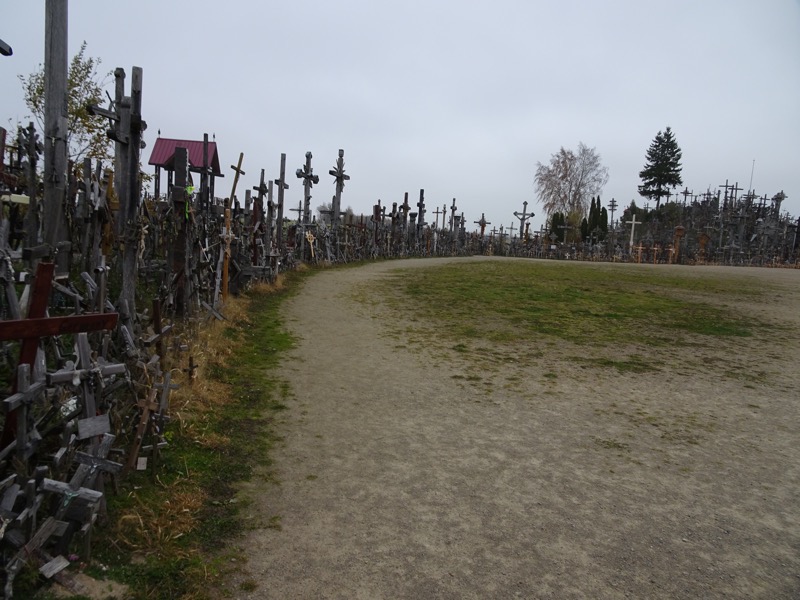
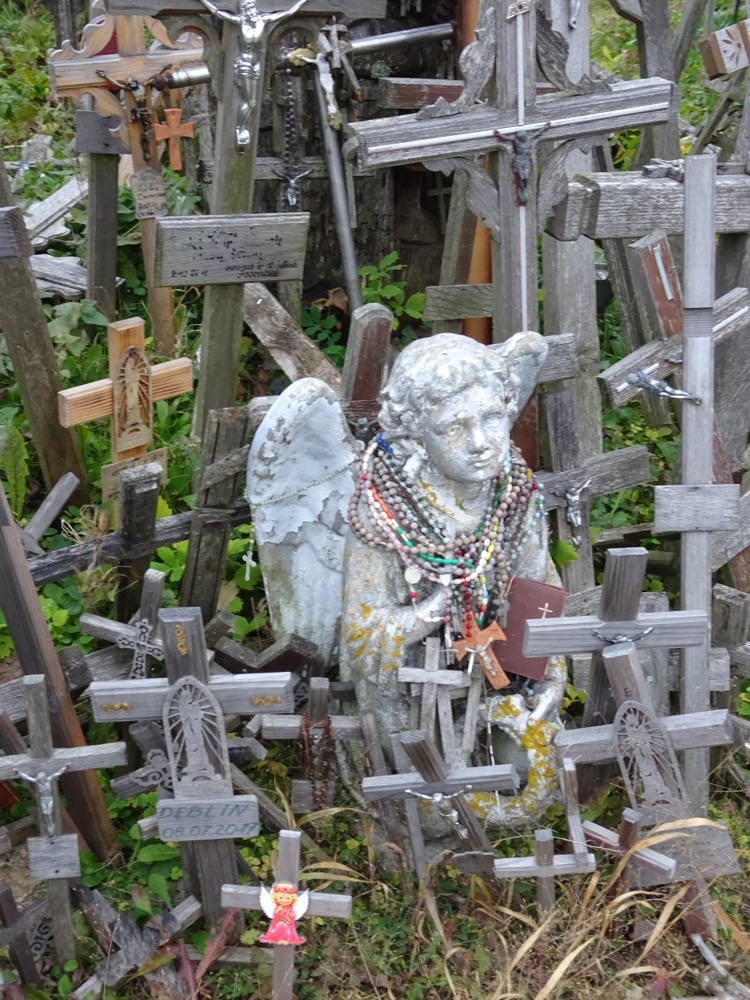
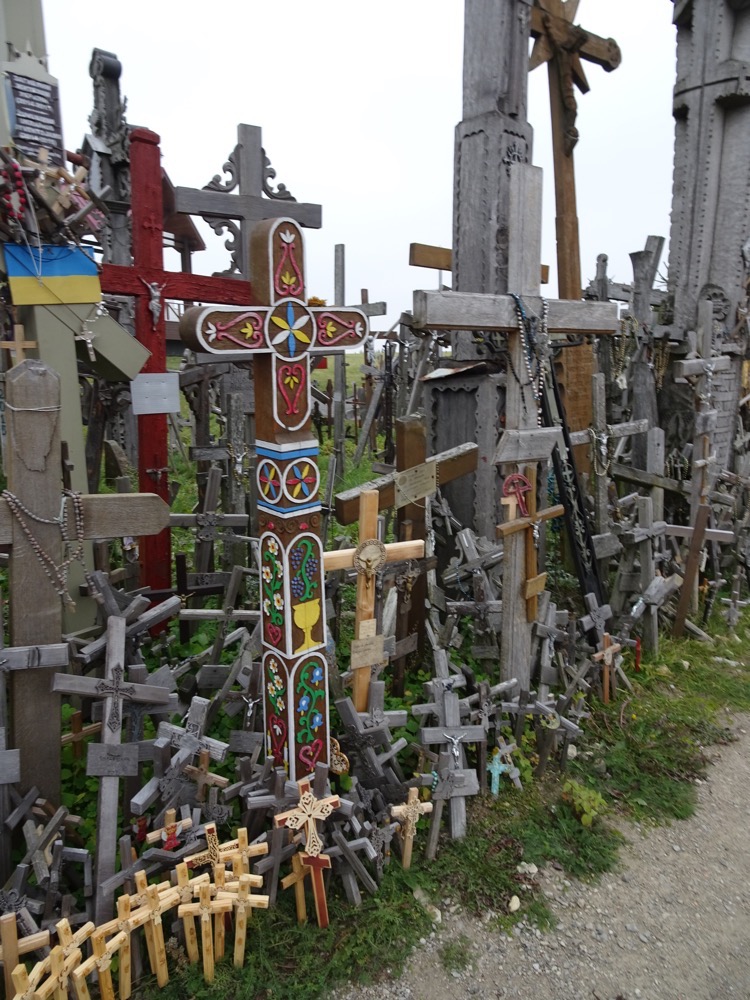 After Lithuania became part of the Russian Empire, both the Poles and Lithuanians unsuccessfully rebelled against Russian authorities in 1831 and again in 1863. These two uprisings are connected with the beginnings of the cross on the hill. Many families could not locate the bodies of their cherished loved ones and lost rebels, so they started placing their memorials here in the form of symbolic crosses where there had been a former hill fort.
After Lithuania became part of the Russian Empire, both the Poles and Lithuanians unsuccessfully rebelled against Russian authorities in 1831 and again in 1863. These two uprisings are connected with the beginnings of the cross on the hill. Many families could not locate the bodies of their cherished loved ones and lost rebels, so they started placing their memorials here in the form of symbolic crosses where there had been a former hill fort.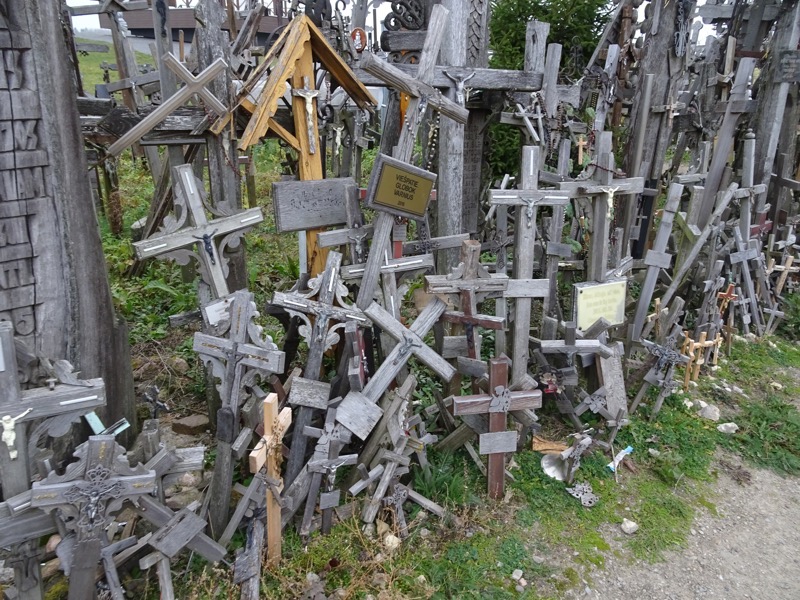 When the old political structure of the Russian Empire in Eastern Europe fell apart in 1918, Lithuania once again attempted to declare its independence. Throughout all this time from 1830 to 1918, the Hill of Crosses became a place for Lithuanians to pray for peace, for the stability and independence of their country, and for their lost loved ones during the Wars of Independence.
When the old political structure of the Russian Empire in Eastern Europe fell apart in 1918, Lithuania once again attempted to declare its independence. Throughout all this time from 1830 to 1918, the Hill of Crosses became a place for Lithuanians to pray for peace, for the stability and independence of their country, and for their lost loved ones during the Wars of Independence.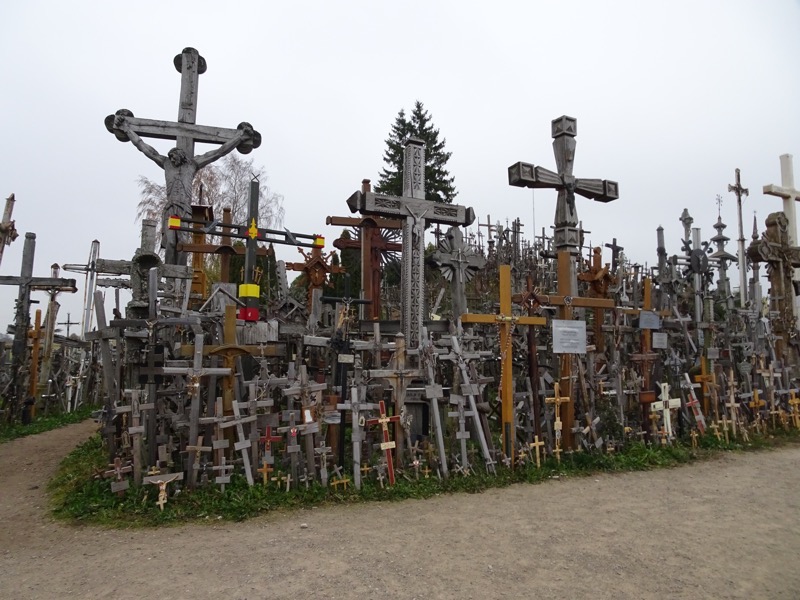 The site took on an even more historic significance during the years 1944–1990 if that were possible, while Lithuania was occupied by the Soviet Union. People continued to travel to the Hill and leave their crosses and memorials and for Lithuanians, this place signified their original national identity, their religion, heritage and culture. It became a place not just of memorialising those who were lost, but also a powerful place of peaceful resistance. The Soviets authorities repeatedly worked hard to remove the crosses and tried to remove the symbolism of the sit – even bulldozed the entire site on at least three separate occasions as recently as 1963 and 1973, but the crosses continued to reappear. Apparently, the Soviets even considered building a damn on the nearby Kulvė River, so that the hill would end up underwater, but this never came to pass.
The site took on an even more historic significance during the years 1944–1990 if that were possible, while Lithuania was occupied by the Soviet Union. People continued to travel to the Hill and leave their crosses and memorials and for Lithuanians, this place signified their original national identity, their religion, heritage and culture. It became a place not just of memorialising those who were lost, but also a powerful place of peaceful resistance. The Soviets authorities repeatedly worked hard to remove the crosses and tried to remove the symbolism of the sit – even bulldozed the entire site on at least three separate occasions as recently as 1963 and 1973, but the crosses continued to reappear. Apparently, the Soviets even considered building a damn on the nearby Kulvė River, so that the hill would end up underwater, but this never came to pass.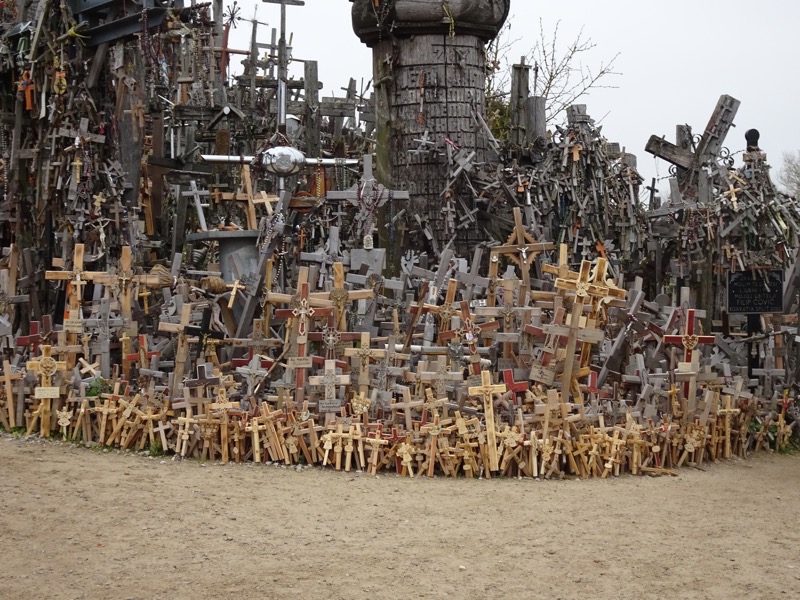 Now, there are more crosses here than ever, and the site represents the solidarity and steadfastness with which the Lithuanian people held out for independence from the Russian Empire and then Soviet Union for over a century.
Now, there are more crosses here than ever, and the site represents the solidarity and steadfastness with which the Lithuanian people held out for independence from the Russian Empire and then Soviet Union for over a century.
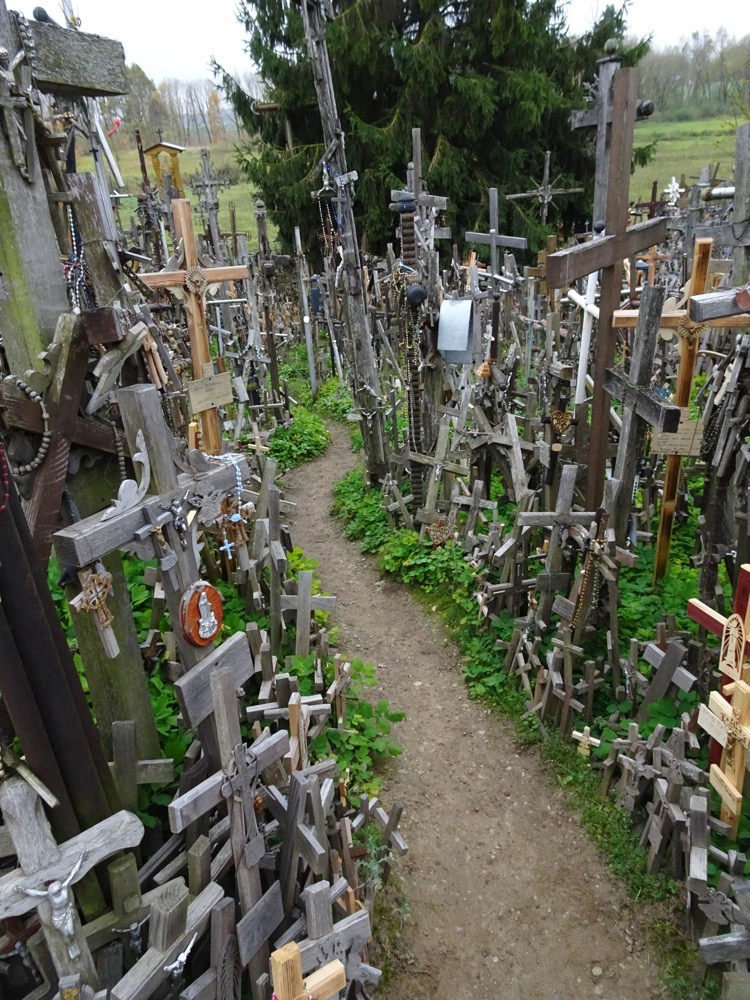 The hill is a quiet, mournful sort of place. Particularly so on a day like today when there was no one here but ourselves and we could hear the rosaries tinkling in the wind like chimes trying to tell stories of all these lost souls.
The hill is a quiet, mournful sort of place. Particularly so on a day like today when there was no one here but ourselves and we could hear the rosaries tinkling in the wind like chimes trying to tell stories of all these lost souls.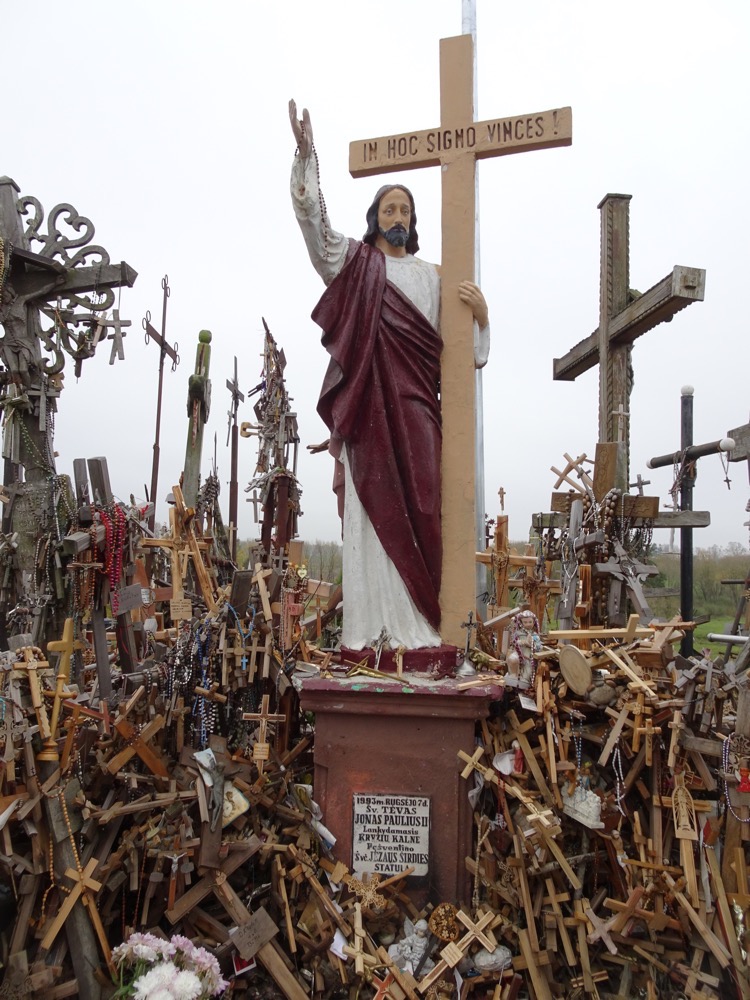
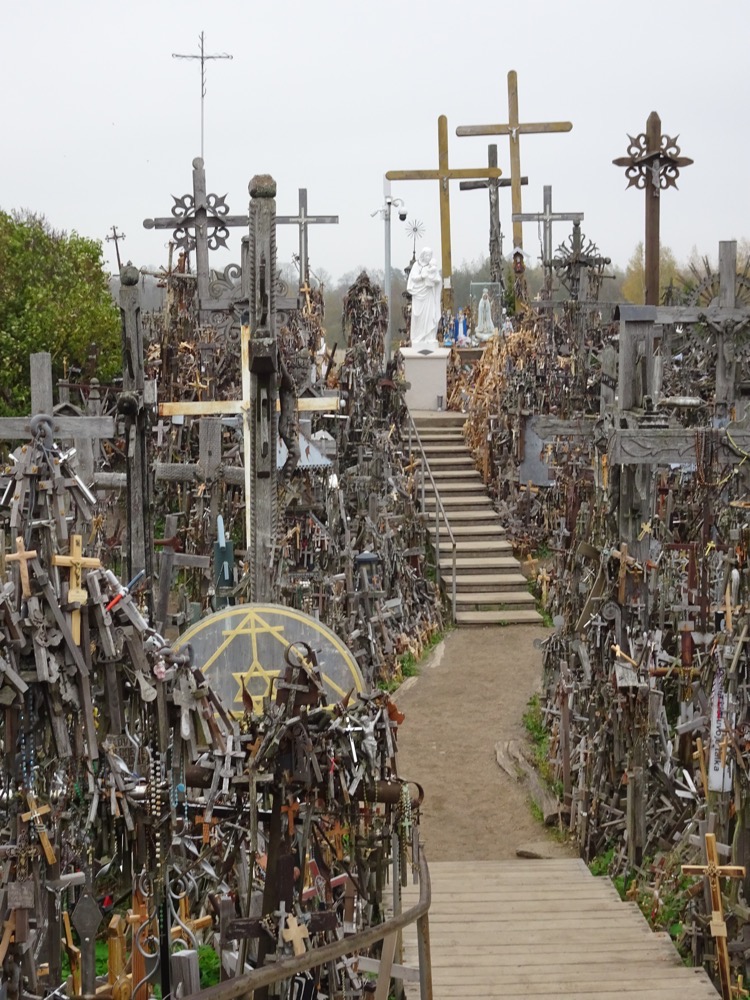
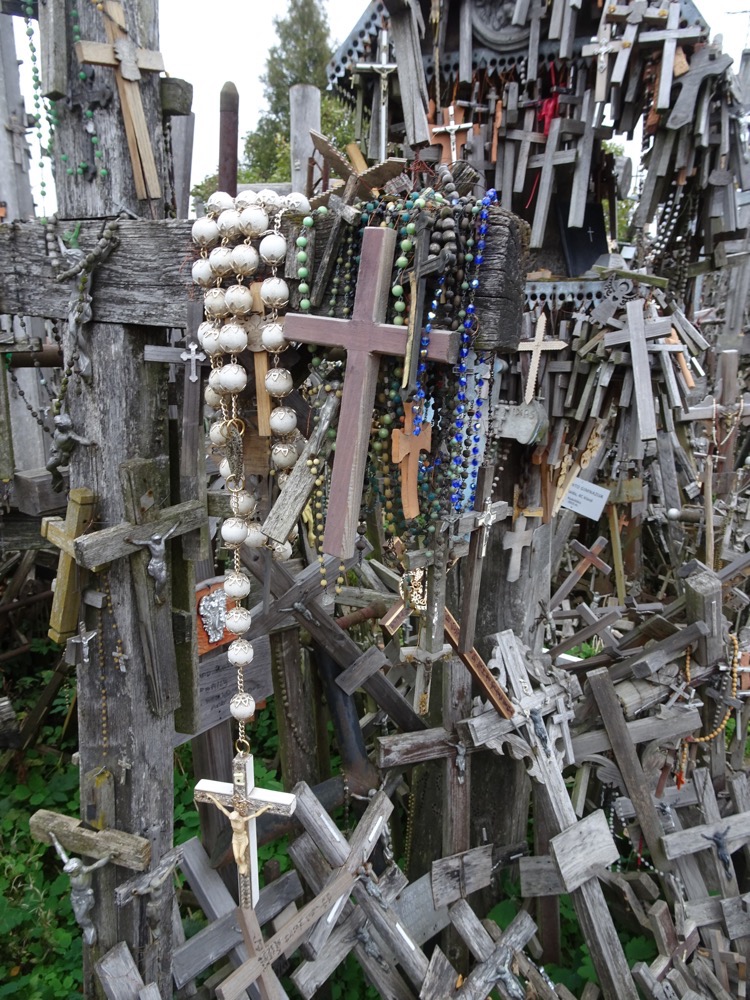
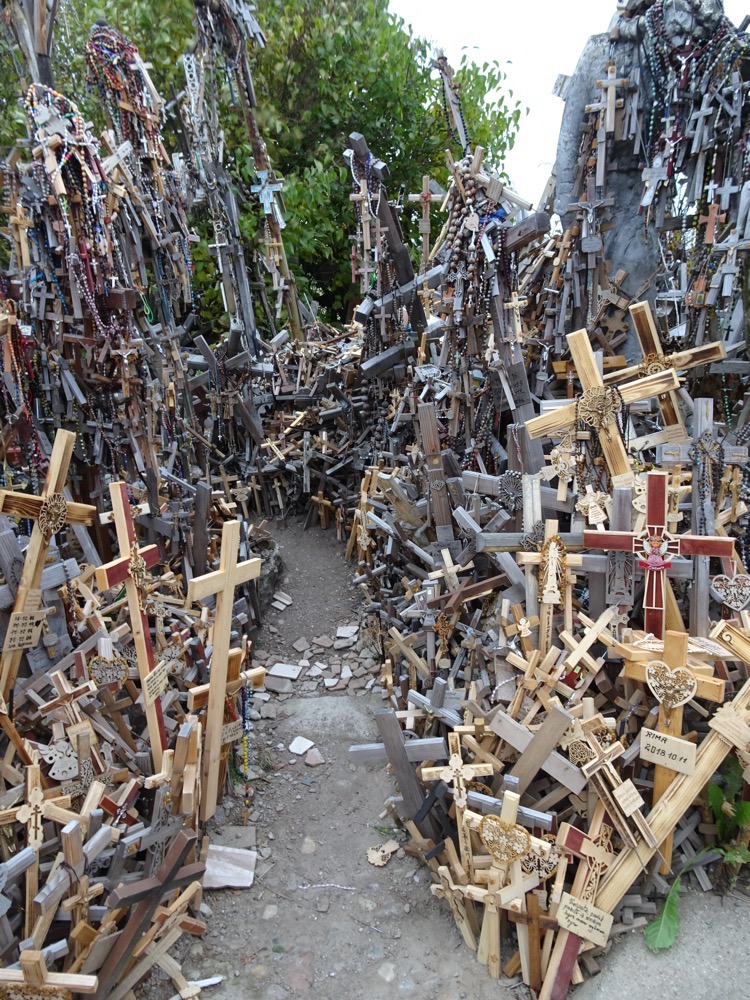
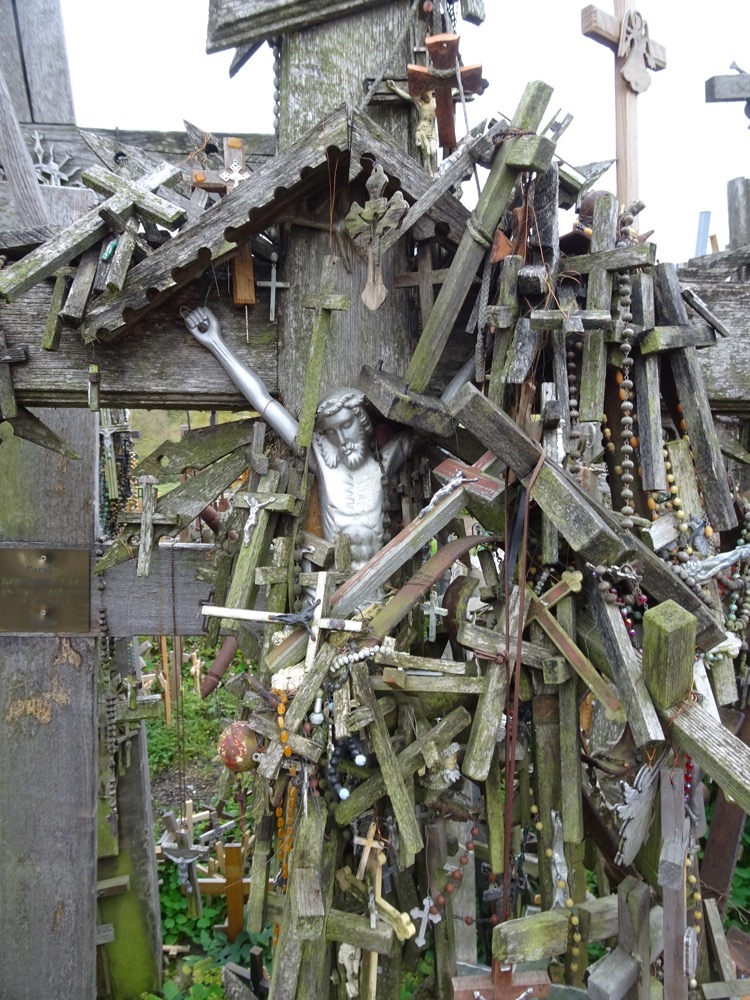 I took ever so many photographs, it is hard to encapsulate the sheer volume of crosses – each one carrying a story of a pilgrim and a lost loved one.
I took ever so many photographs, it is hard to encapsulate the sheer volume of crosses – each one carrying a story of a pilgrim and a lost loved one.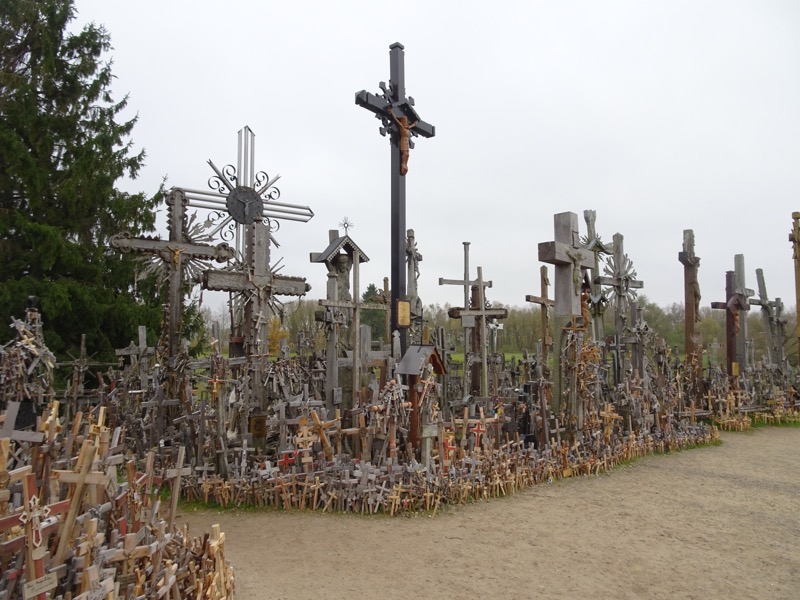 After we left the Hill of Crosses, we head off into blue skies and crazy cloud formations for the afternoon. In amongst blogging about yesterday, I was constantly staring out the window at these amazing clouds and the beautiful contrast in colours between the blue skies, the fluffy white clouds, the lush green grass and the yellow autumn leaves. My speed landscape photography is improving every day!
After we left the Hill of Crosses, we head off into blue skies and crazy cloud formations for the afternoon. In amongst blogging about yesterday, I was constantly staring out the window at these amazing clouds and the beautiful contrast in colours between the blue skies, the fluffy white clouds, the lush green grass and the yellow autumn leaves. My speed landscape photography is improving every day! Ooh look, lots of military vehicles and suddenly lo’ and behold another unmanned border between Lithuania and Latvia.
Ooh look, lots of military vehicles and suddenly lo’ and behold another unmanned border between Lithuania and Latvia.


 Look at this, I mean look at it:
Look at this, I mean look at it: 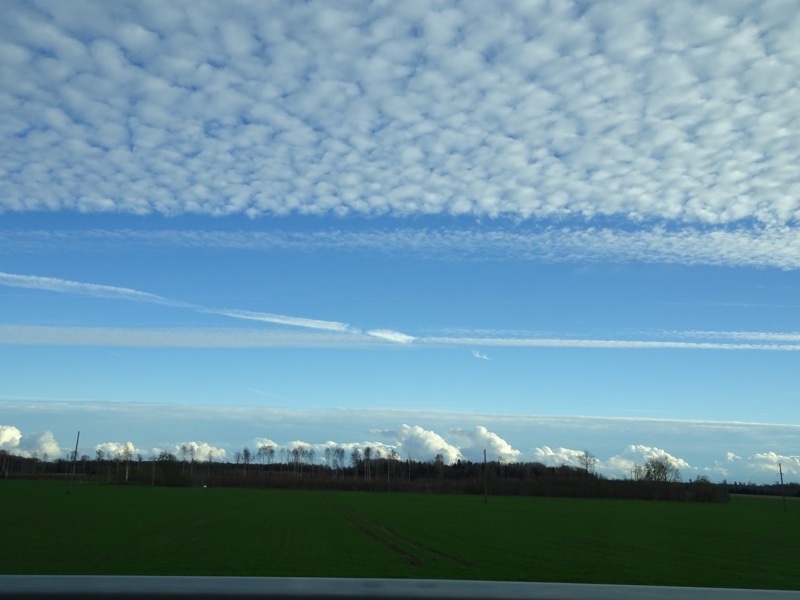 God bless the 4Gs. <3
God bless the 4Gs. <3 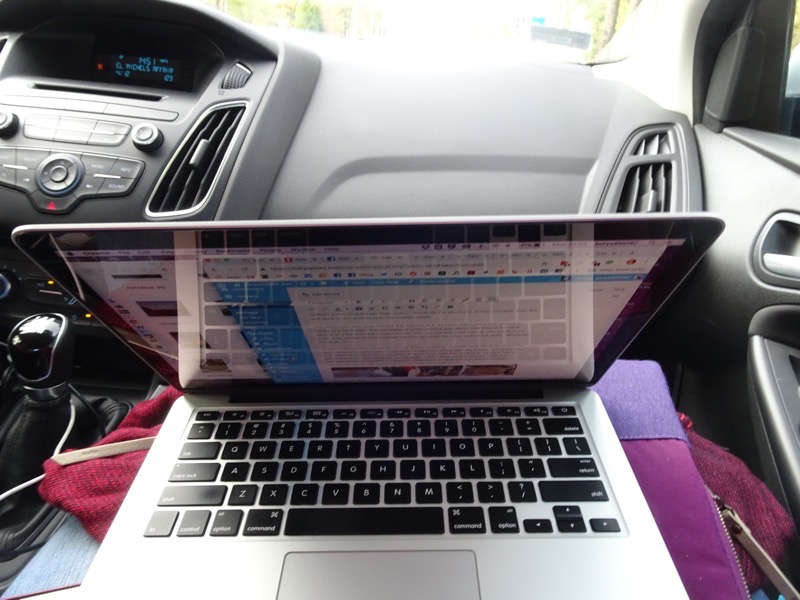
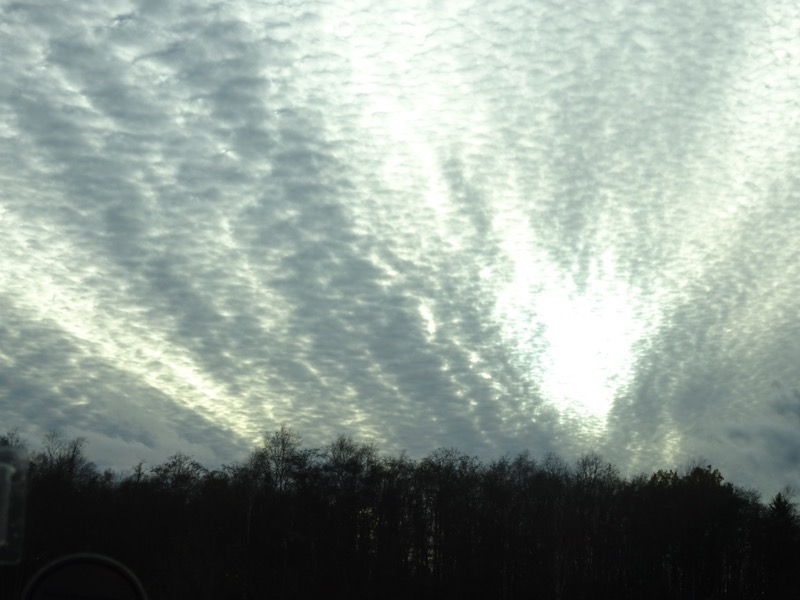
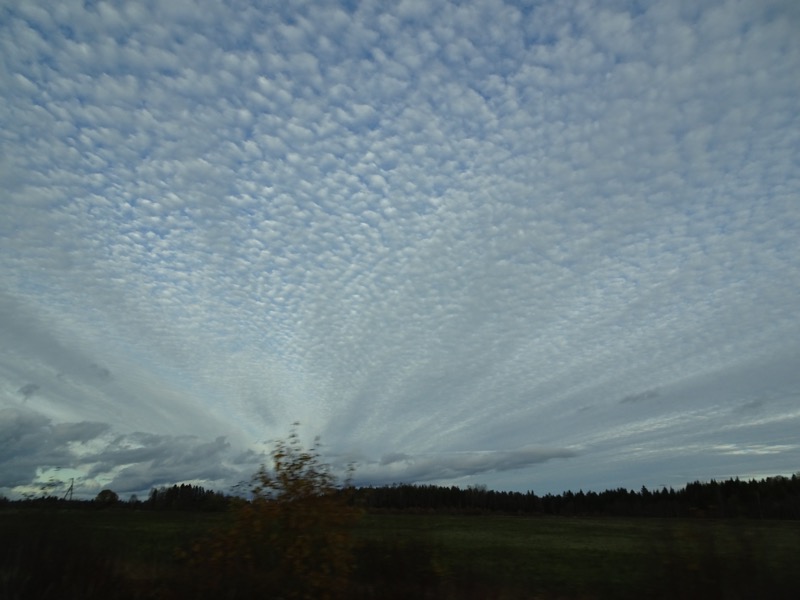
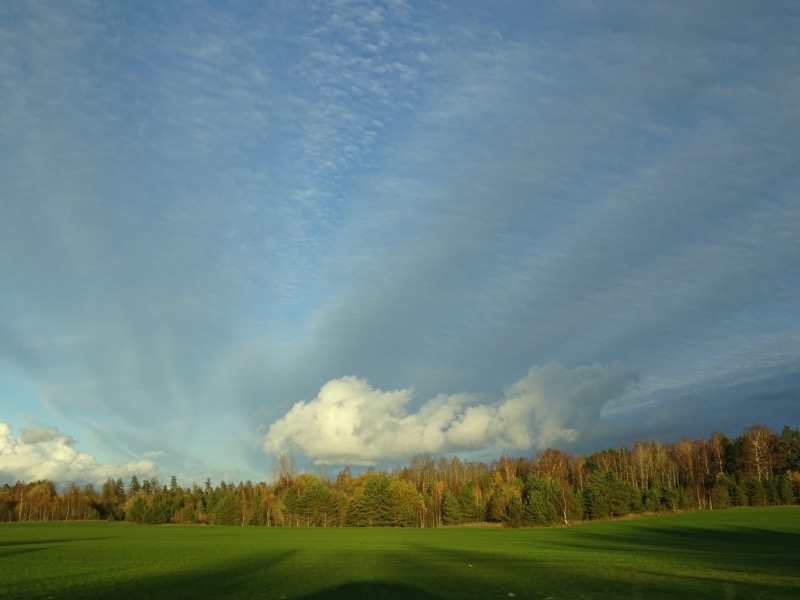 Stunning landscapes as we drove through the Lithuanian and subsequently Estonian countryside. Here lies the real benefit of not flying.
Stunning landscapes as we drove through the Lithuanian and subsequently Estonian countryside. Here lies the real benefit of not flying.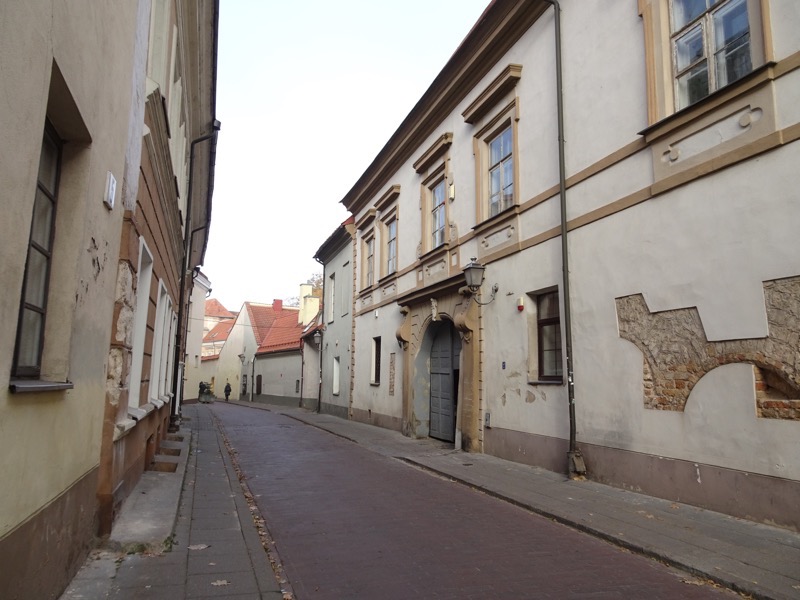 First area we head towards was towards the Vilnius Cathedral where we first encountered Gediminas. I thought he was King Gediminas but apparently no, he was Grand Duke Gediminas of Lithuania (c1275 – 1341) which is a pretty fancy title imho. Gediminas is believed to have founded the political entity that was Lithuania and is credited with expanding its territories from the Baltic to the Black Sea. He is one of the most important persons in early Lithuanian histor – he built the capital, Vilnius, and establishing a dynasty that at one point ruled over parts of Poland, Hungary and Bohemia.
First area we head towards was towards the Vilnius Cathedral where we first encountered Gediminas. I thought he was King Gediminas but apparently no, he was Grand Duke Gediminas of Lithuania (c1275 – 1341) which is a pretty fancy title imho. Gediminas is believed to have founded the political entity that was Lithuania and is credited with expanding its territories from the Baltic to the Black Sea. He is one of the most important persons in early Lithuanian histor – he built the capital, Vilnius, and establishing a dynasty that at one point ruled over parts of Poland, Hungary and Bohemia.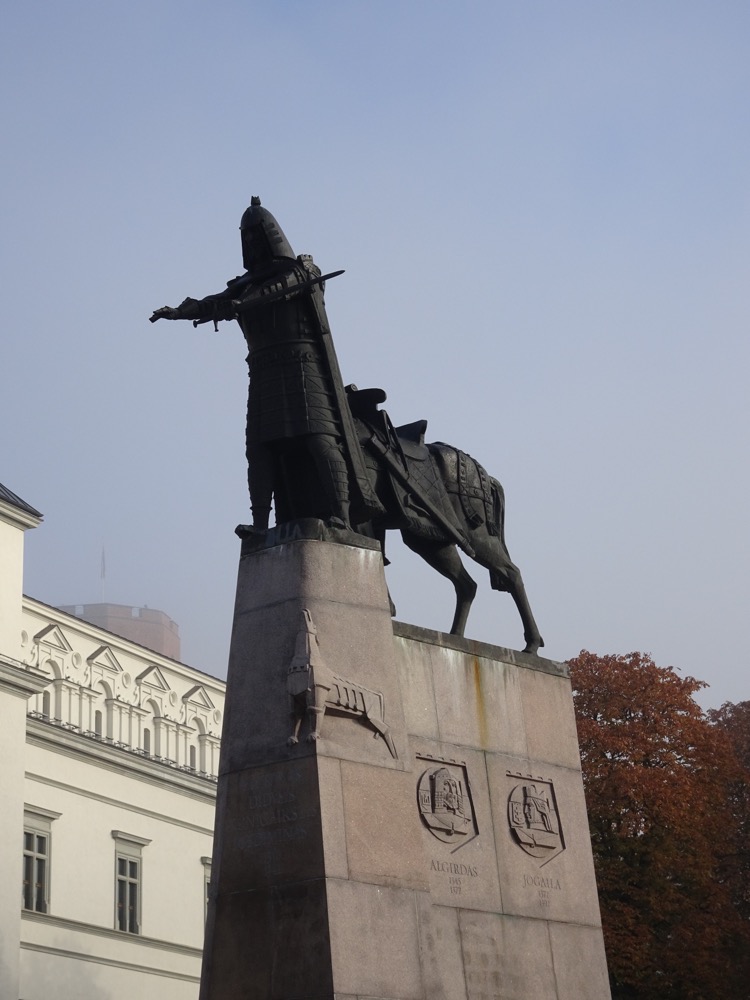 Nearby is the The Cathedral Basilica of St Stanislaus and St Ladislaus of Vilnius or the Vilnius Cathedral which is the main Roman Catholic Cathedral of Lithuania and considered the heart of the church and Catholicism Lithuania.
Nearby is the The Cathedral Basilica of St Stanislaus and St Ladislaus of Vilnius or the Vilnius Cathedral which is the main Roman Catholic Cathedral of Lithuania and considered the heart of the church and Catholicism Lithuania.
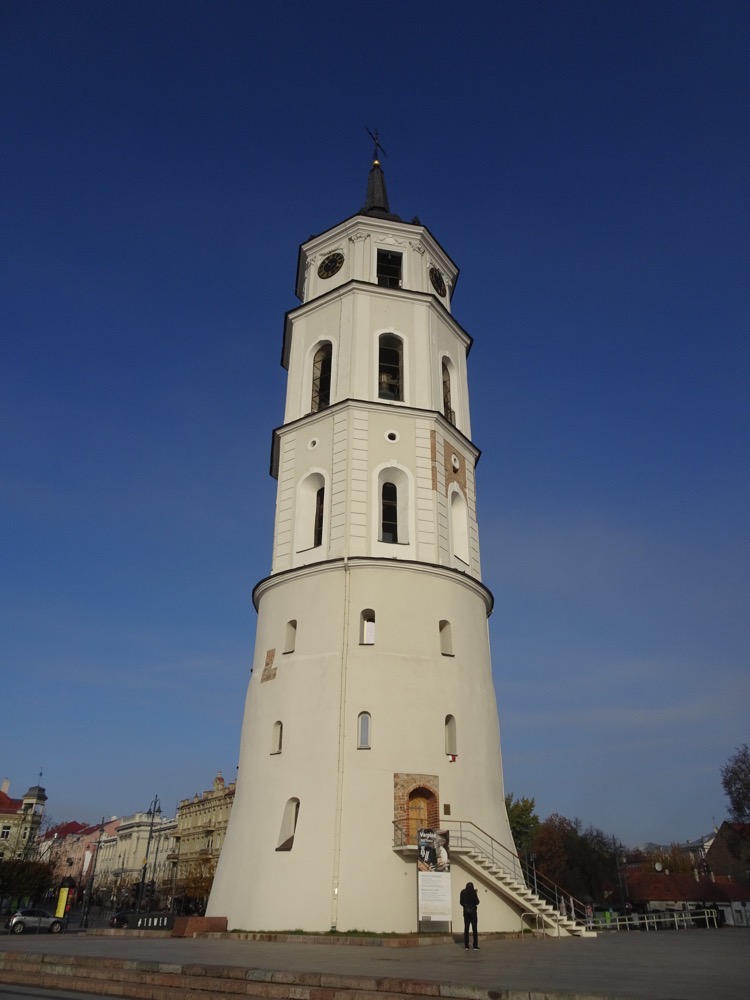
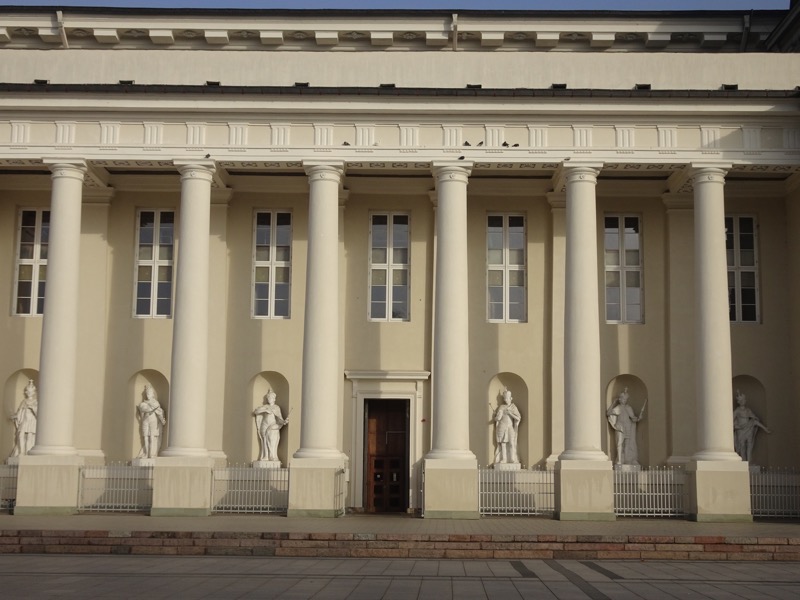
 It is thought that the Lithuanian King Mindaugas (he first known Grand Duke of Lithuania and the only King of Lithuania) ordered the construction of the first cathedral on this site in 1251, after he converted to Christianity and appointed a bishop to Lithuania. Remains of an archaic quadratic church with three naves and massive buttresses were discovered beneath the current structure in the late 20th century. After Mindaugas karked it however, in 1263, that cathedral went back to being a place of pagan worship again.
It is thought that the Lithuanian King Mindaugas (he first known Grand Duke of Lithuania and the only King of Lithuania) ordered the construction of the first cathedral on this site in 1251, after he converted to Christianity and appointed a bishop to Lithuania. Remains of an archaic quadratic church with three naves and massive buttresses were discovered beneath the current structure in the late 20th century. After Mindaugas karked it however, in 1263, that cathedral went back to being a place of pagan worship again. 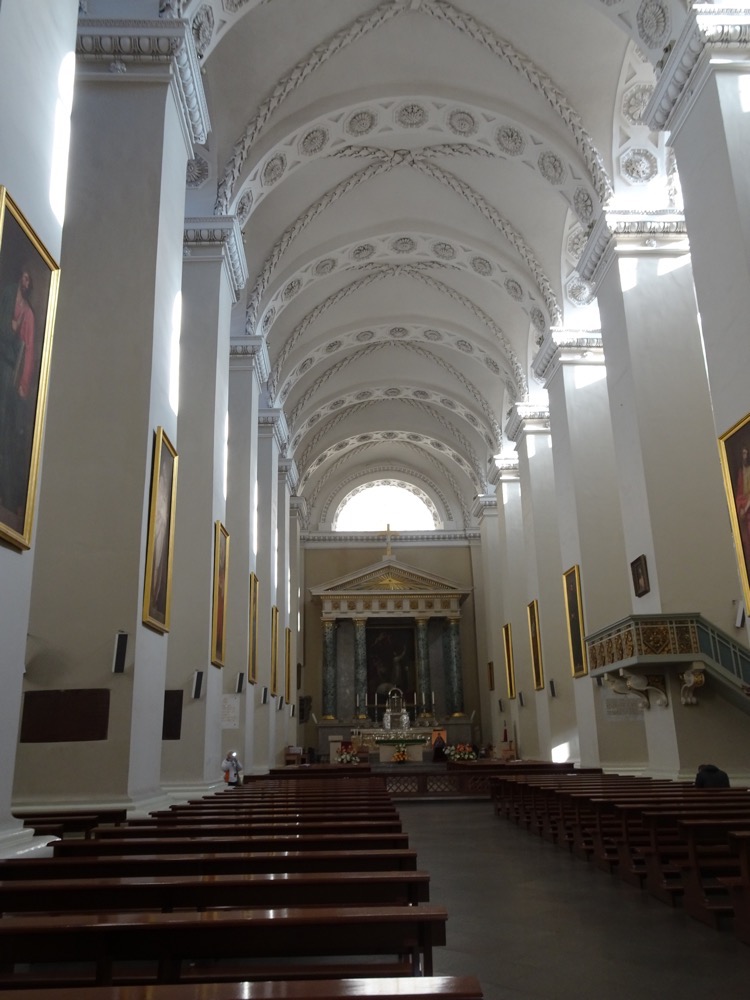 This being Europe and all, the cathedral has a convoluted history. Around 1387, Lithuania officially converted to Christianity, they started building a second larger Gothic cathedral with five separate chapels. This one burnt down in 1419 and they planned a new larger Gothic cathedral in 1429 for the coronation of Vytautas who was suppposed to become King of Lithuania. His coronation never happened but the walls and pillars of that third Cathedral have survived to today and it has three naves and four circular towers at its corners. In 1522, the cathedral was renovated, and a bell tower was built outside on top of an old castle defensive tower. Another fire destroyed the cathedral in 1530, so it was rebuilt again around1534 – 1557 and more chapels and crypts were added. The cathedral was burnt again, built again, fell to Russian troops, was destroyed and restored several more times by more famous dukes and kings… and all that before the Soviets got hold of it in the 20th century.
This being Europe and all, the cathedral has a convoluted history. Around 1387, Lithuania officially converted to Christianity, they started building a second larger Gothic cathedral with five separate chapels. This one burnt down in 1419 and they planned a new larger Gothic cathedral in 1429 for the coronation of Vytautas who was suppposed to become King of Lithuania. His coronation never happened but the walls and pillars of that third Cathedral have survived to today and it has three naves and four circular towers at its corners. In 1522, the cathedral was renovated, and a bell tower was built outside on top of an old castle defensive tower. Another fire destroyed the cathedral in 1530, so it was rebuilt again around1534 – 1557 and more chapels and crypts were added. The cathedral was burnt again, built again, fell to Russian troops, was destroyed and restored several more times by more famous dukes and kings… and all that before the Soviets got hold of it in the 20th century.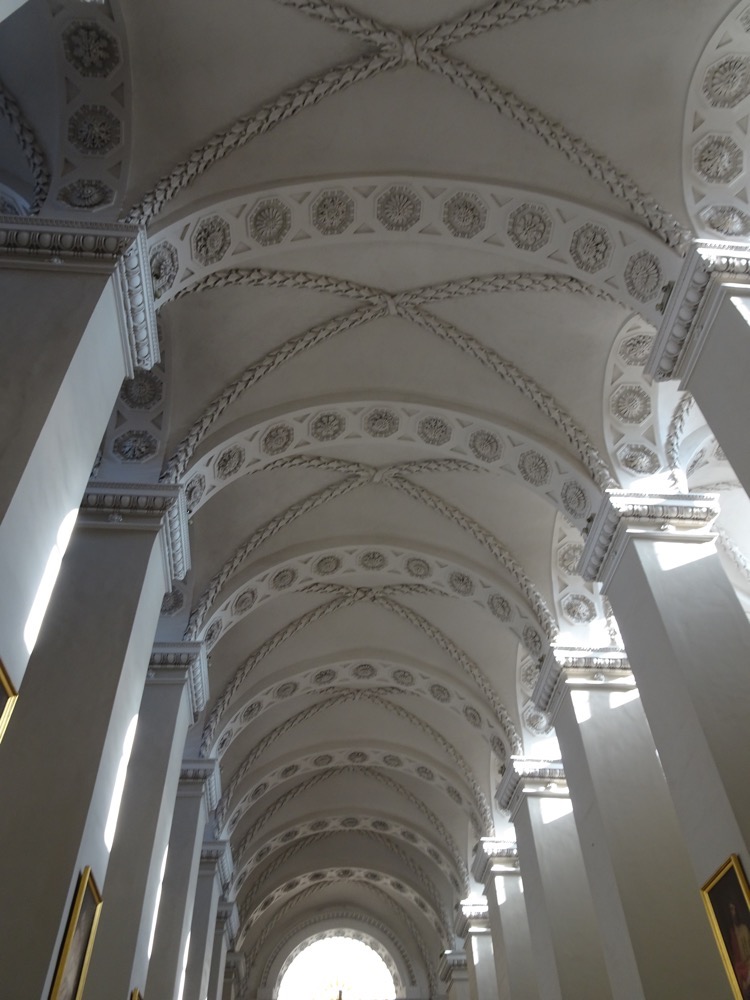 Chapel of Saint Casimir:
Chapel of Saint Casimir:
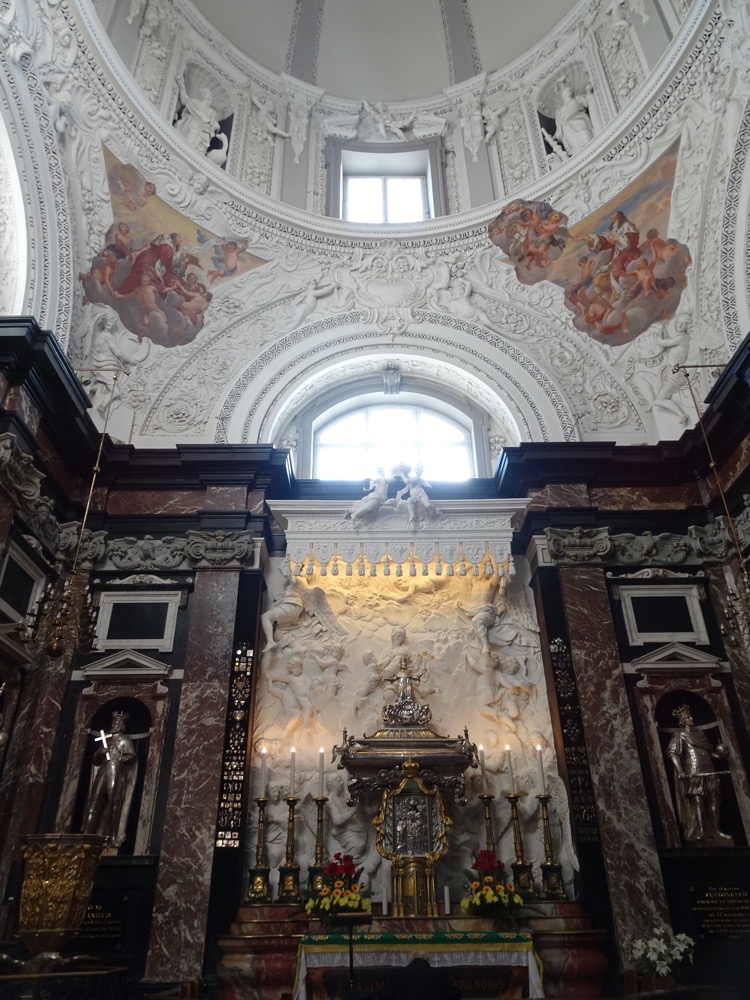 During the Soviet regime the cathedral was converted into a warehouse of all things, and masses were not celebrated here again until 1988. In 1989 its offical status as a cathedral was restored and it has been Vilnius’ main cathedral since that time.
During the Soviet regime the cathedral was converted into a warehouse of all things, and masses were not celebrated here again until 1988. In 1989 its offical status as a cathedral was restored and it has been Vilnius’ main cathedral since that time.


 In the square in the front of the musuem is a monument to King Mindaugas, the founder of the Lithuanian state.
In the square in the front of the musuem is a monument to King Mindaugas, the founder of the Lithuanian state. Inside we discovered many antiques, antiquities and odd things, none of which seemed to have been curated with any real theme? intent? or cohesion? It was all very odd.
Inside we discovered many antiques, antiquities and odd things, none of which seemed to have been curated with any real theme? intent? or cohesion? It was all very odd.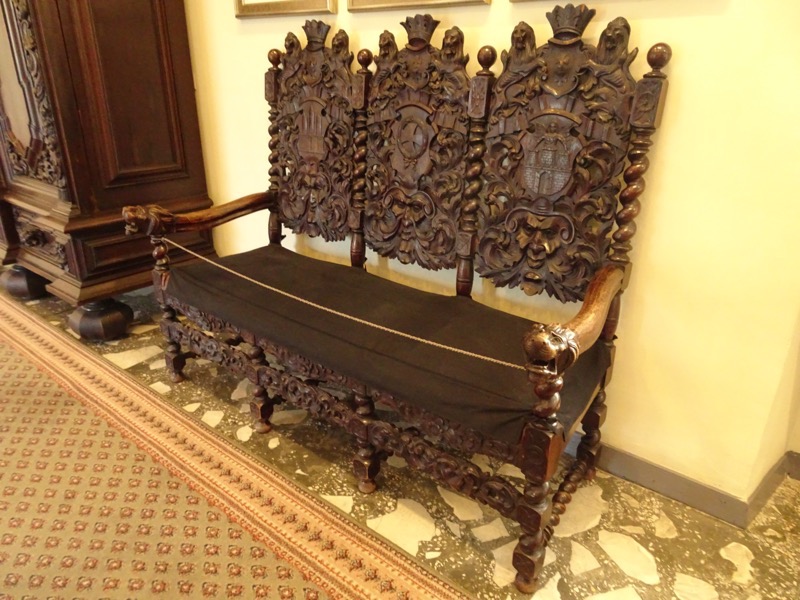 Urn, 4th century, Southern Italy:
Urn, 4th century, Southern Italy: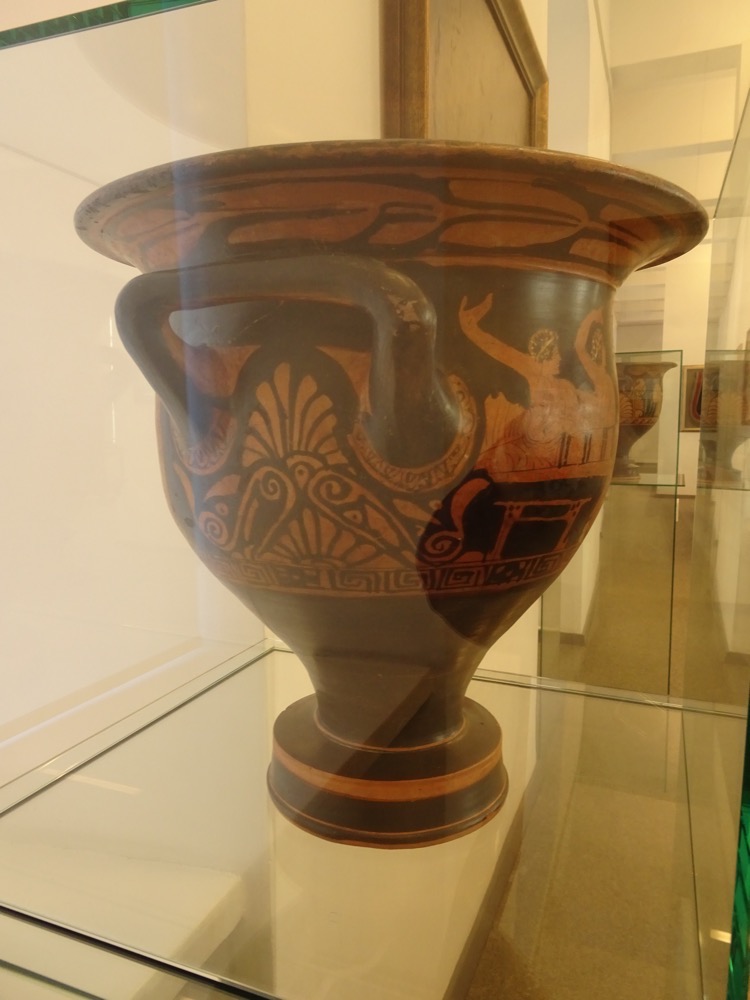
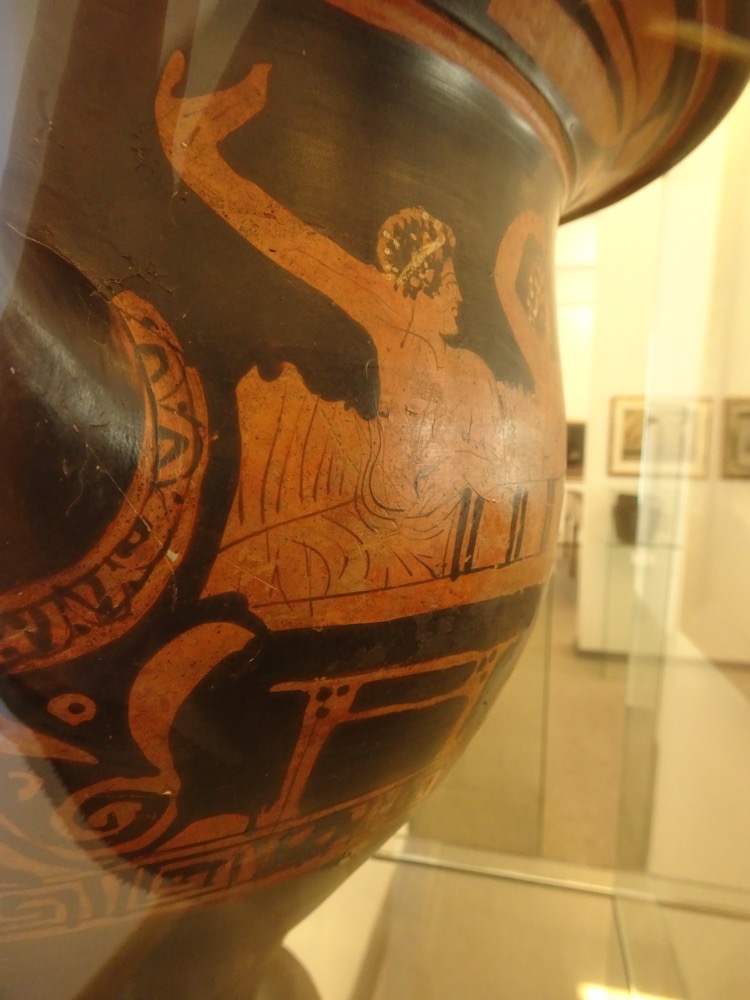 Lithuanian sledge, c.1700-1750.
Lithuanian sledge, c.1700-1750. Sarcophagus received as a gift by Museum of Antiquities in 1899 from Prince Chlodwig Karl Viktor Hohenlohe, then German Chancellor. Originates from Egypt (obviously) but no mention of date, location or what tomb it came from?
Sarcophagus received as a gift by Museum of Antiquities in 1899 from Prince Chlodwig Karl Viktor Hohenlohe, then German Chancellor. Originates from Egypt (obviously) but no mention of date, location or what tomb it came from?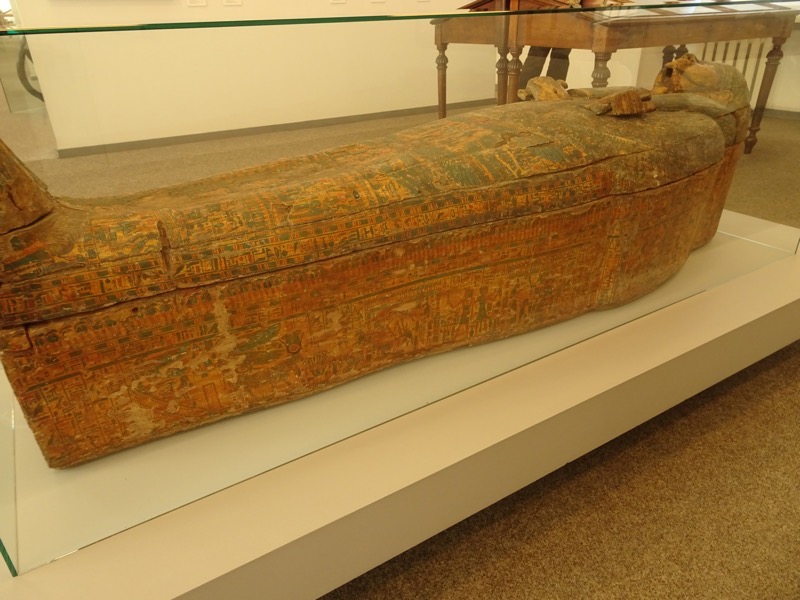
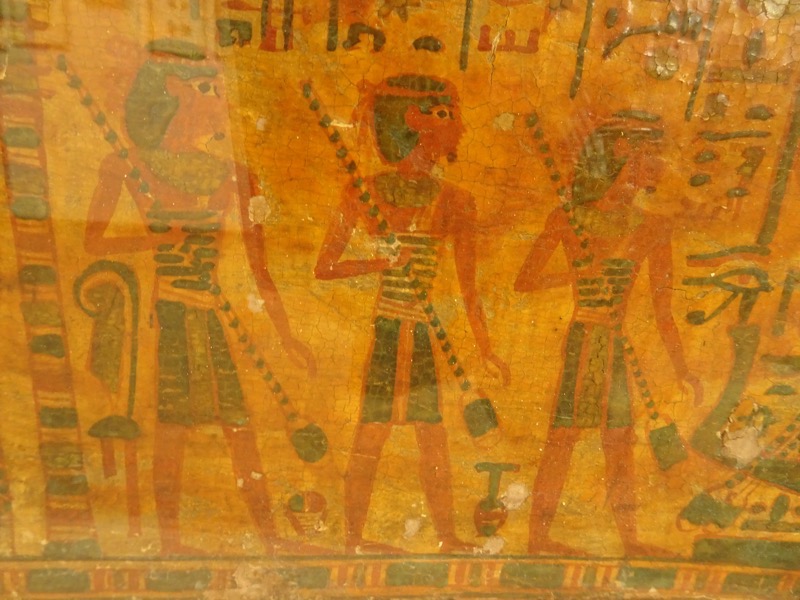 Obelisk with samples of Russian materials, 19th century.
Obelisk with samples of Russian materials, 19th century.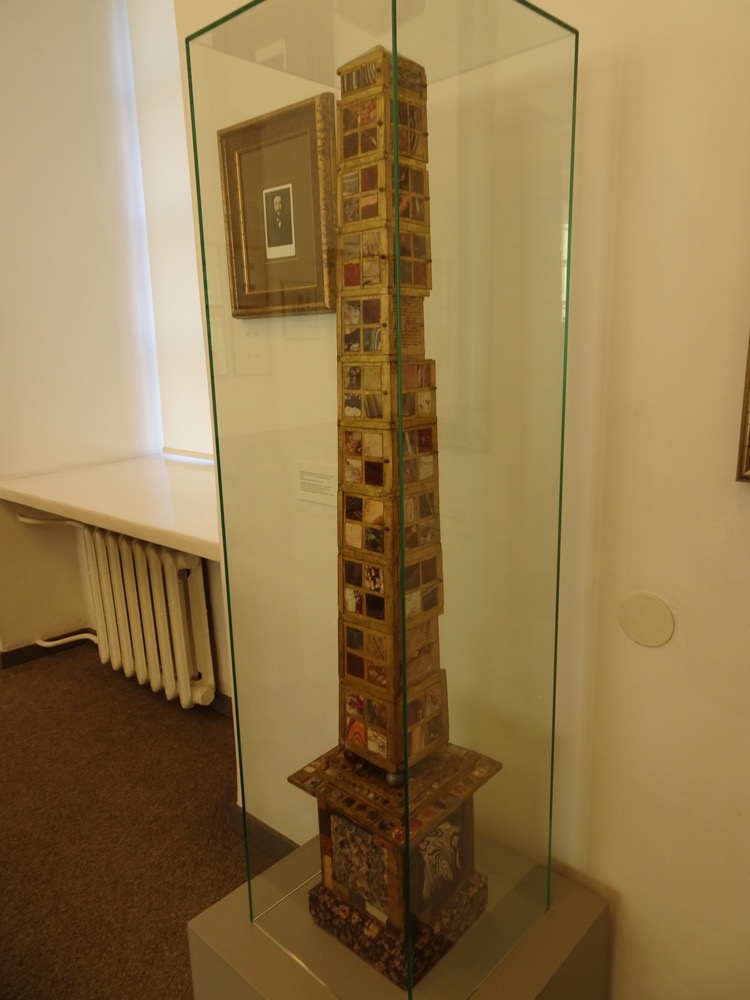
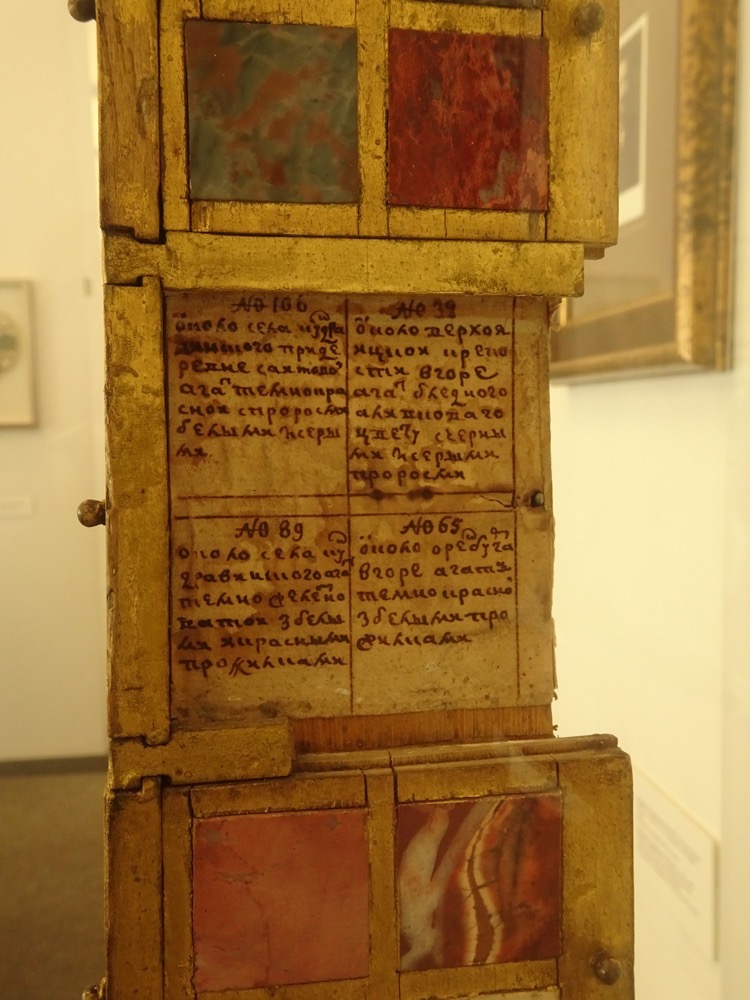 Maria Mnishek (1588-1614, wife of the Czars of Russia, Lzhedmirty I and Lzhedmirty II (did she remarry his brother? her son? his cousin? who knows?) Unknown artist, 1609.
Maria Mnishek (1588-1614, wife of the Czars of Russia, Lzhedmirty I and Lzhedmirty II (did she remarry his brother? her son? his cousin? who knows?) Unknown artist, 1609. Vytautas the Great, Grand Duke of Lithuania from 1401 to 1430.
Vytautas the Great, Grand Duke of Lithuania from 1401 to 1430.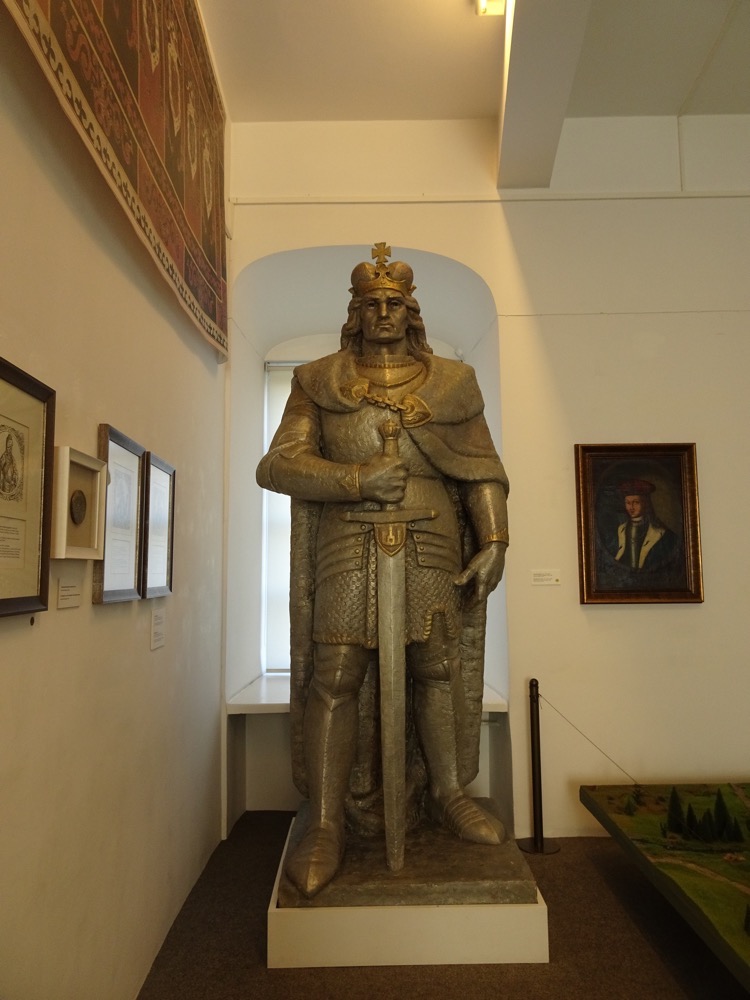 Iron window bars, Lithuanian 16th century (no idea where from?).
Iron window bars, Lithuanian 16th century (no idea where from?).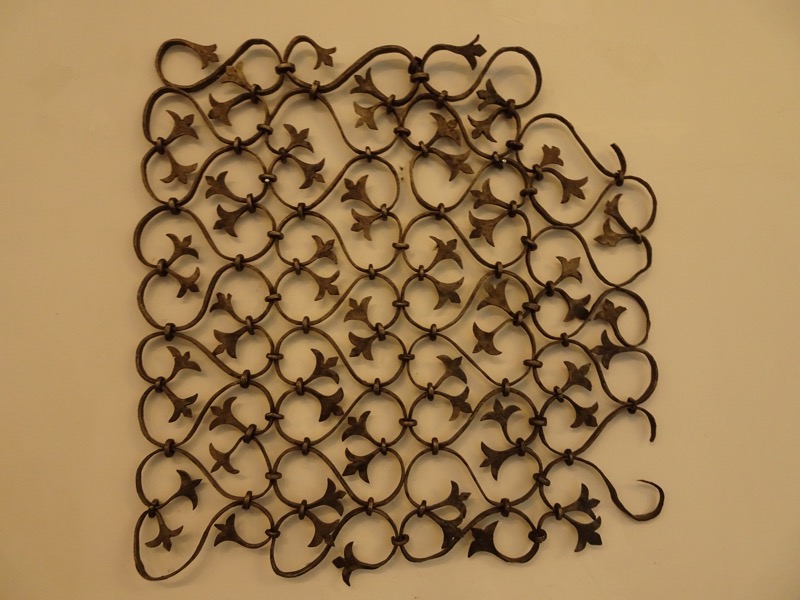
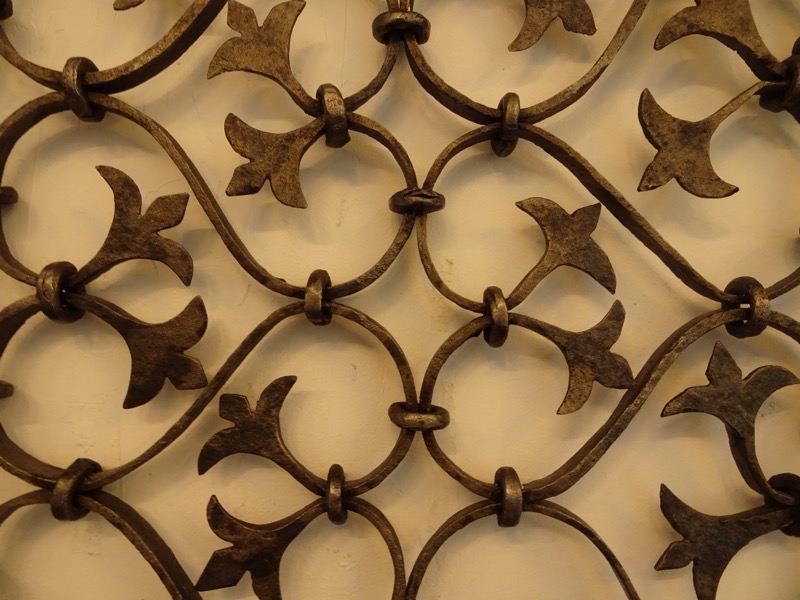 Guild’s chest (which guild?!), Lithuanian 17th century.
Guild’s chest (which guild?!), Lithuanian 17th century.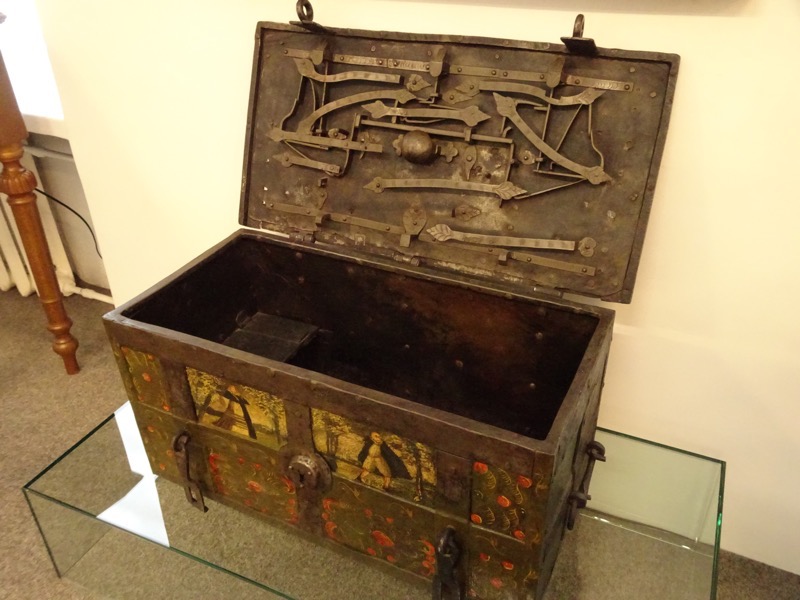

 Banner of the Immaculate Conception Fraternity at the Vilnius Bernadine Church, 1600-1650s… in bad need of conservation and repair.
Banner of the Immaculate Conception Fraternity at the Vilnius Bernadine Church, 1600-1650s… in bad need of conservation and repair.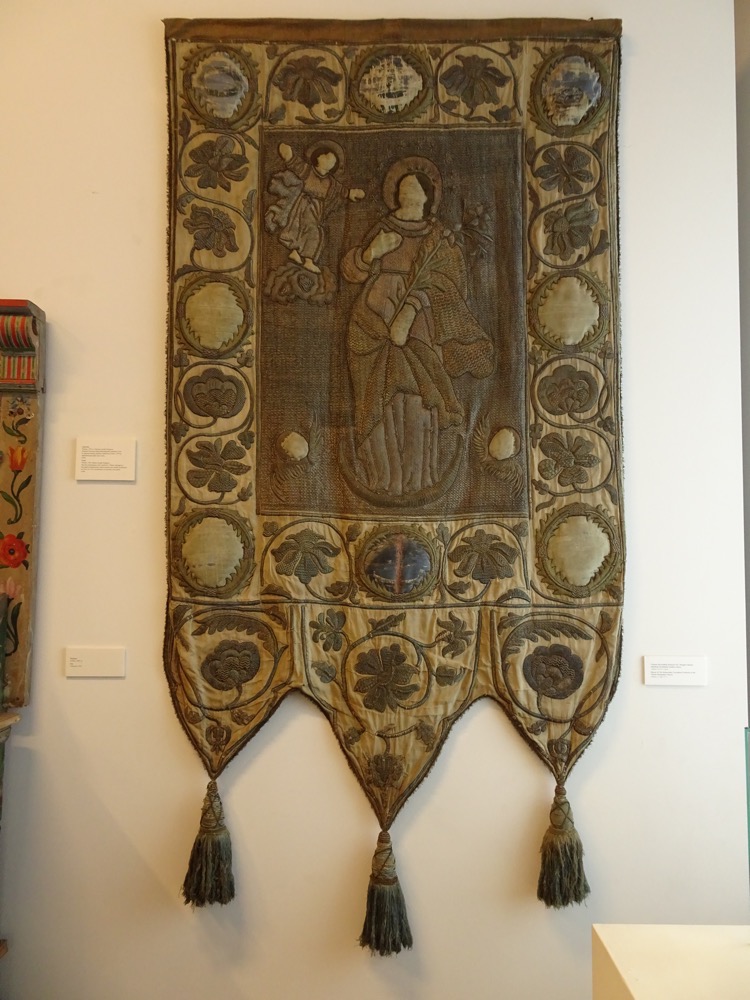
 Lithuanian pew, 1683
Lithuanian pew, 1683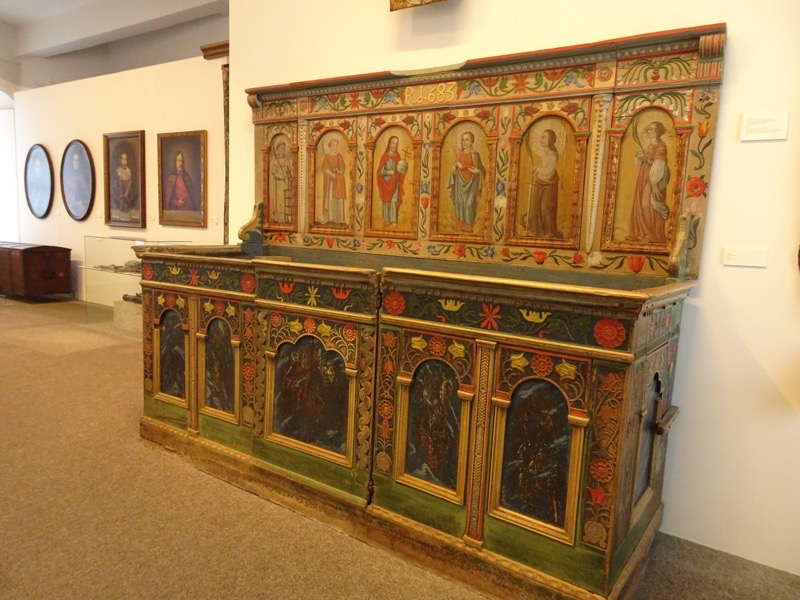
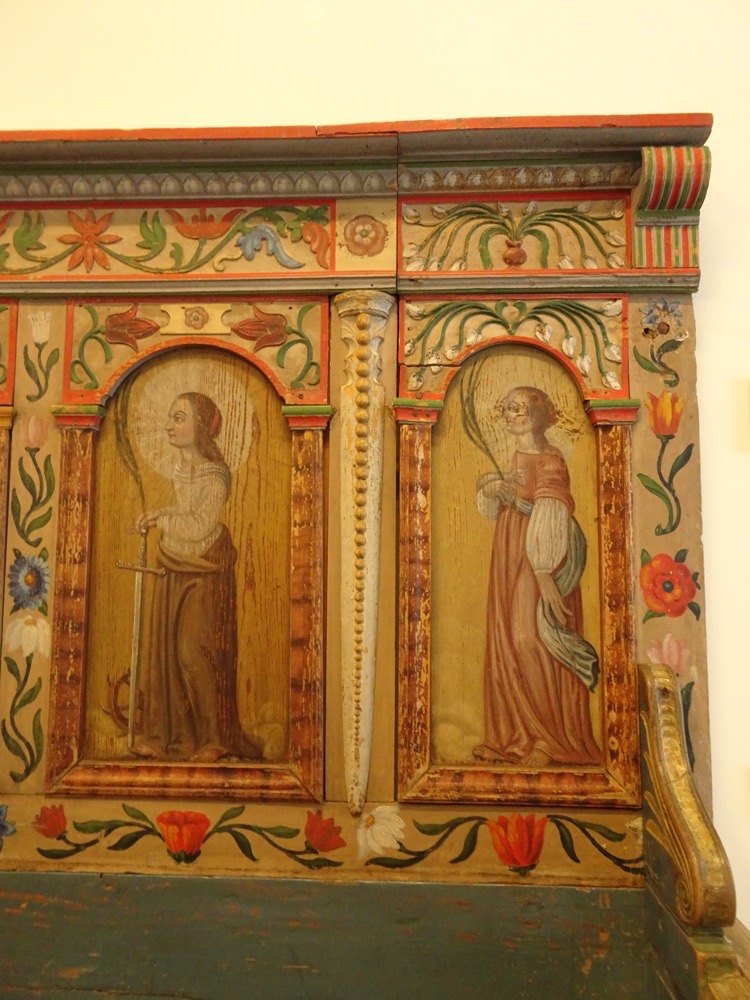 Chest with heraldic device of the Korff and Osten-Sacken families, Latvian c.1680.
Chest with heraldic device of the Korff and Osten-Sacken families, Latvian c.1680.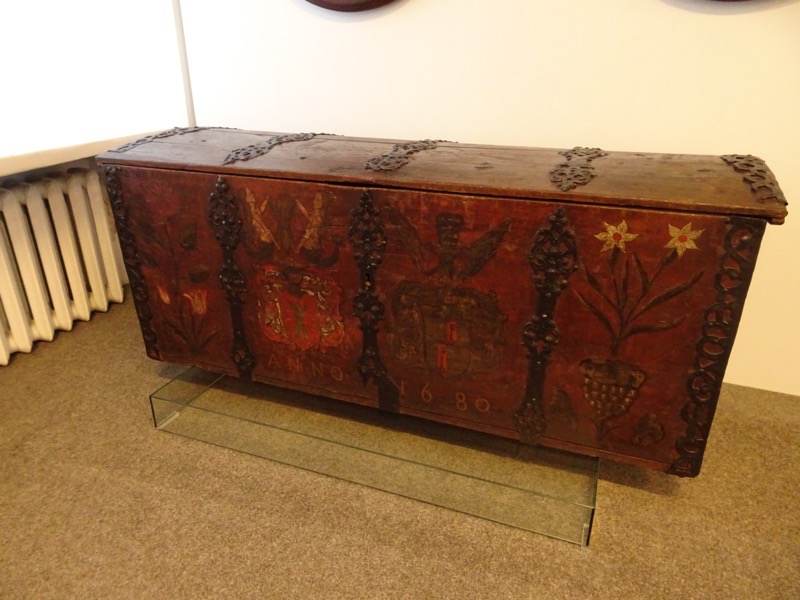 Hook to Drag Plague Victims, Vilnius, earl 18th century… no other information about plague?!
Hook to Drag Plague Victims, Vilnius, earl 18th century… no other information about plague?!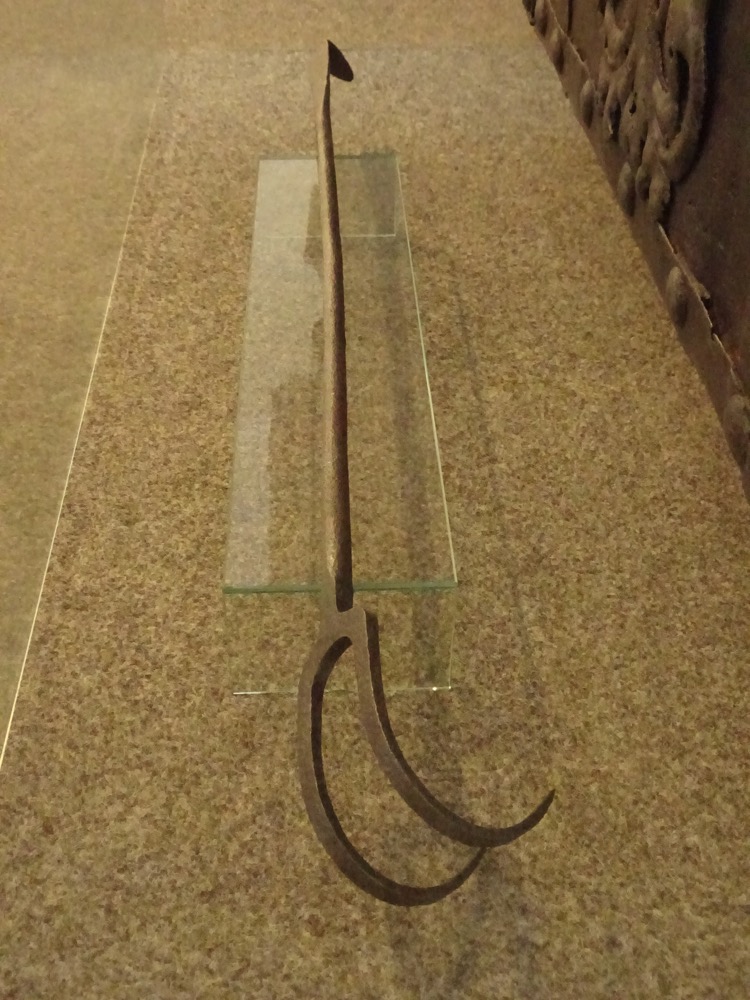 Persian helmet, Turkey, 17th – 18th centuries.
Persian helmet, Turkey, 17th – 18th centuries.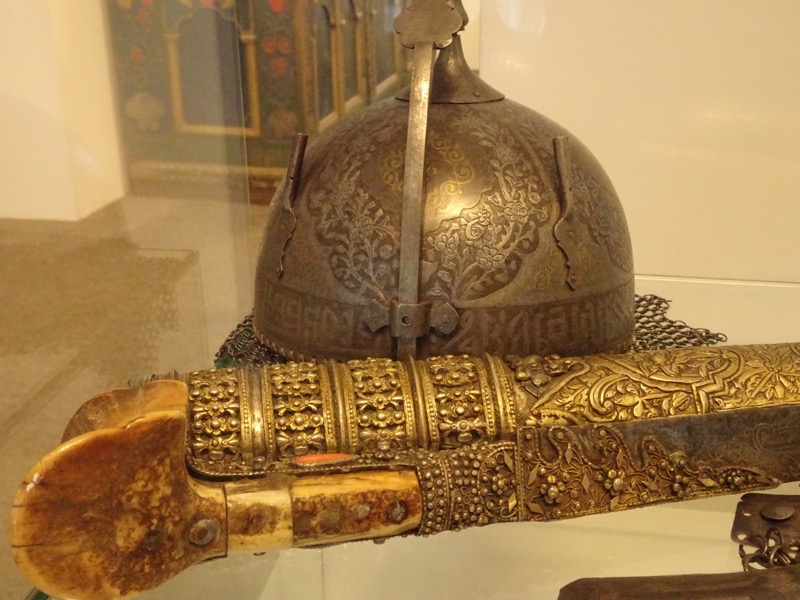 Chair, first half of the 17th century.
Chair, first half of the 17th century. 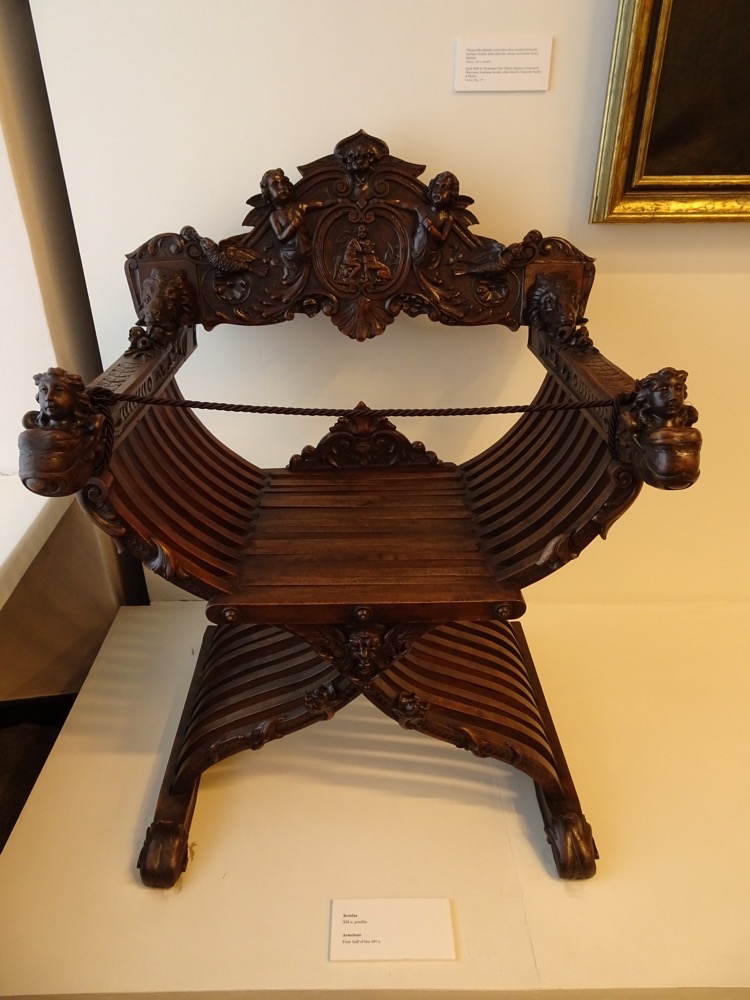
 Tablet woven sashes, Lithuanian Minor and South-west Lithuania early 19th century.
Tablet woven sashes, Lithuanian Minor and South-west Lithuania early 19th century.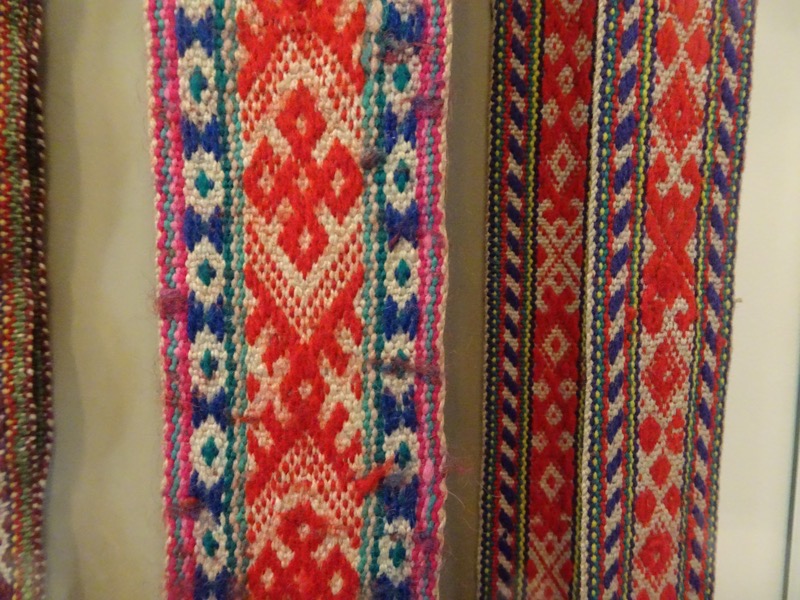
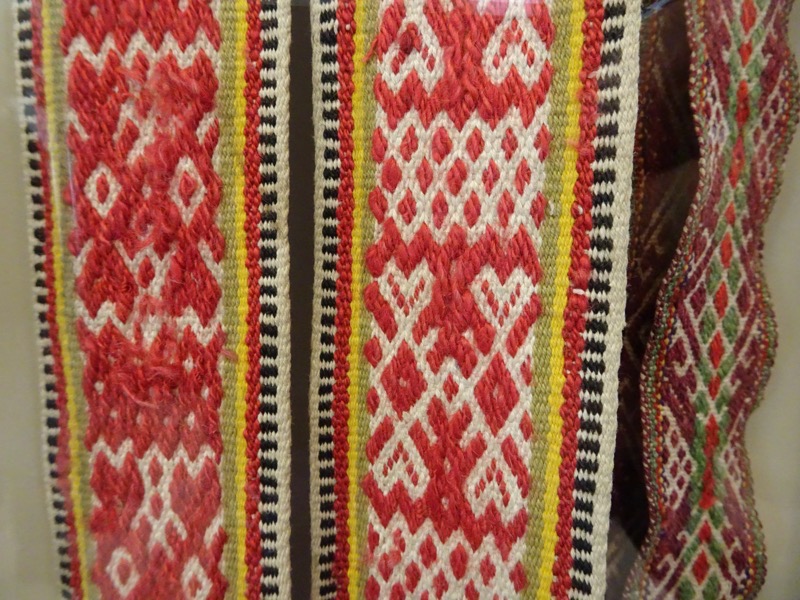

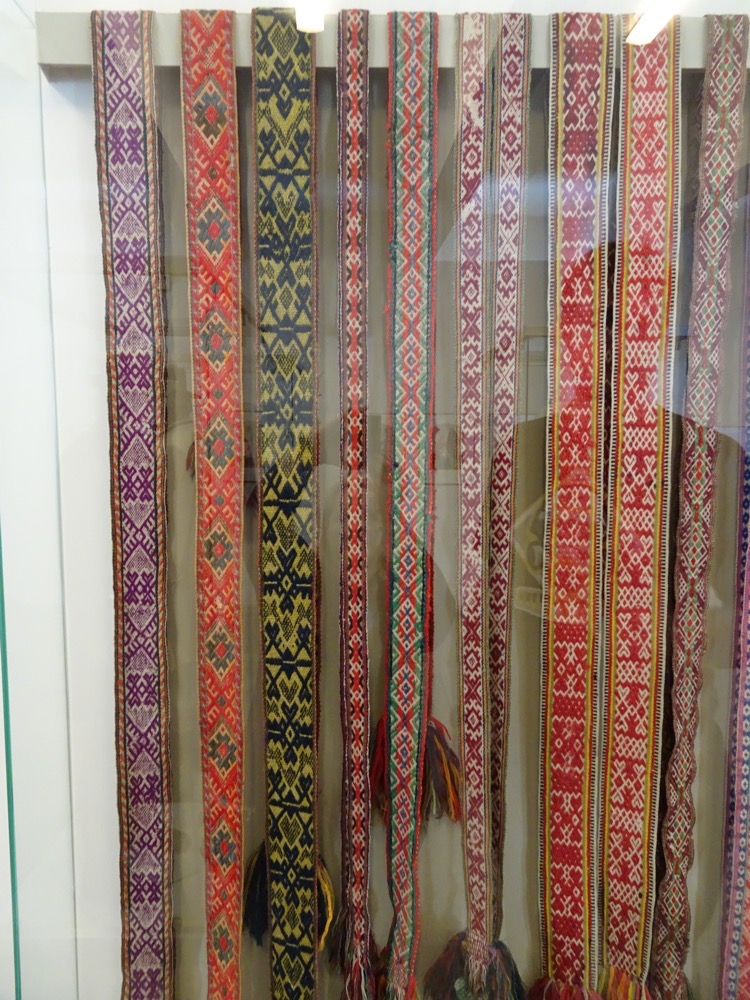 Dowry chest, middle Lithuania, late 19th century.
Dowry chest, middle Lithuania, late 19th century. Spinning wheel, middle Lithuania, late 19th century, early 20th century.
Spinning wheel, middle Lithuania, late 19th century, early 20th century.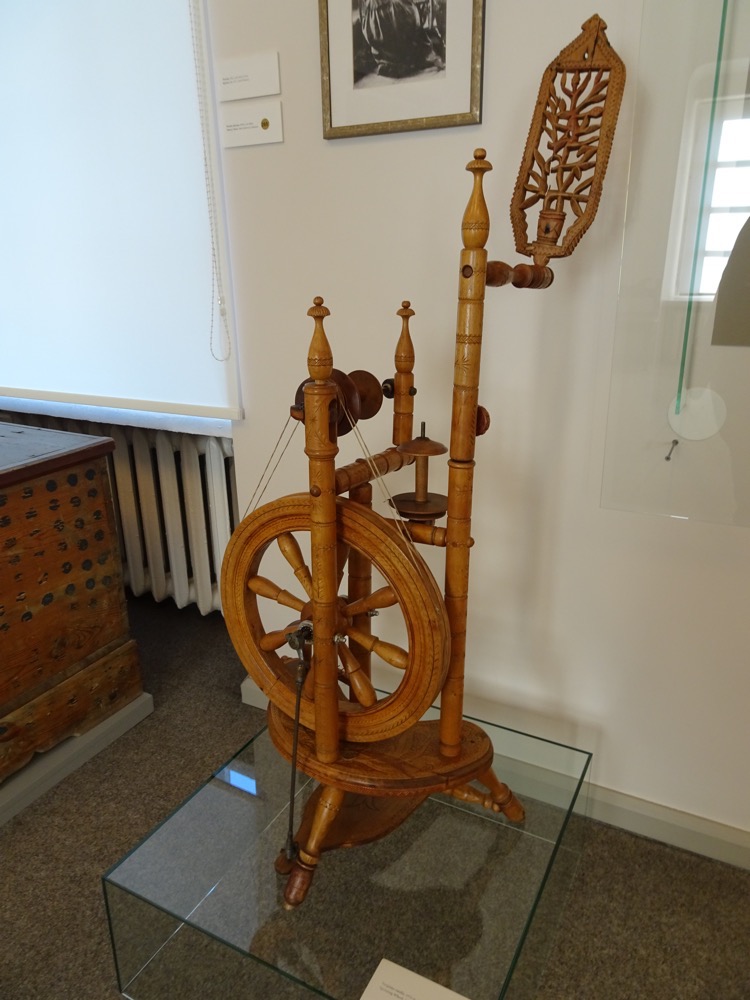 Toy musuem:
Toy musuem: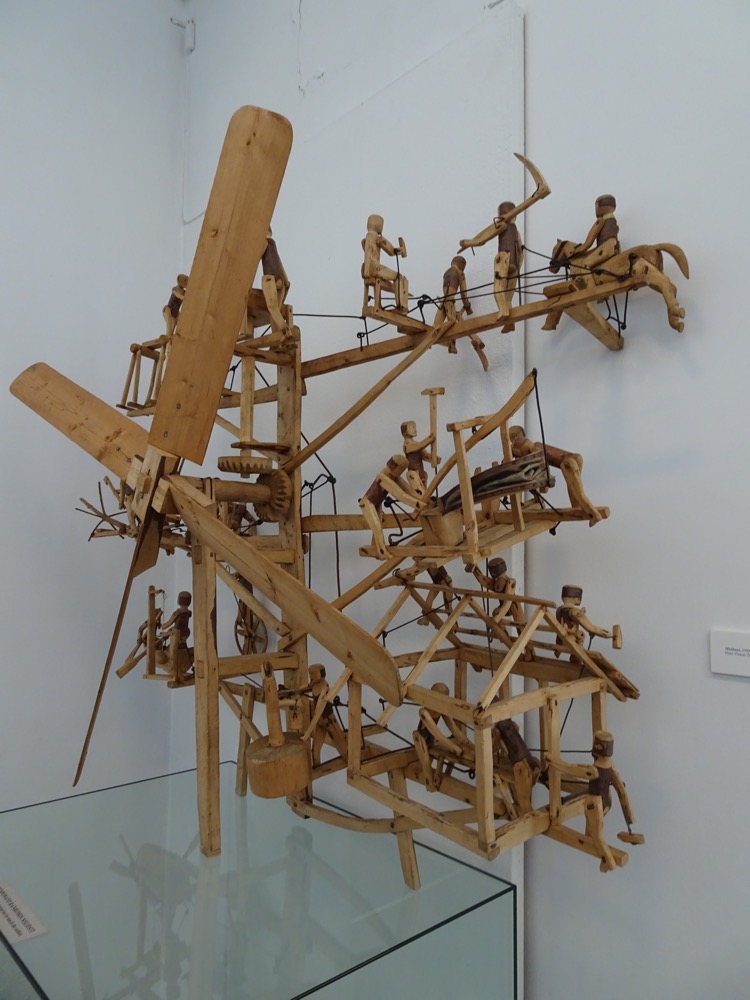
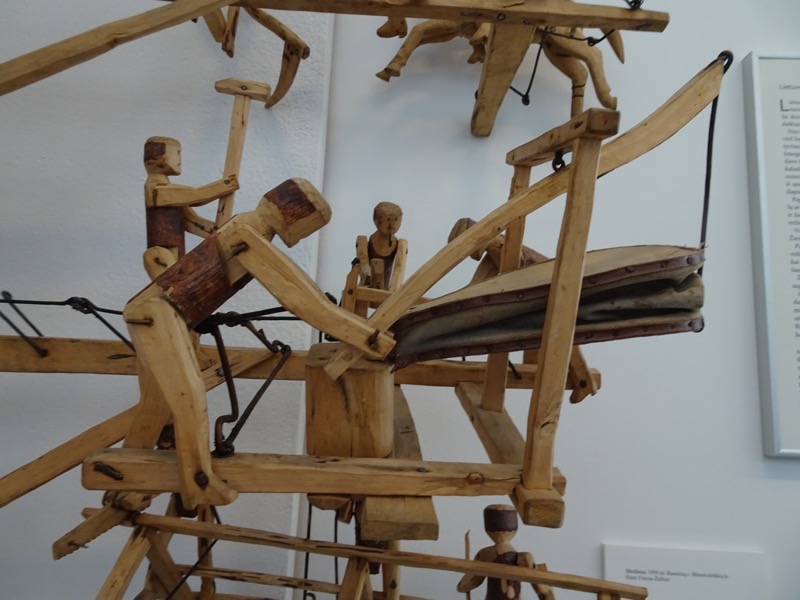

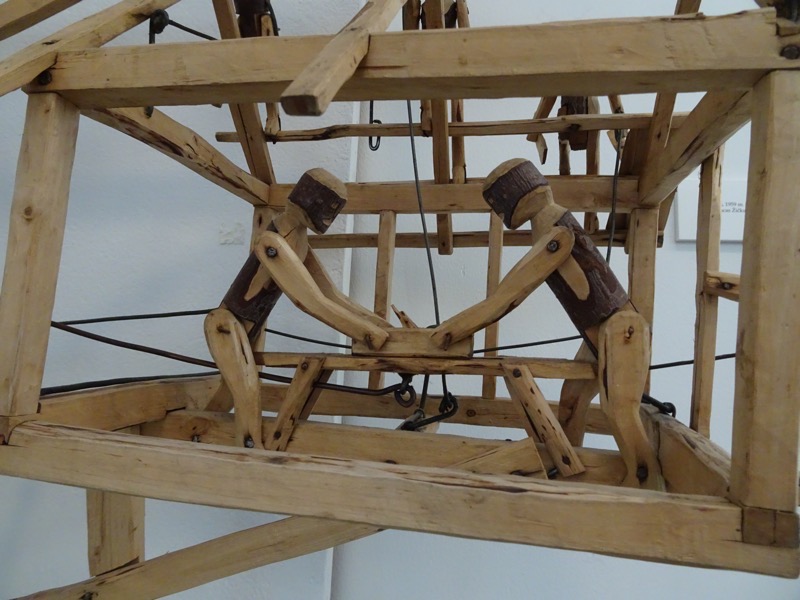
 Recreated guest room in a typical Zemaicai house in the early 19th century.
Recreated guest room in a typical Zemaicai house in the early 19th century. 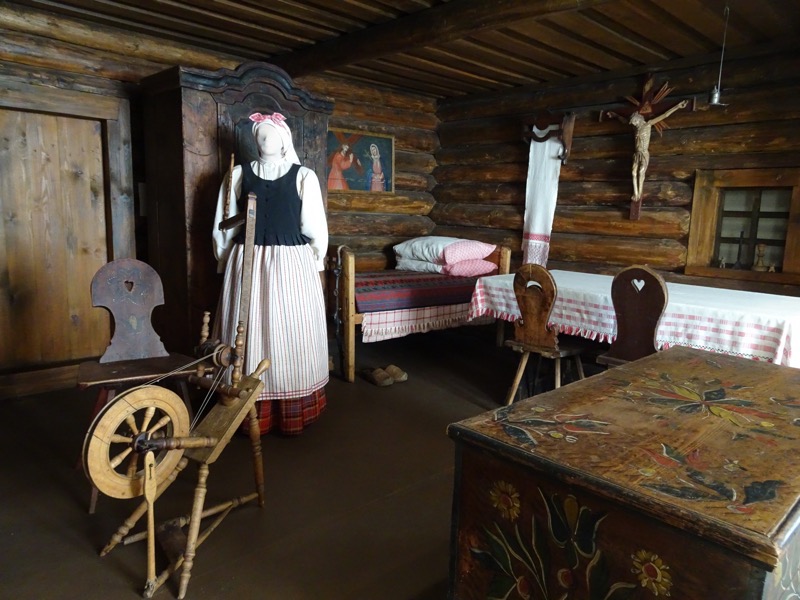 Kitchen/pantry:
Kitchen/pantry: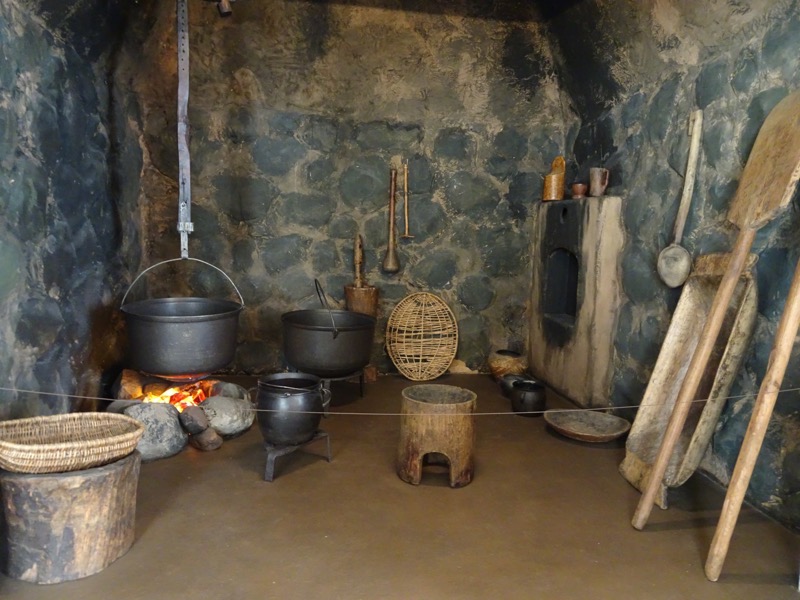
 Living/Dining rooms:
Living/Dining rooms: Wooden religious monument tops, various regions, 19th century.
Wooden religious monument tops, various regions, 19th century.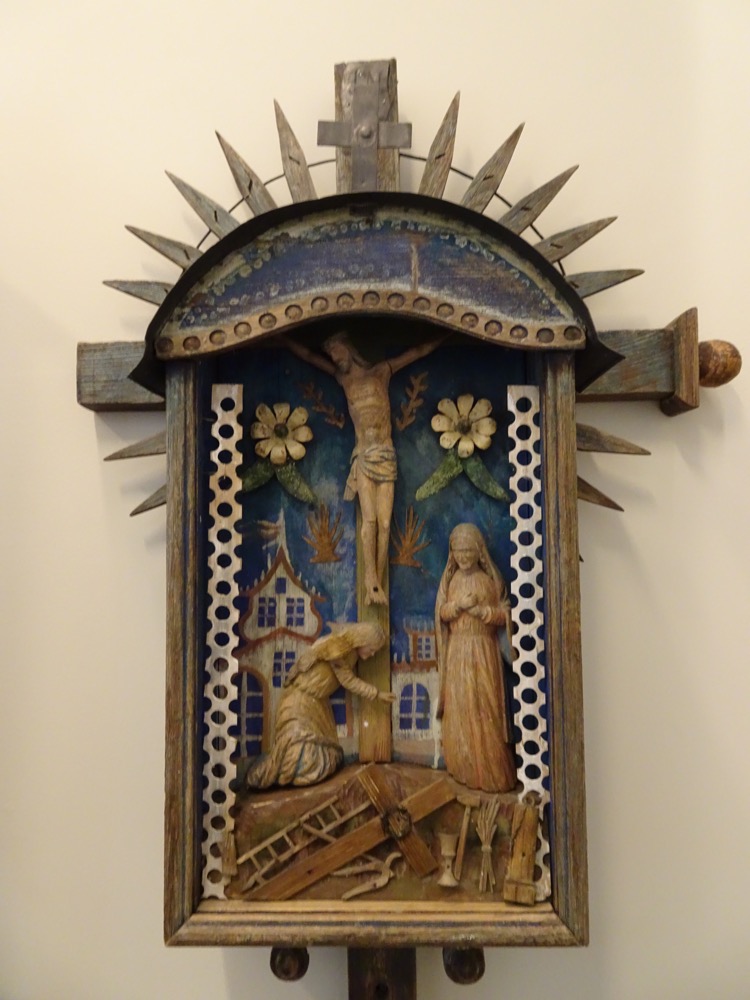
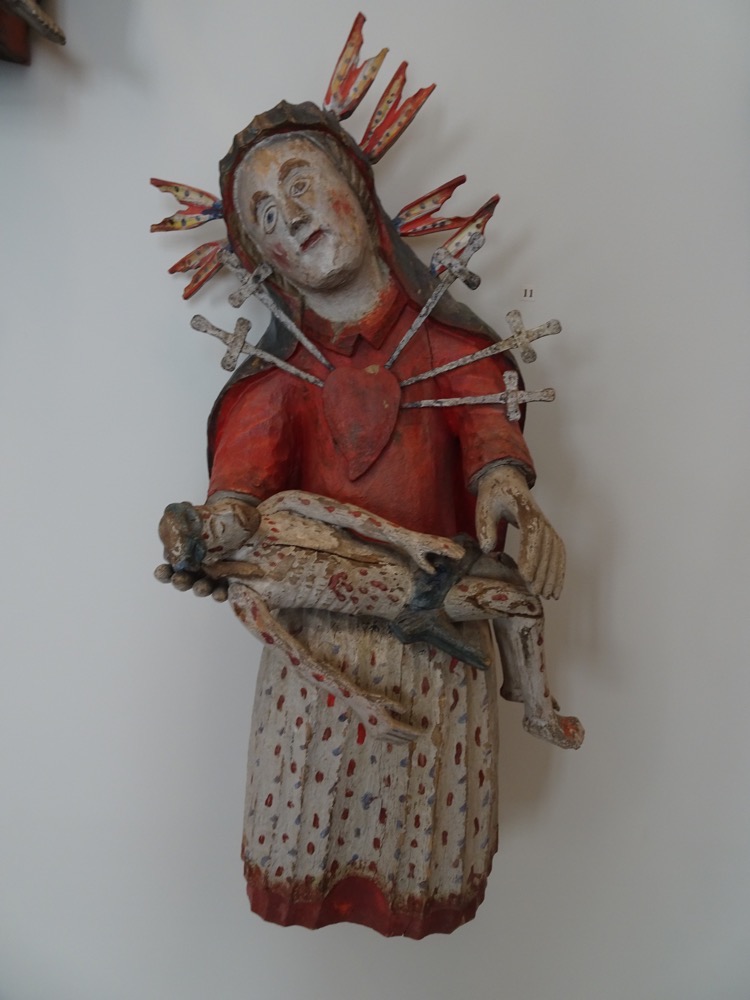
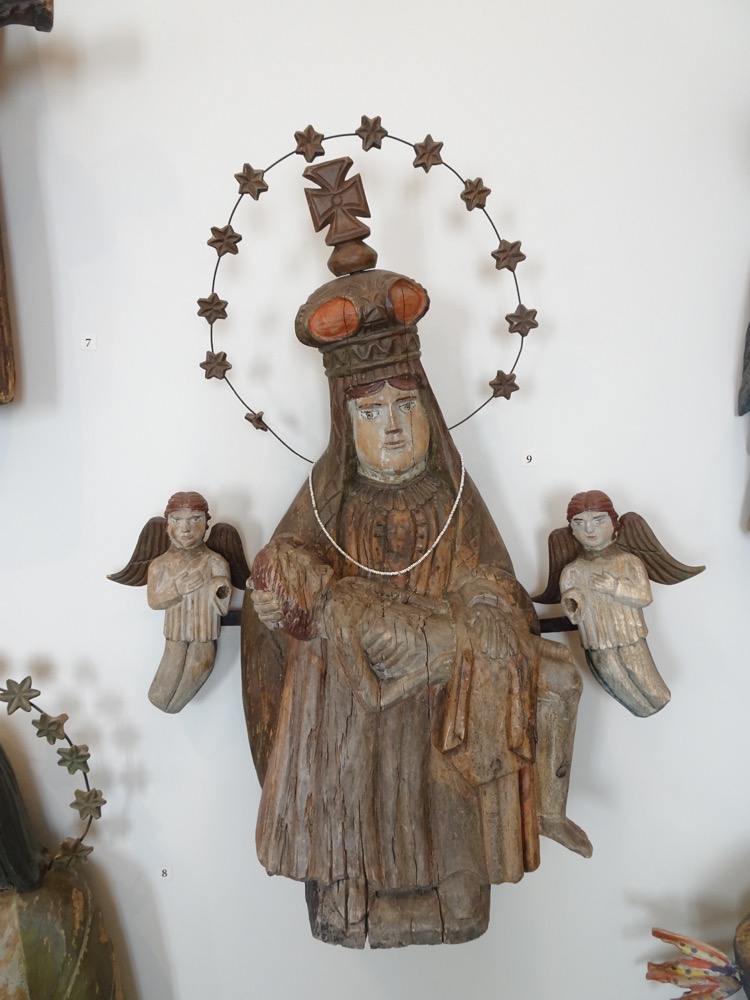 St George…
St George… St Florian…
St Florian…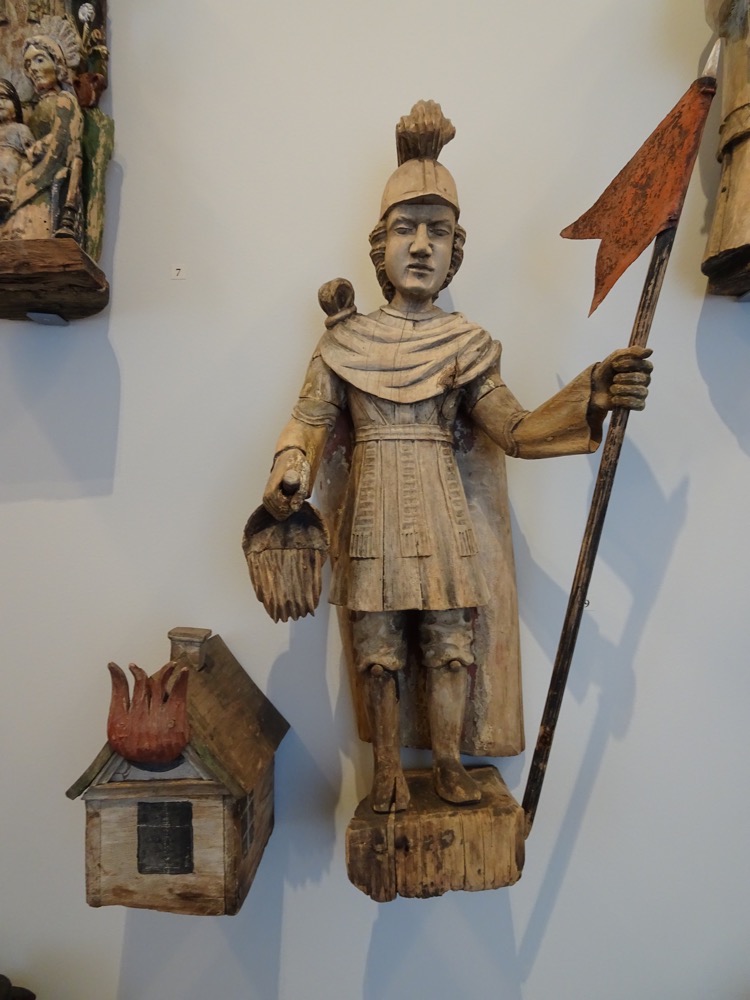
 It’s a seriously shitty climb.
It’s a seriously shitty climb. Almost to the top:
Almost to the top: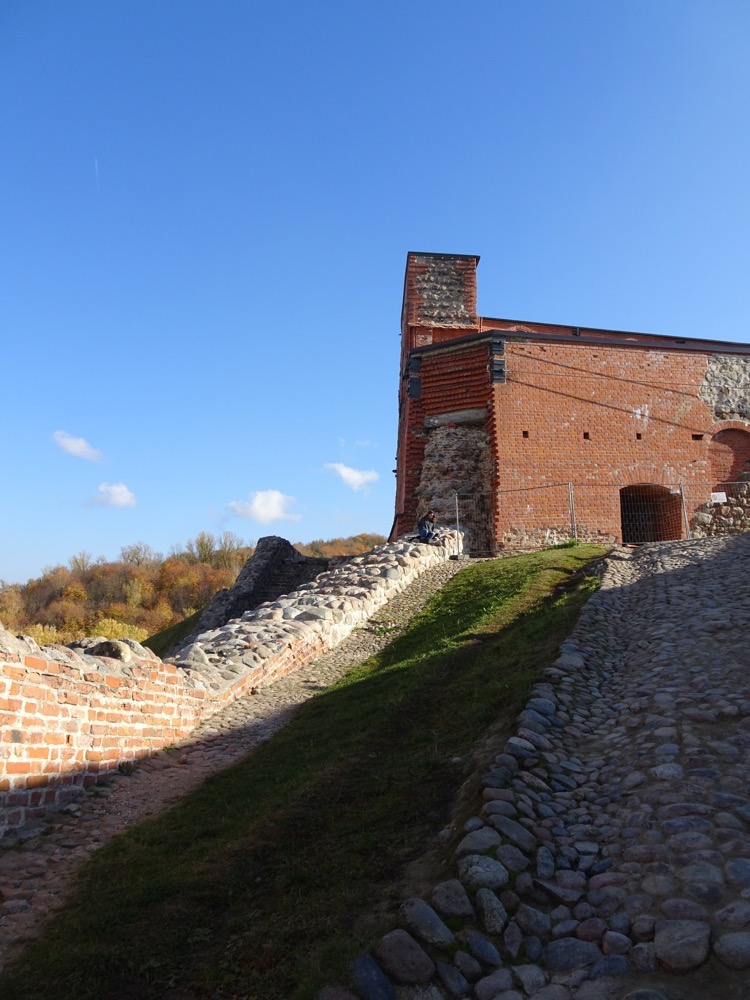 The tower normally houses a museum exhibiting archaeological findings from the hill and the surrounding areas and has models of Vilnius castles from the 14th to the 17th centuries, and some armaments, and other iconographic material of Old Vilnius – normally. However, on this occasion, most of the complex is closed for restoration due to what seems to be a rather nasty landslide and part of the castle starting to look like it’s going to slide down into a river?
The tower normally houses a museum exhibiting archaeological findings from the hill and the surrounding areas and has models of Vilnius castles from the 14th to the 17th centuries, and some armaments, and other iconographic material of Old Vilnius – normally. However, on this occasion, most of the complex is closed for restoration due to what seems to be a rather nasty landslide and part of the castle starting to look like it’s going to slide down into a river?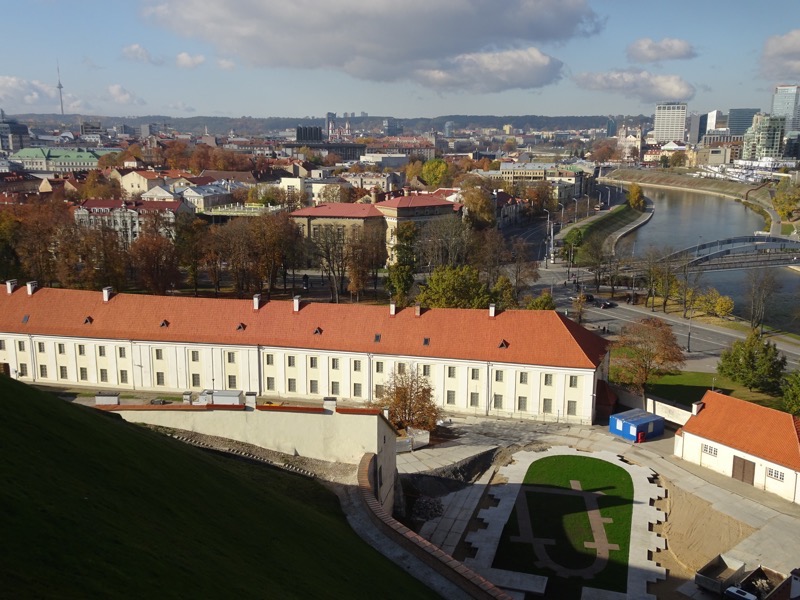 Towards the university grounds:
Towards the university grounds: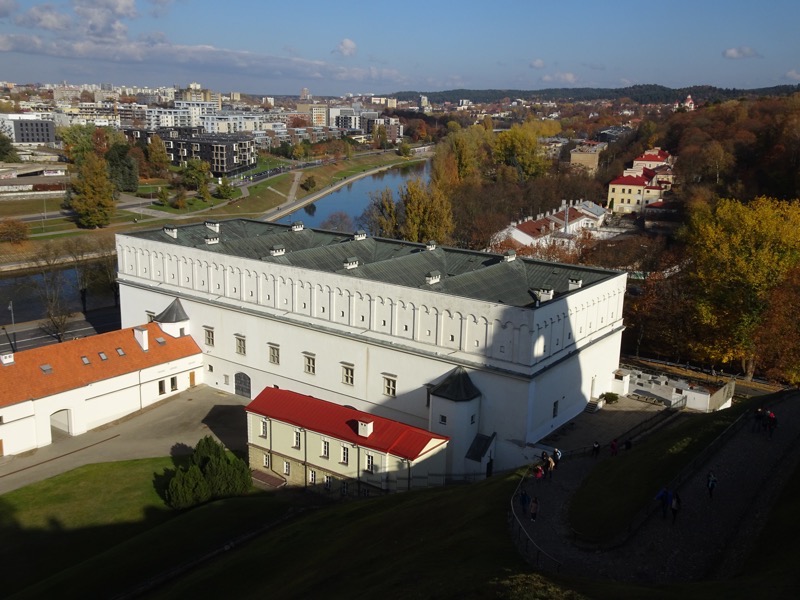 Gediminas’ Tower:
Gediminas’ Tower: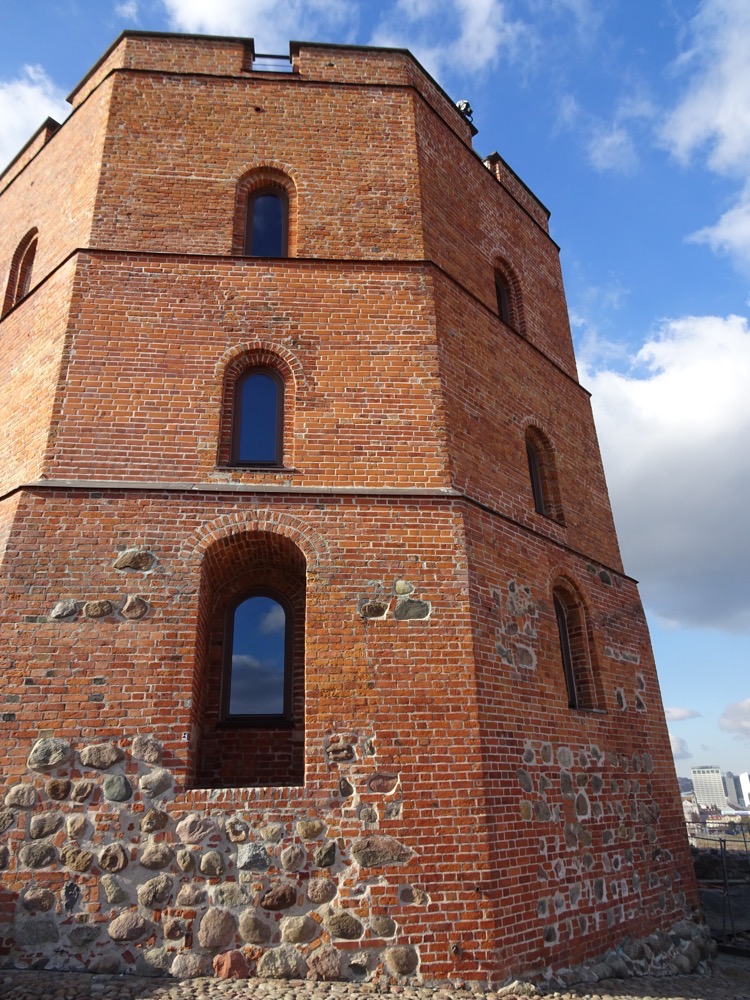 After we made our way through the castle complex, most of which was behind scaffolding, we clambered carefully back down the cobbled hill – because of course if you are going to go tits up, it will be while going downhill and went for a walk around the bottom of the castle tower base. I simply can not get over these gorgeous autumn colours.
After we made our way through the castle complex, most of which was behind scaffolding, we clambered carefully back down the cobbled hill – because of course if you are going to go tits up, it will be while going downhill and went for a walk around the bottom of the castle tower base. I simply can not get over these gorgeous autumn colours. 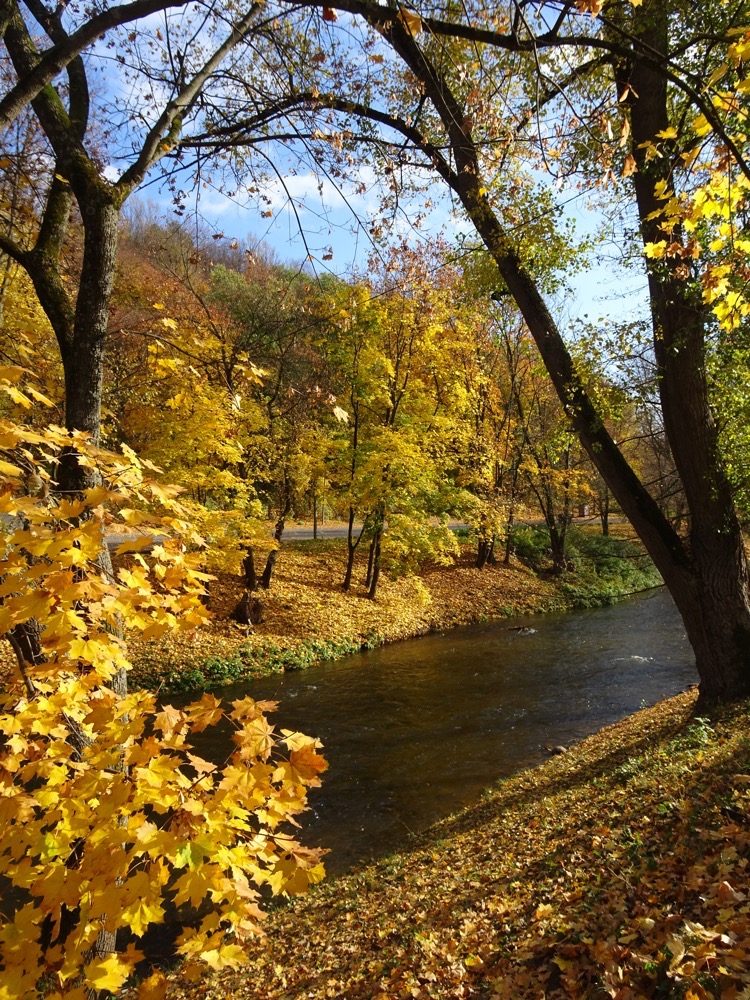
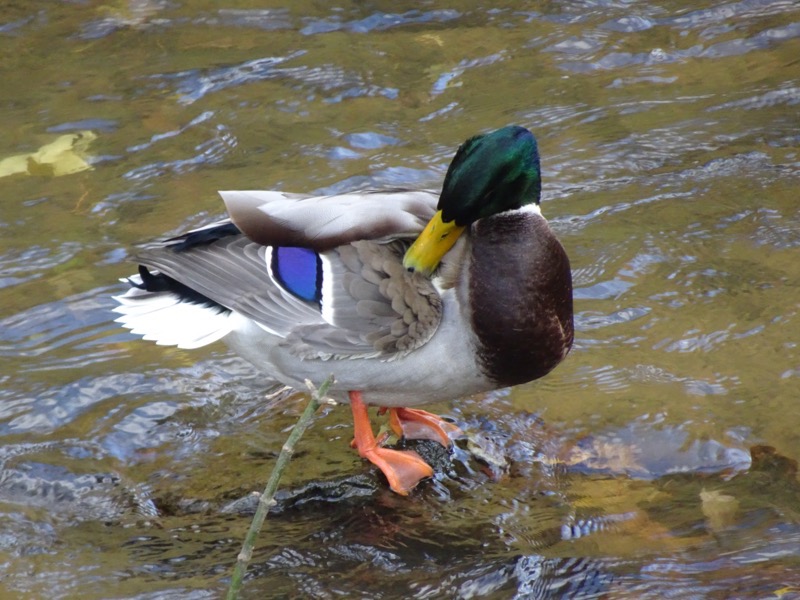
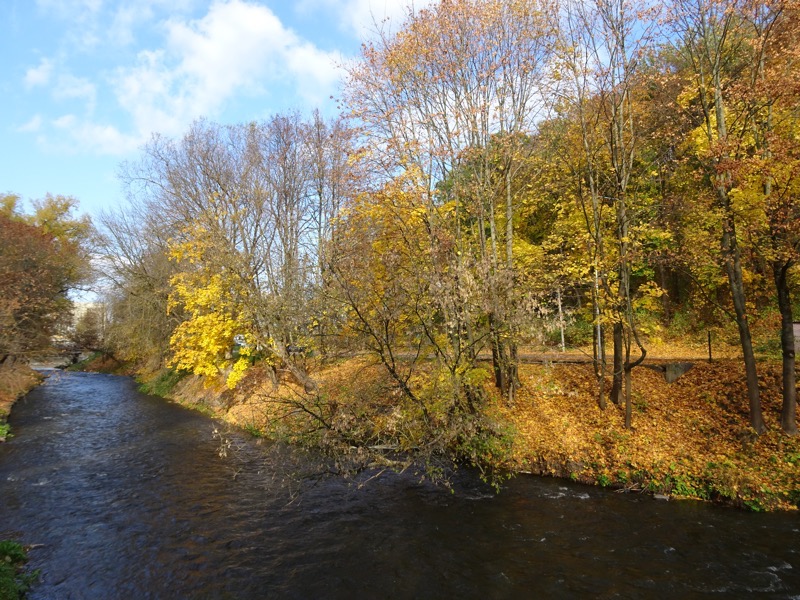 The tower from Cathedral Square:
The tower from Cathedral Square: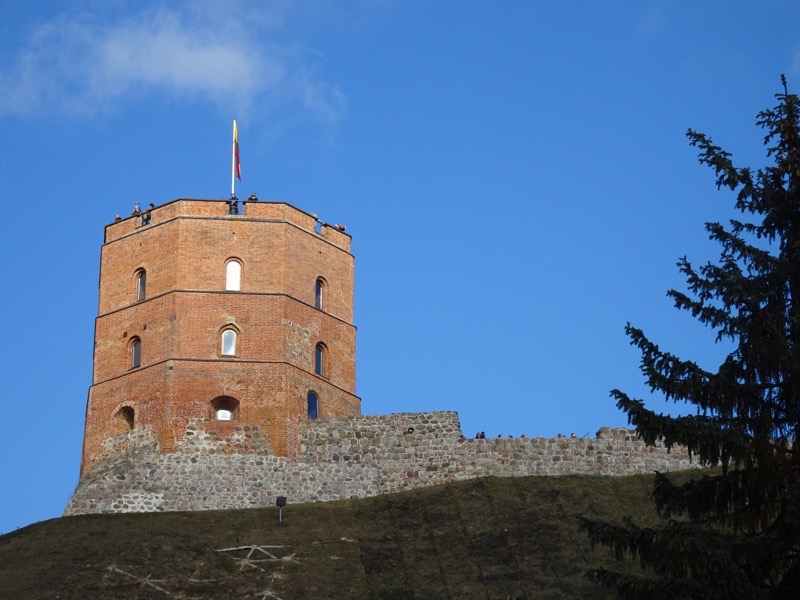 Presidential Palace: This building is the central part of the former Governor’s Palace. The first palace was built here in the 15th century and used as the Vilnius bishops’ residence until 1795 when it was given to the governor-general. It currently holds the President’s official offices.
Presidential Palace: This building is the central part of the former Governor’s Palace. The first palace was built here in the 15th century and used as the Vilnius bishops’ residence until 1795 when it was given to the governor-general. It currently holds the President’s official offices.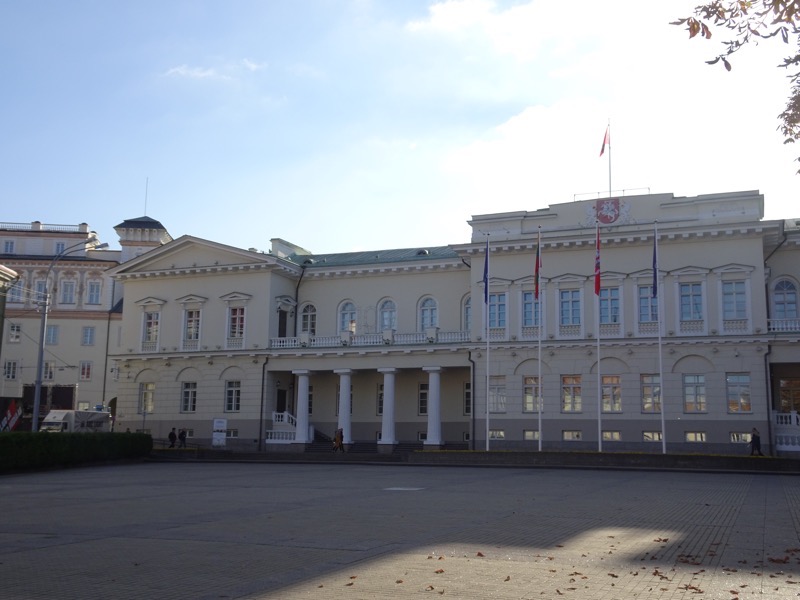 After this, we went hunting for a bit of lunch at a place called Būsi Trečias. Something local, affordable and hopefully not too far. Trip Advisor can be great for finding restaurants and it served us well last night, but sometimes it can be a bit hit and miss. We found a restaurant called and immediately ordered some disgustingly large ciders – because the alcohol is always cheaper than the soft drink or sometimes even the bottled water!
After this, we went hunting for a bit of lunch at a place called Būsi Trečias. Something local, affordable and hopefully not too far. Trip Advisor can be great for finding restaurants and it served us well last night, but sometimes it can be a bit hit and miss. We found a restaurant called and immediately ordered some disgustingly large ciders – because the alcohol is always cheaper than the soft drink or sometimes even the bottled water! yale ordered what was called a ‘Village Pan’ and was full of potato, bacon and mushrooms, gherkins and god knows what else. It was okay in the end, yale more than happily assisted in polishing off the pork hock (well the chunks of it that weren’t fat and bone that is).
yale ordered what was called a ‘Village Pan’ and was full of potato, bacon and mushrooms, gherkins and god knows what else. It was okay in the end, yale more than happily assisted in polishing off the pork hock (well the chunks of it that weren’t fat and bone that is). After lunch, we went for a quick wander down the main street of the Old Town to see what the other tourists are doing today. It was fairly quiet – I think that is the benefit of being here off-peak. Not many monument hogging selfie obsessed tourists around these parts.
After lunch, we went for a quick wander down the main street of the Old Town to see what the other tourists are doing today. It was fairly quiet – I think that is the benefit of being here off-peak. Not many monument hogging selfie obsessed tourists around these parts.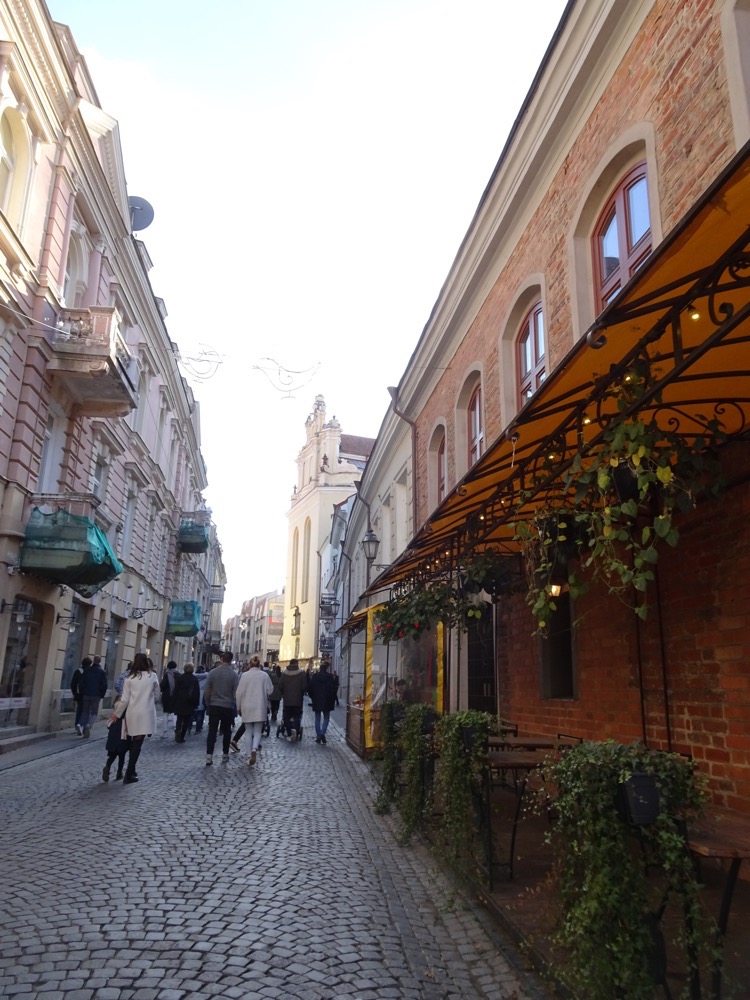 Souvenir shops are the same the world over aren’t they? Full of stuff no one needs and hardly anyone wants. I collected my pins and we moved one.
Souvenir shops are the same the world over aren’t they? Full of stuff no one needs and hardly anyone wants. I collected my pins and we moved one.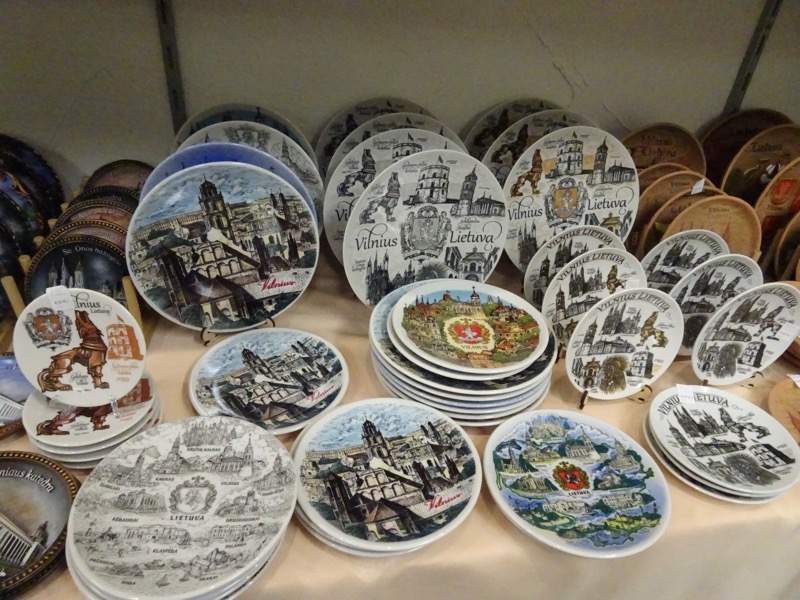
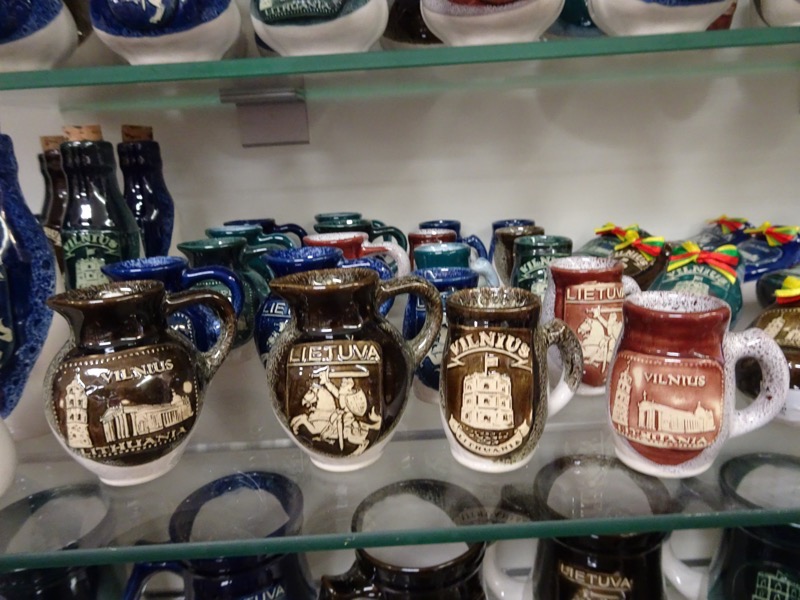
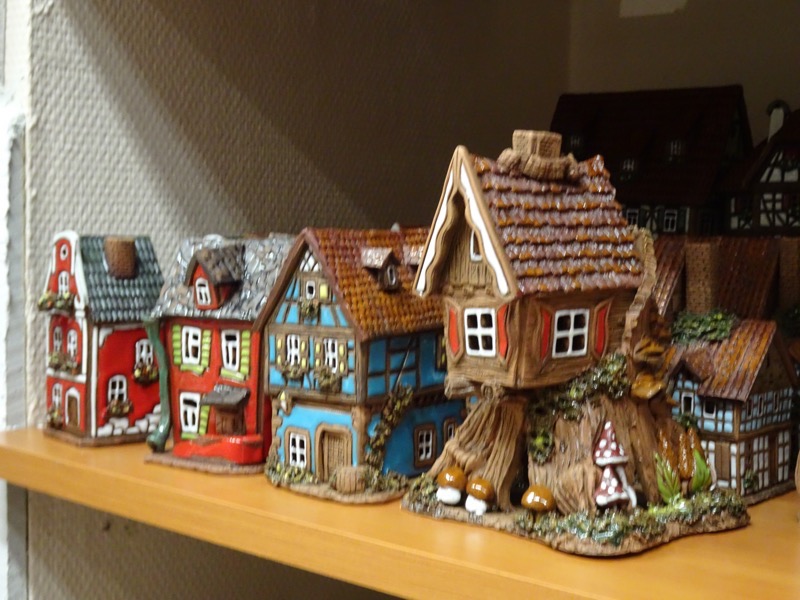 I was trying to take a photo of this amazing building, and couldn’t find a good vantage point to capture the brickwork. It was only after I took about four pictures that I realised he was getting annoyed at me taking his photo (and not dropping coins in his hat I dare say), whereas the truth was, I’m standing there thinking, ‘Why has that guy plonked himself and his ugly purple trolley right in front of the only building in the street that I want to photograph!?’
I was trying to take a photo of this amazing building, and couldn’t find a good vantage point to capture the brickwork. It was only after I took about four pictures that I realised he was getting annoyed at me taking his photo (and not dropping coins in his hat I dare say), whereas the truth was, I’m standing there thinking, ‘Why has that guy plonked himself and his ugly purple trolley right in front of the only building in the street that I want to photograph!?’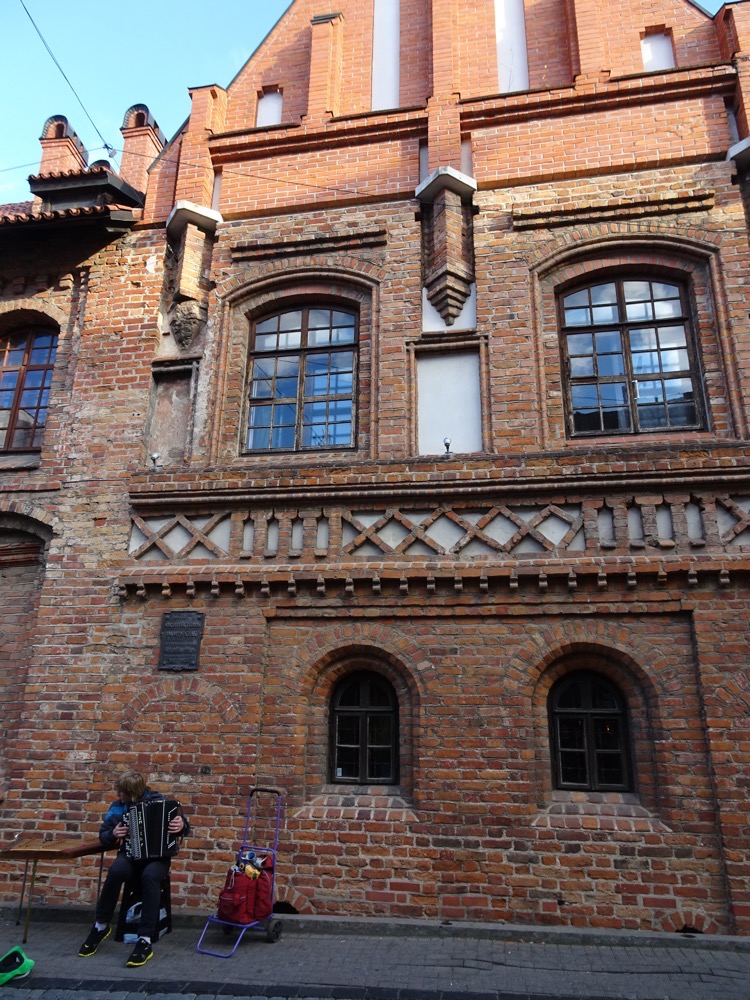 Wine bar on the corner near our B&B.
Wine bar on the corner near our B&B.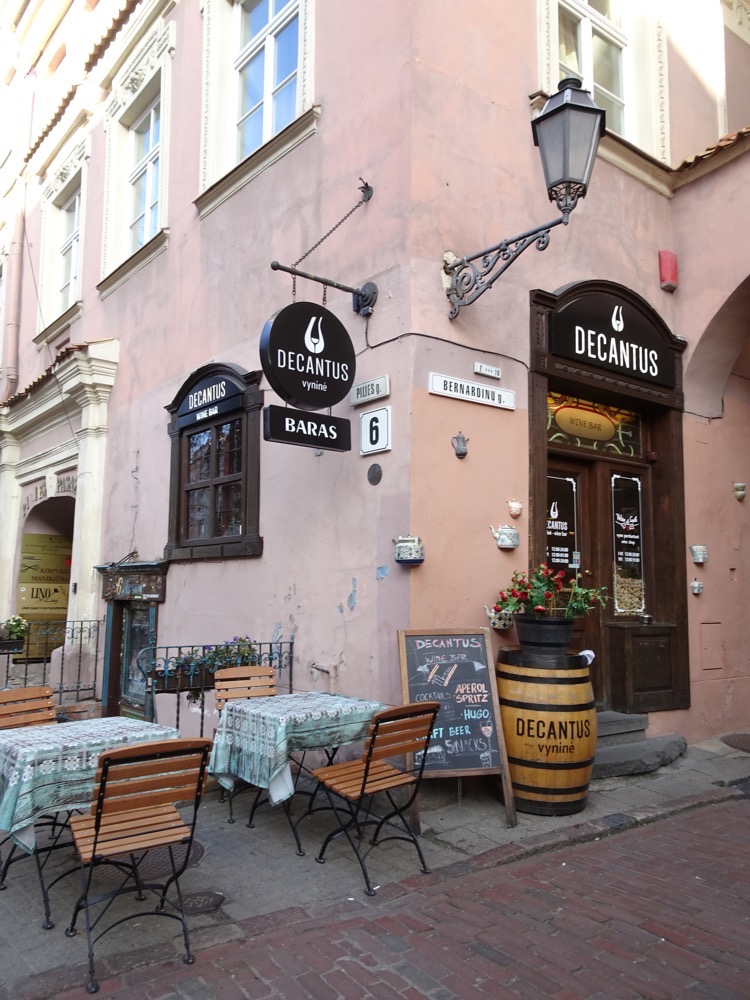
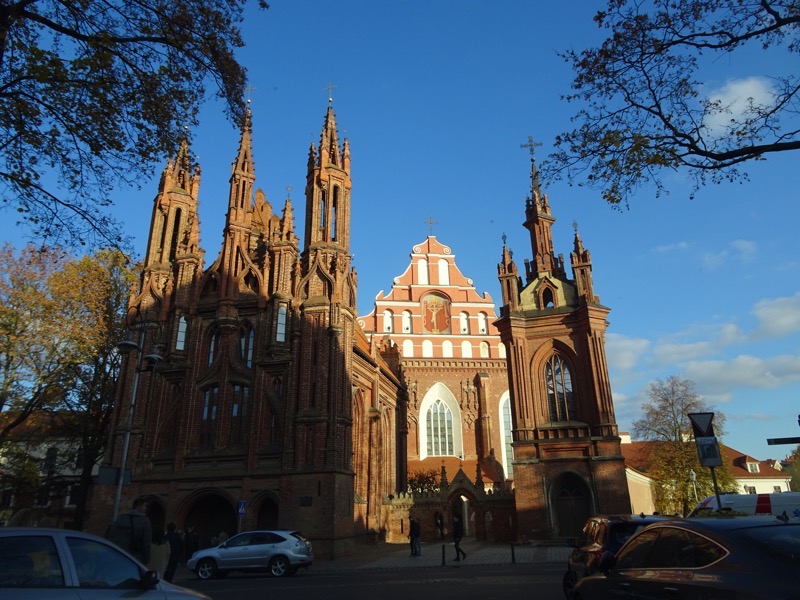 We had decided to spend the last few hours of the day going for a drive out to the Trakai ‘medieval castle’. Was surprised to see hot air balloons up at 3pm in the afternoon – at home, it seems to be an early dawn activity.
We had decided to spend the last few hours of the day going for a drive out to the Trakai ‘medieval castle’. Was surprised to see hot air balloons up at 3pm in the afternoon – at home, it seems to be an early dawn activity.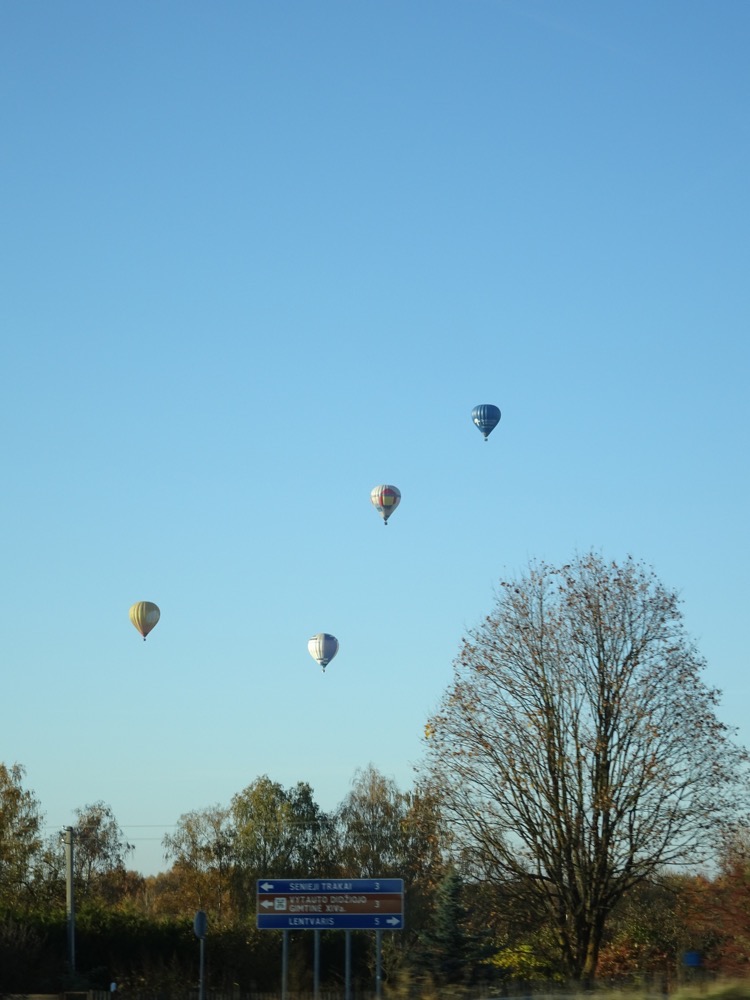 Trakai is a very touristy village near the castle, that seems to have sprung up to serve the tourists that come to visit the place. Full of bright coloured buildings, cafes and gift shops.
Trakai is a very touristy village near the castle, that seems to have sprung up to serve the tourists that come to visit the place. Full of bright coloured buildings, cafes and gift shops.
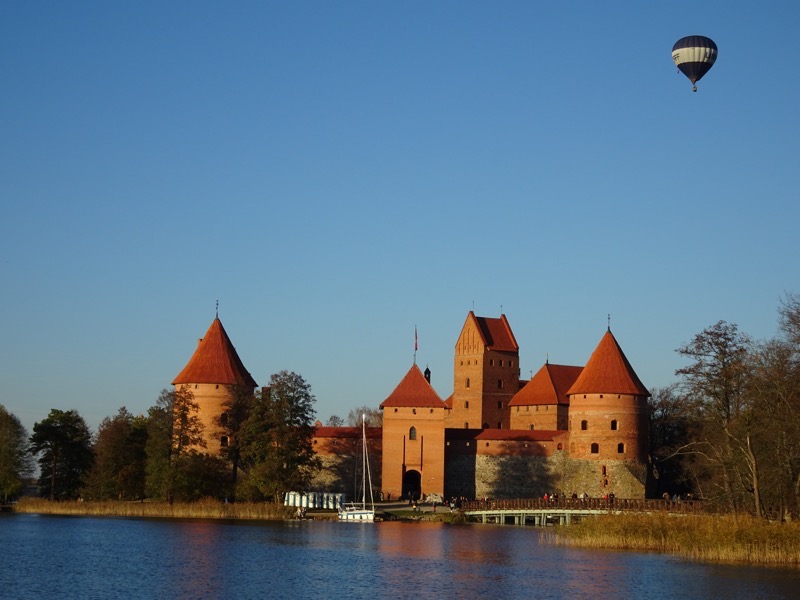
 Like so many of the other historic places we have visited this trip, the castle suffered several major catastrophes over the ensuing centuries including – an attack by Teutonic Knights in 1377 and a power struggle between Jogaila and Vytautas the Great for the title of Grand Duke of Lithuania after the assassination of Kęstutis. The castle was besieged by both sides of that spat, but soon after they reconciled and the major phase of construction started and continued until 1409, which was just before the Battle of Grunwald (between the Teutonic Knight and the Polish/Lithuanian Forces), after which the castle lost its relevance as a strategic military fortress.
Like so many of the other historic places we have visited this trip, the castle suffered several major catastrophes over the ensuing centuries including – an attack by Teutonic Knights in 1377 and a power struggle between Jogaila and Vytautas the Great for the title of Grand Duke of Lithuania after the assassination of Kęstutis. The castle was besieged by both sides of that spat, but soon after they reconciled and the major phase of construction started and continued until 1409, which was just before the Battle of Grunwald (between the Teutonic Knight and the Polish/Lithuanian Forces), after which the castle lost its relevance as a strategic military fortress.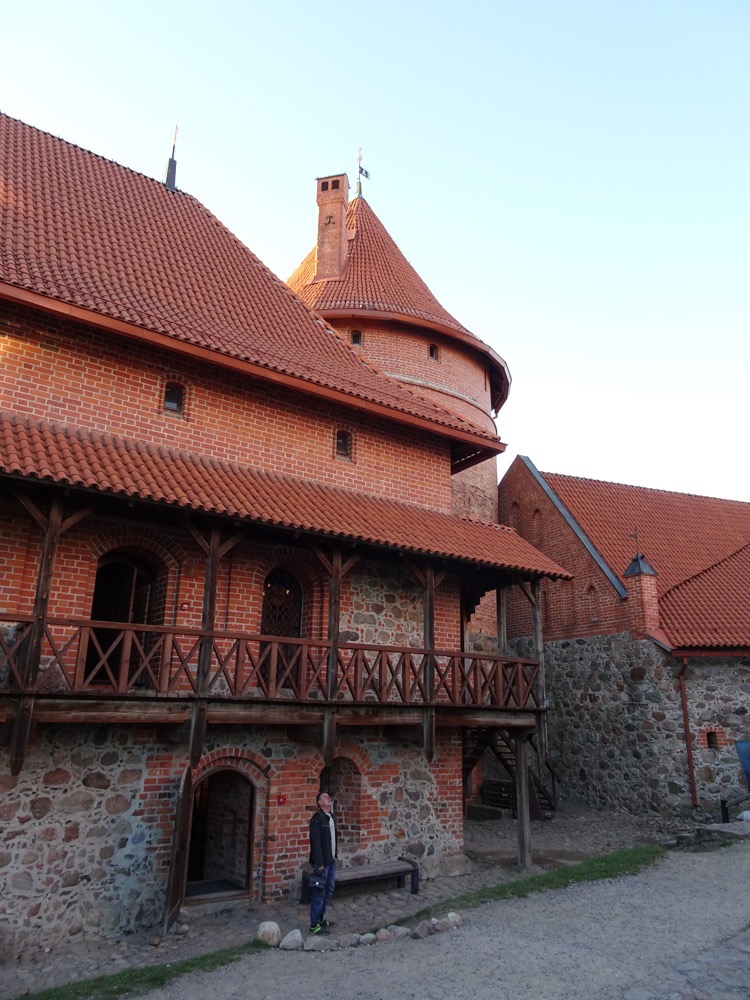 The castle is mainly built out of red Gothic bricks. Stone blocks were used only in the foundations and for some of the upper parts of buildings, towers and walls. It has been decorated with glazed roof tiles, burned bricks, and (some very dodgy) stained glass windows. Its overall style after the second construction phase could be described as Gothic with some Romanesque features.
The castle is mainly built out of red Gothic bricks. Stone blocks were used only in the foundations and for some of the upper parts of buildings, towers and walls. It has been decorated with glazed roof tiles, burned bricks, and (some very dodgy) stained glass windows. Its overall style after the second construction phase could be described as Gothic with some Romanesque features.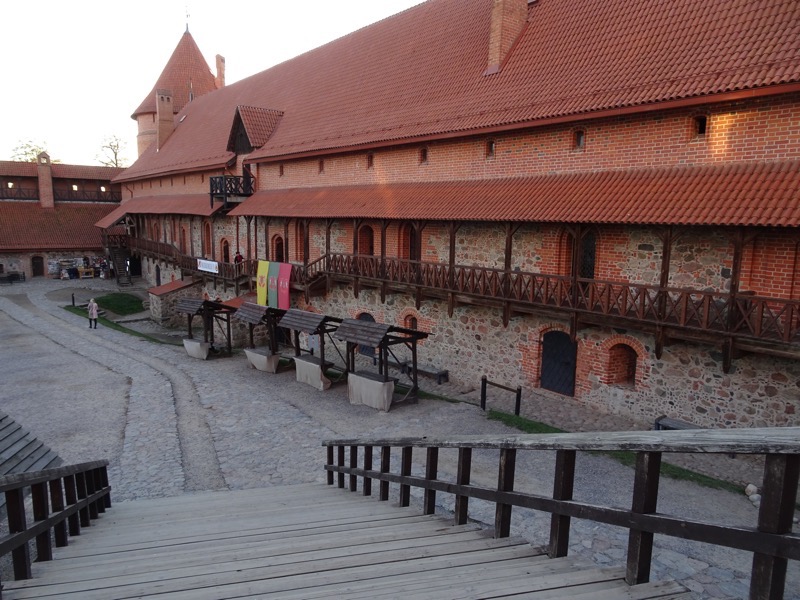 After the Battle of Grunwald, the castle was no longer of any military importance, so it was turned into a residence for the Grand Dukes of Lithuania. The caste was redecorated, frescos were added and foreign emissaries were welcomed in the Ducal Palace.
After the Battle of Grunwald, the castle was no longer of any military importance, so it was turned into a residence for the Grand Dukes of Lithuania. The caste was redecorated, frescos were added and foreign emissaries were welcomed in the Ducal Palace. Grand Duke Vytautas the Great died in the castle in 1430 leaving it in the hands of Sigismund Augustus who used it as a royal summer residence until 1511, and it was redecorated in a Renaissance style. Later the castle served as a prison and during the wars with Muscovy in the 17th century, the castle was damaged, but this time was not reconstructed and it gradually fell into disrepair.
Grand Duke Vytautas the Great died in the castle in 1430 leaving it in the hands of Sigismund Augustus who used it as a royal summer residence until 1511, and it was redecorated in a Renaissance style. Later the castle served as a prison and during the wars with Muscovy in the 17th century, the castle was damaged, but this time was not reconstructed and it gradually fell into disrepair.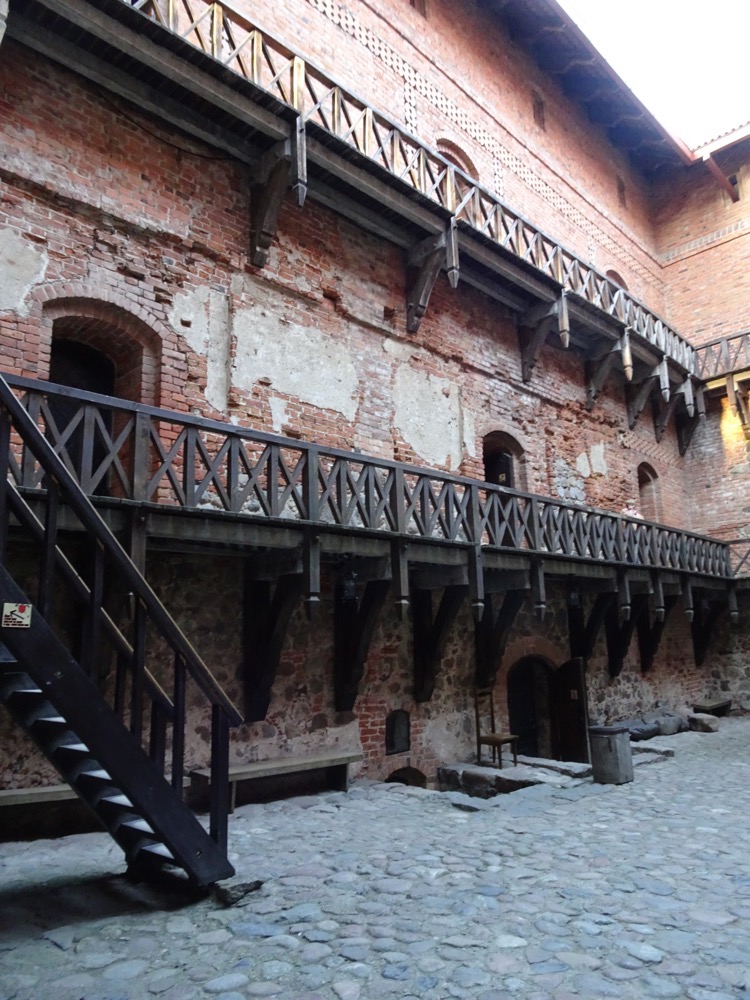 in 1888, the Imperial Archaeological Commission planned were made to rebuild the castle and in 1905, the Imperial Russian authorities decided to partially restore the castle ruins. During World War I, Germans brought in their restoration specialists, who made several attempts to rebuilt the castle and then between 1935-1941, parts of the Ducal Palace walls were rebuilt. Up until WWII, Lithuanian and Polish conservationists worked on castle project, but all work stopped when the war was raging all over Europe. After WWII, a major reconstruction project was begun in 1946 with actual restoration work started in 1951–1952. The major portion of the reconstruction was eventually finished in the 1960s with the goal of reconstructing the castle in a 15th century style to be a major tourist attraction, which has resulted in a cross between Hampton Court Palace and Bli Bli Castle. :/
in 1888, the Imperial Archaeological Commission planned were made to rebuild the castle and in 1905, the Imperial Russian authorities decided to partially restore the castle ruins. During World War I, Germans brought in their restoration specialists, who made several attempts to rebuilt the castle and then between 1935-1941, parts of the Ducal Palace walls were rebuilt. Up until WWII, Lithuanian and Polish conservationists worked on castle project, but all work stopped when the war was raging all over Europe. After WWII, a major reconstruction project was begun in 1946 with actual restoration work started in 1951–1952. The major portion of the reconstruction was eventually finished in the 1960s with the goal of reconstructing the castle in a 15th century style to be a major tourist attraction, which has resulted in a cross between Hampton Court Palace and Bli Bli Castle. :/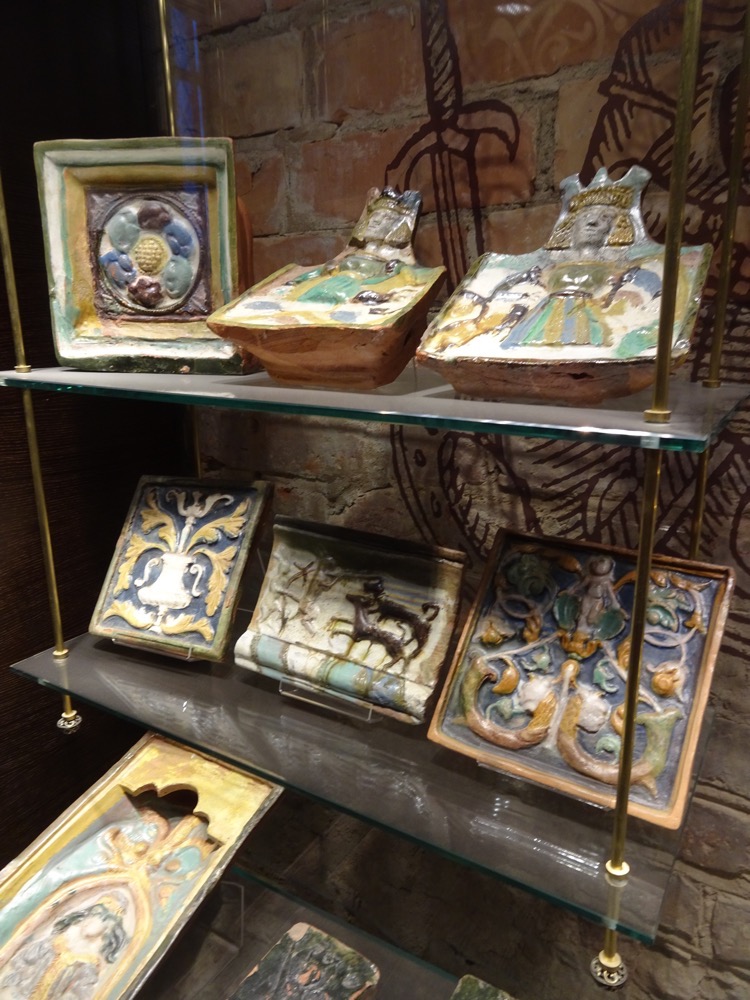
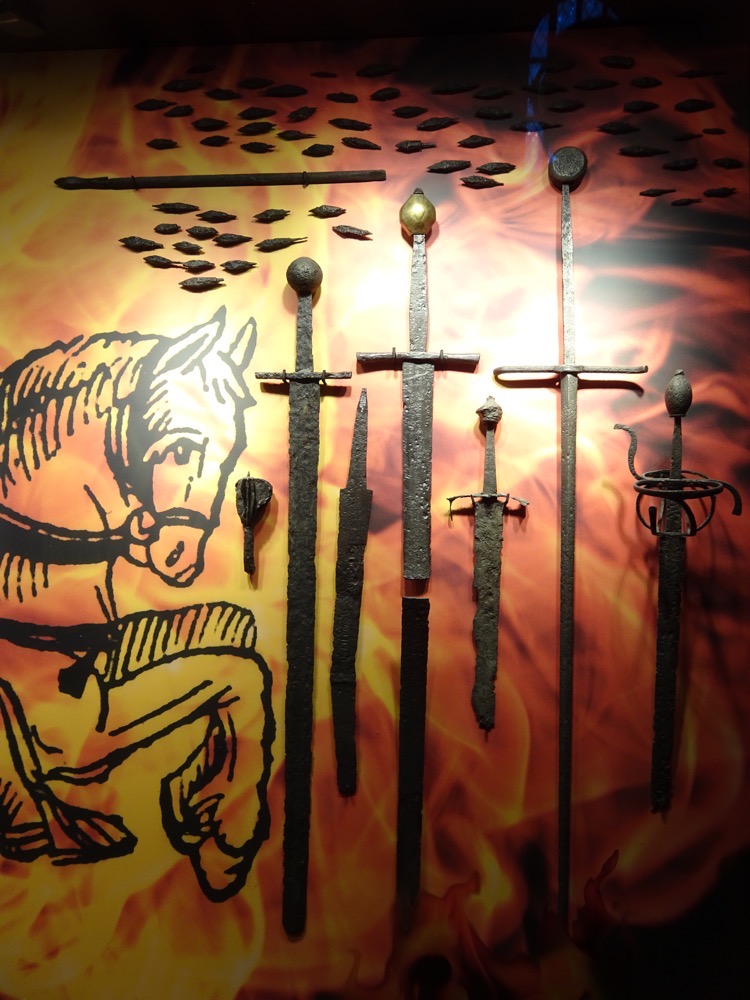



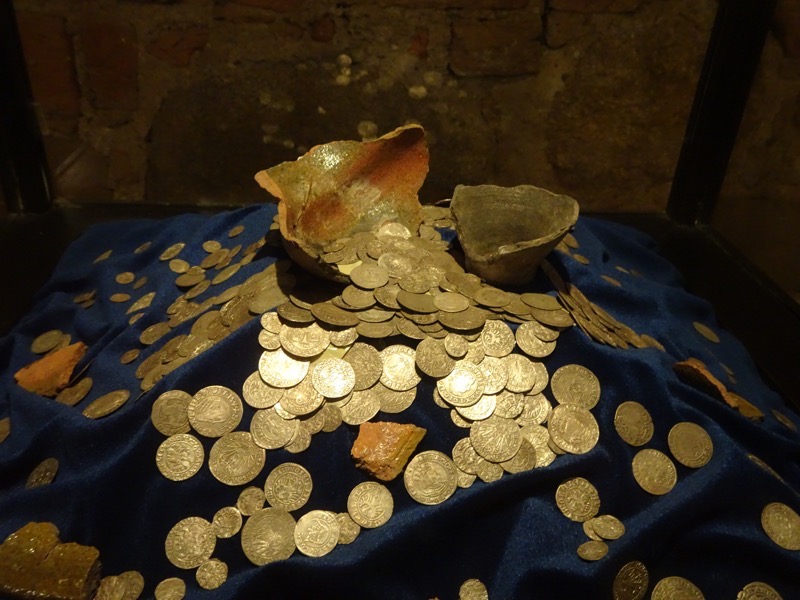


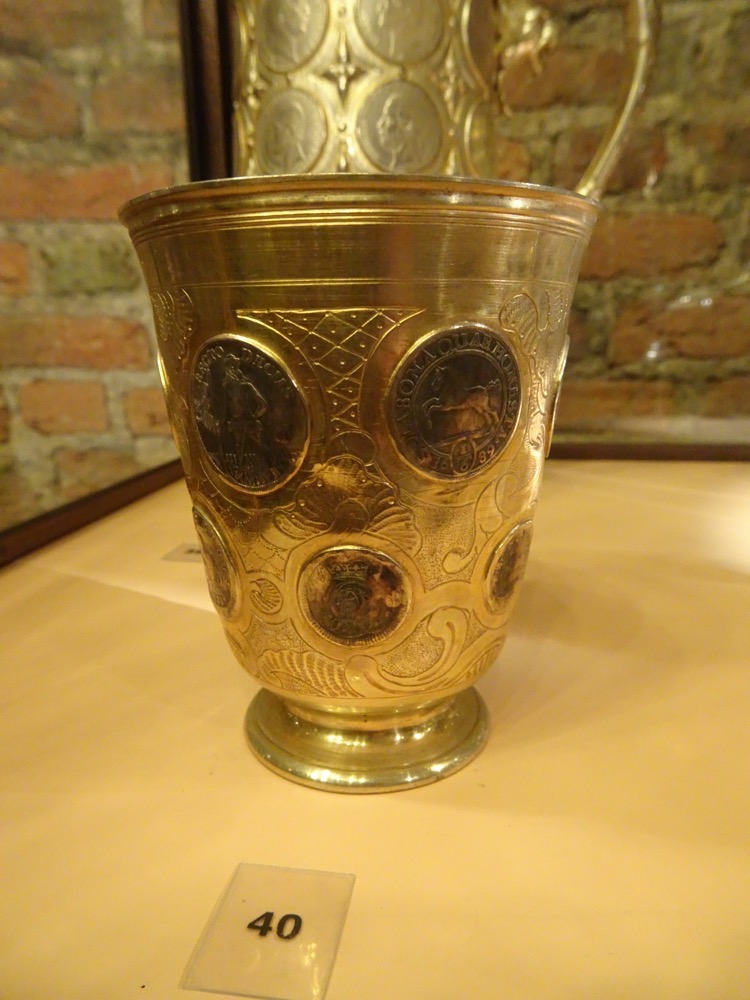 … Some not so genuine, like these lovely c.1970s post-modern stained glass windows (thankfully the lime green diagonal design is not so apparent in these photographs).
… Some not so genuine, like these lovely c.1970s post-modern stained glass windows (thankfully the lime green diagonal design is not so apparent in these photographs).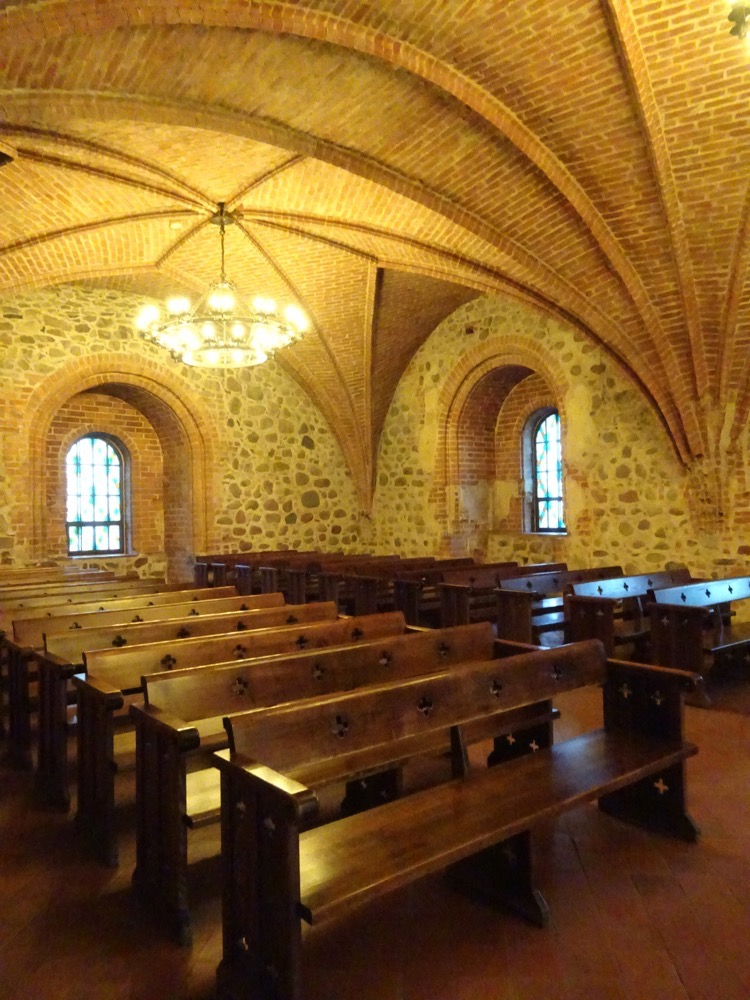
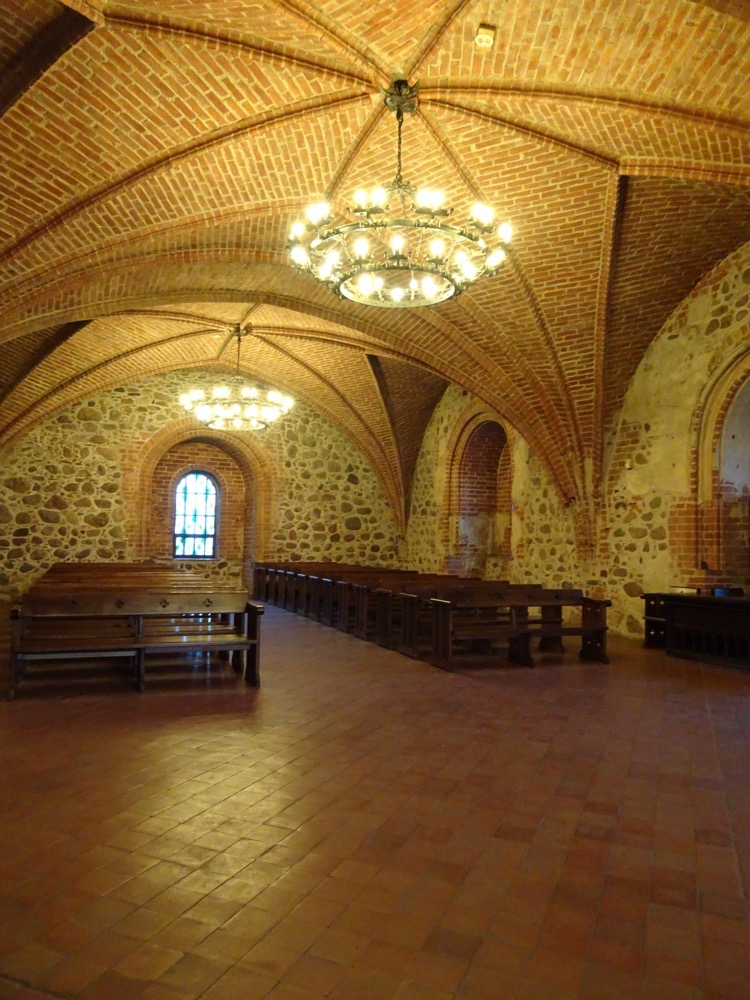
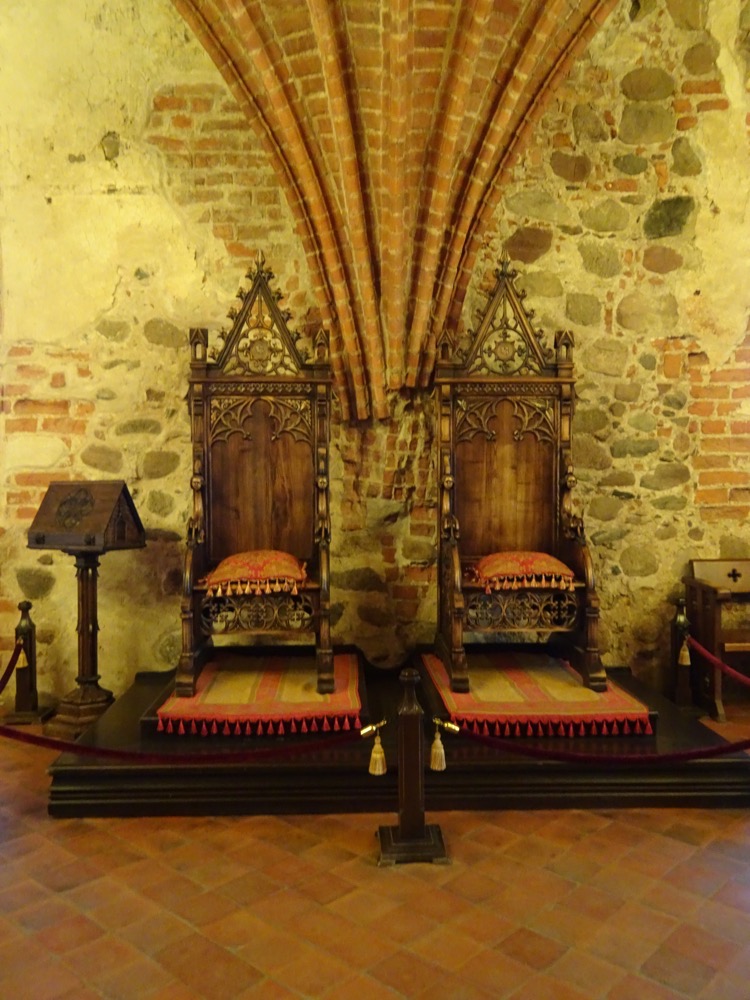
 Recreated stained glass windows that date all the way back to 2006.
Recreated stained glass windows that date all the way back to 2006.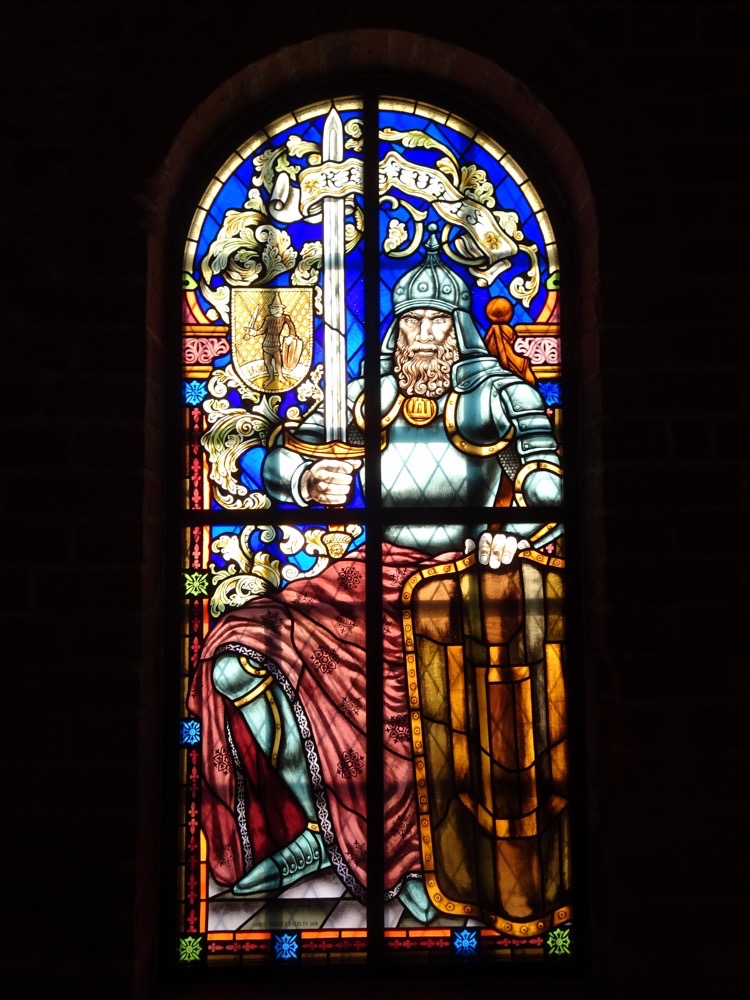
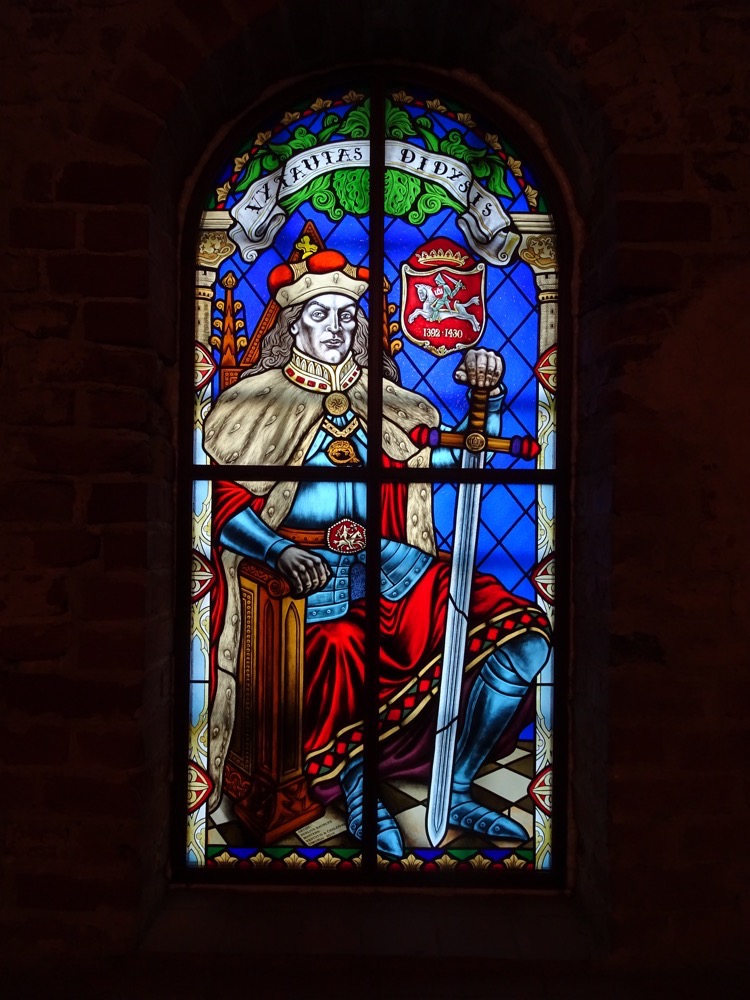 Photos of the Castle before the major renovations started in 1940s.
Photos of the Castle before the major renovations started in 1940s.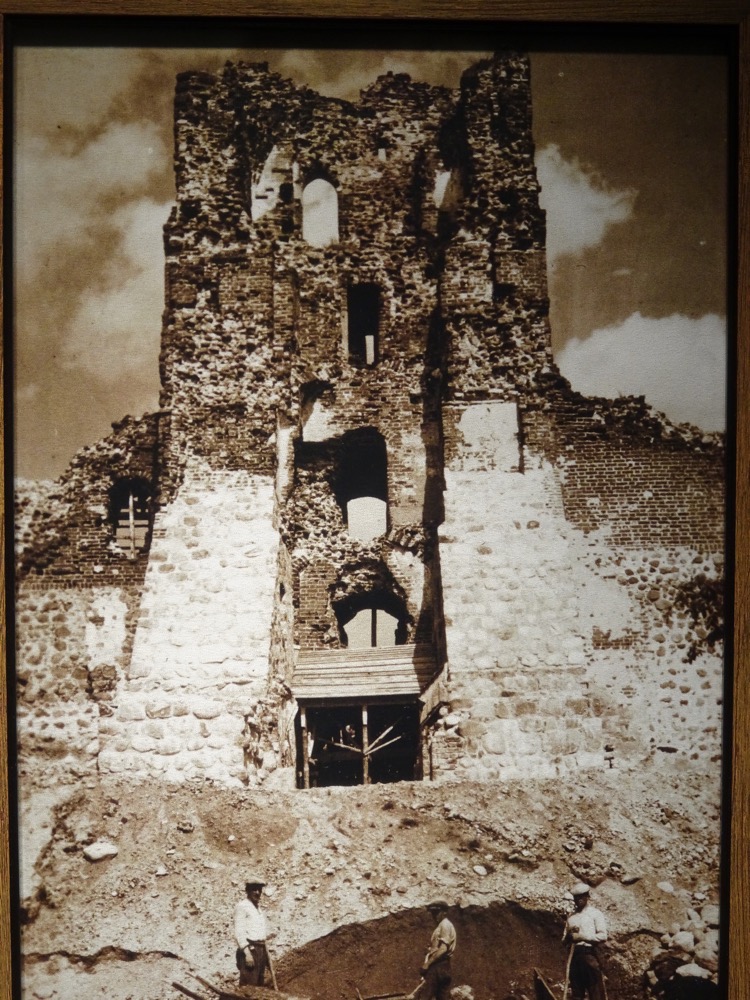
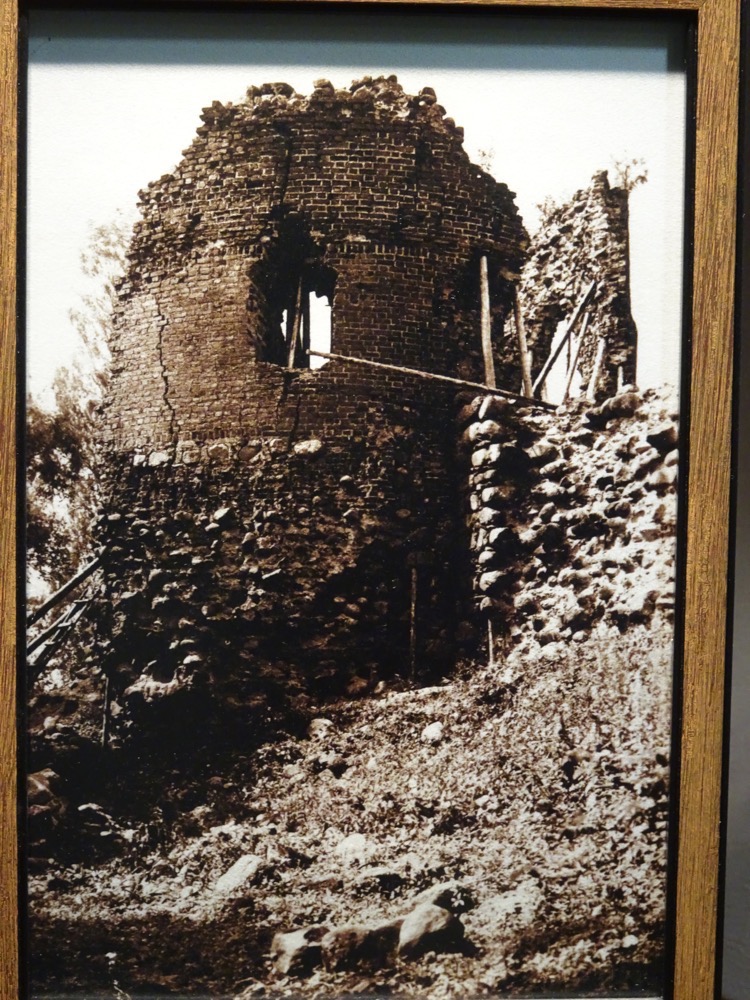 Other areas of the castle contain collections that have been donated to the Trakai Island Castle for display. Collections of official seals, pipes, Russian enamelware, taxidermied animals, and all sorts of other crap* are stored here (*weirdly gifts that appear to have been given to Lithuanian government officials over the last decade are all on display… weird plates from China in 2012, and just weird shit that has nothing to do with a 15th century castle).
Other areas of the castle contain collections that have been donated to the Trakai Island Castle for display. Collections of official seals, pipes, Russian enamelware, taxidermied animals, and all sorts of other crap* are stored here (*weirdly gifts that appear to have been given to Lithuanian government officials over the last decade are all on display… weird plates from China in 2012, and just weird shit that has nothing to do with a 15th century castle).
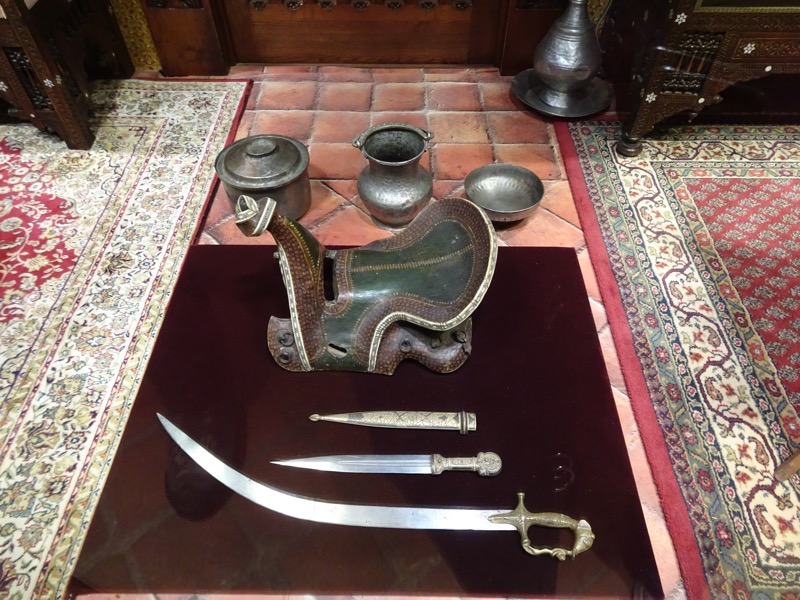
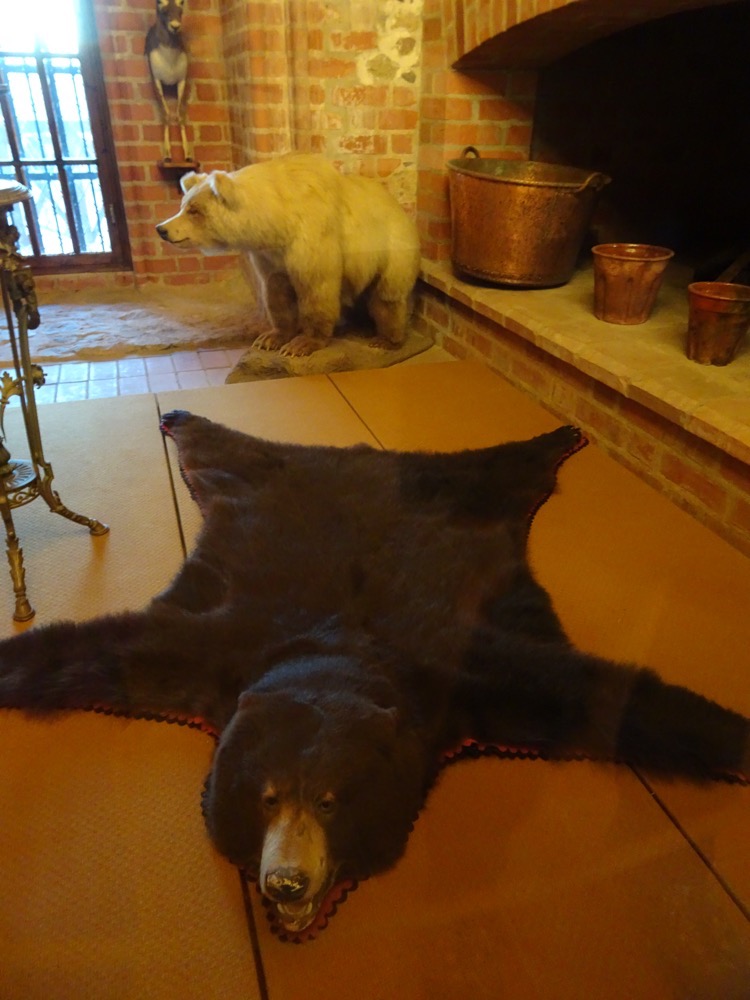
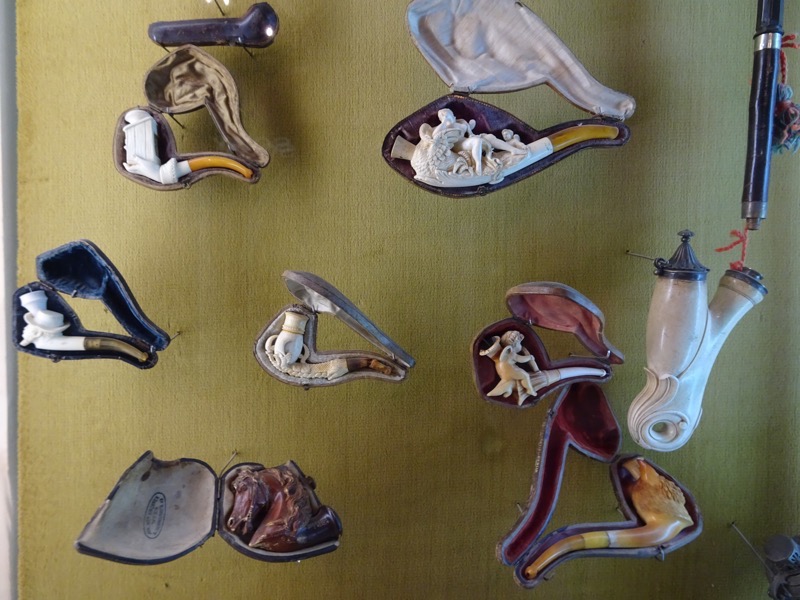
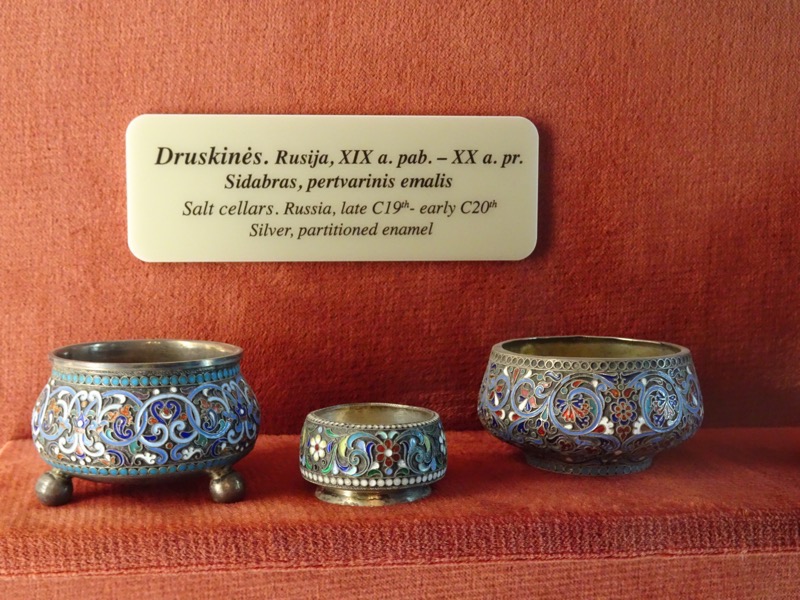 Still, it was quite a nice visit and it is so beautifully situation, it is well worth a look. I wouldn’t’ recommend checking it out in the middle of summer though, unless you were going to run in first thing in the morning or last thing in the afternoon and maybe get the place half empty – you can tell by the traffic flow that is set up, that it is probably a madhouse during peak season.
Still, it was quite a nice visit and it is so beautifully situation, it is well worth a look. I wouldn’t’ recommend checking it out in the middle of summer though, unless you were going to run in first thing in the morning or last thing in the afternoon and maybe get the place half empty – you can tell by the traffic flow that is set up, that it is probably a madhouse during peak season. After this, it was back to Vilnius for the evening and another night at the crazy Bernadinau B&B. Vilnius has been lovely… didn’t find the G-Spot though.
After this, it was back to Vilnius for the evening and another night at the crazy Bernadinau B&B. Vilnius has been lovely… didn’t find the G-Spot though. Some cute churches, and everything all sweet and fabulous…
Some cute churches, and everything all sweet and fabulous…  Until we encountered kilometres and kilometres of trucks all lined up in a dead stand still. For a while we thought it might be some sort of rolling blockade protest – people around here seem to be constantly protesting something. Or perhaps they were all lined up waiting for a weighbridge station, given how politely they were all lined up on the right and letting the cars pass them. We then came across this – the lane we had been travelling also at a dead stop of cars. Bugger, we thought – it was obviously the queue for the Polish/Lithuania border. So we pulled up behind the blue car in the photo below…
Until we encountered kilometres and kilometres of trucks all lined up in a dead stand still. For a while we thought it might be some sort of rolling blockade protest – people around here seem to be constantly protesting something. Or perhaps they were all lined up waiting for a weighbridge station, given how politely they were all lined up on the right and letting the cars pass them. We then came across this – the lane we had been travelling also at a dead stop of cars. Bugger, we thought – it was obviously the queue for the Polish/Lithuania border. So we pulled up behind the blue car in the photo below…  At this point, one of the truck drivers (most of whom were not in their vehicles) came over and told us to drive around. He pointed to the licence plate of the blue car, Belarussian, and he gestured for us to go around (our vehicle obviously had Polish plates on it). So we dutifully went around and ended up at the top of the queue:
At this point, one of the truck drivers (most of whom were not in their vehicles) came over and told us to drive around. He pointed to the licence plate of the blue car, Belarussian, and he gestured for us to go around (our vehicle obviously had Polish plates on it). So we dutifully went around and ended up at the top of the queue:
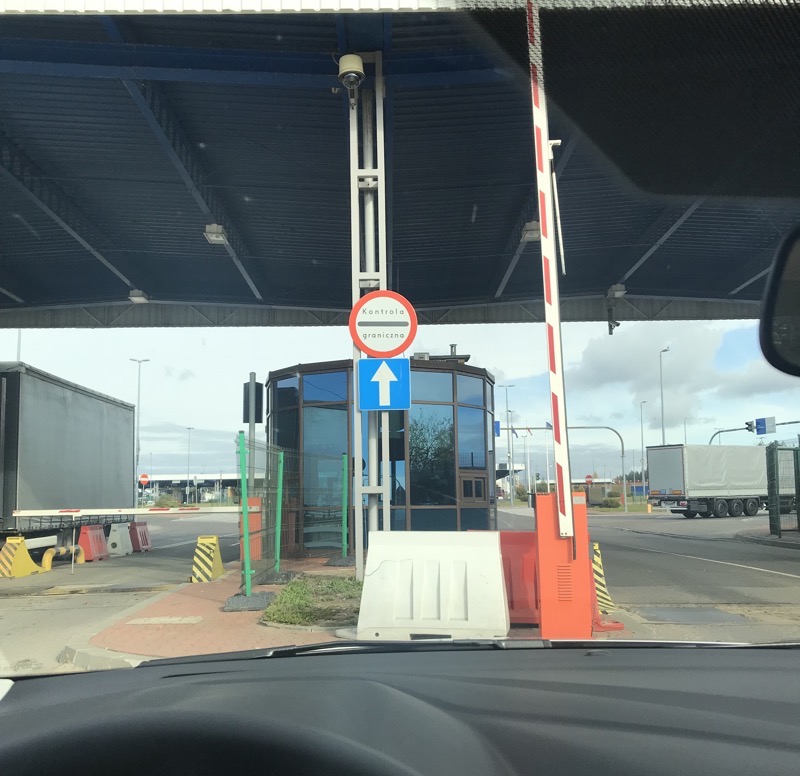 Whereupon it became obvious that we were in the middle of the military checkpoint to enter Belarus! Which meant we were miles from where we were supposed to be, and well and truly inside the borders of Belarus! Fark!
Whereupon it became obvious that we were in the middle of the military checkpoint to enter Belarus! Which meant we were miles from where we were supposed to be, and well and truly inside the borders of Belarus! Fark! Now we knew when we set out that there were two routes to get us to Vilnius, one of which was slightly shorter and chopped through the corner of what is effectively the dictatorial presidential state of Belarus and the other which went only through the border between Poland and Lituania. Now, guess which route yale somehow programmed into Wayz…?
Now we knew when we set out that there were two routes to get us to Vilnius, one of which was slightly shorter and chopped through the corner of what is effectively the dictatorial presidential state of Belarus and the other which went only through the border between Poland and Lituania. Now, guess which route yale somehow programmed into Wayz…?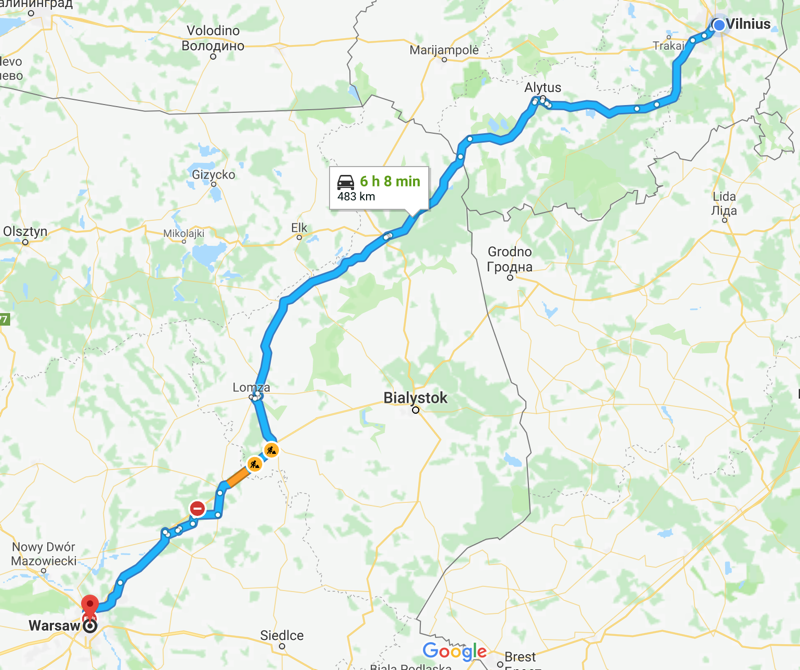

 The countryside was simply stunning though – there is a beautiful quality to the light here (once you get out of the cities).
The countryside was simply stunning though – there is a beautiful quality to the light here (once you get out of the cities).
 Honestly, I grabbed these shots out the car window as we sped past and they have not been altered or had filters added or anything.
Honestly, I grabbed these shots out the car window as we sped past and they have not been altered or had filters added or anything.

 Stopped at a servo for a fortifying something something after our little run in with the Belarus Border Force guys.
Stopped at a servo for a fortifying something something after our little run in with the Belarus Border Force guys.


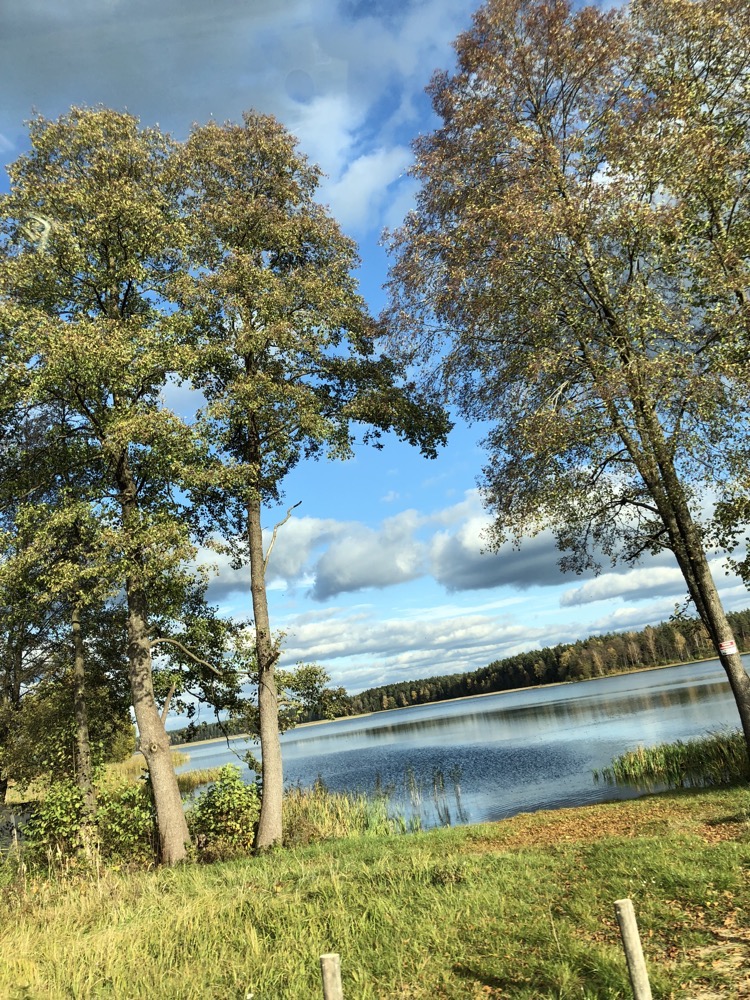

 WWII memorial in a little town on the way.
WWII memorial in a little town on the way.
 Oddly, the Polish/Lithuanian border was far more like what we had been expecting – almost non-existent. Being both part of the Schengen Agreement, there is pretty much borderless exchange between the two countries. We did see some guards in a jeep on the side of the road, but they weren’t doing anything at all.
Oddly, the Polish/Lithuanian border was far more like what we had been expecting – almost non-existent. Being both part of the Schengen Agreement, there is pretty much borderless exchange between the two countries. We did see some guards in a jeep on the side of the road, but they weren’t doing anything at all. The delay set up back a little arriving into Vilnius, but we arrived found our B&B and got settled pretty quickly.
The delay set up back a little arriving into Vilnius, but we arrived found our B&B and got settled pretty quickly. The B&B is in an old building with massive oak beams, exposed brick and stuccoed walls and old chunky furniture, right in the middle of the city.
The B&B is in an old building with massive oak beams, exposed brick and stuccoed walls and old chunky furniture, right in the middle of the city. 

 After our adventure just driving here today, we decided to try and find some local food for dinner. yale scoped out this place on Trip Advisor and it had the two most desireable elements we could have asked for, 1) great reviews and 2) mega close proximity. Because it had been a long day already.
After our adventure just driving here today, we decided to try and find some local food for dinner. yale scoped out this place on Trip Advisor and it had the two most desireable elements we could have asked for, 1) great reviews and 2) mega close proximity. Because it had been a long day already. We walked in and there was a wait for a table. The restaurant didn’t appear to be very big so we were a bit disheartened and I was considering looking for other options, when it became apparent that there must be more space off to the side of the entrance and perhaps downstairs as well. We didn’t have to wait too long for a table and were led downstairs through a veritable rabbit warren on cosy dining spaces.
We walked in and there was a wait for a table. The restaurant didn’t appear to be very big so we were a bit disheartened and I was considering looking for other options, when it became apparent that there must be more space off to the side of the entrance and perhaps downstairs as well. We didn’t have to wait too long for a table and were led downstairs through a veritable rabbit warren on cosy dining spaces. First things first – a drink! This place does paddles of brandy tasting so we thought we’d give that a go.
First things first – a drink! This place does paddles of brandy tasting so we thought we’d give that a go.
 From the left, very drinkable with cherry flavours, quite sweet with honey overtones, something akin to metho, disgustingly strong liquorice shit, and slightly less strong but equally disgusting liquorice shit! Still, most of it went down just fine.
From the left, very drinkable with cherry flavours, quite sweet with honey overtones, something akin to metho, disgustingly strong liquorice shit, and slightly less strong but equally disgusting liquorice shit! Still, most of it went down just fine.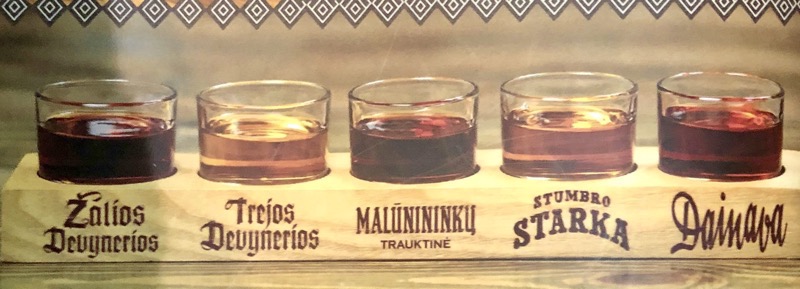
 For entrees, everything looked really good on what is an extensive menu. We ordered a few plates to try – fried cheese with bell peppers (effectively jalapeno poppers – which seemed odd for Lithuanian cuisine, but my knowledge there is quite limited).
For entrees, everything looked really good on what is an extensive menu. We ordered a few plates to try – fried cheese with bell peppers (effectively jalapeno poppers – which seemed odd for Lithuanian cuisine, but my knowledge there is quite limited).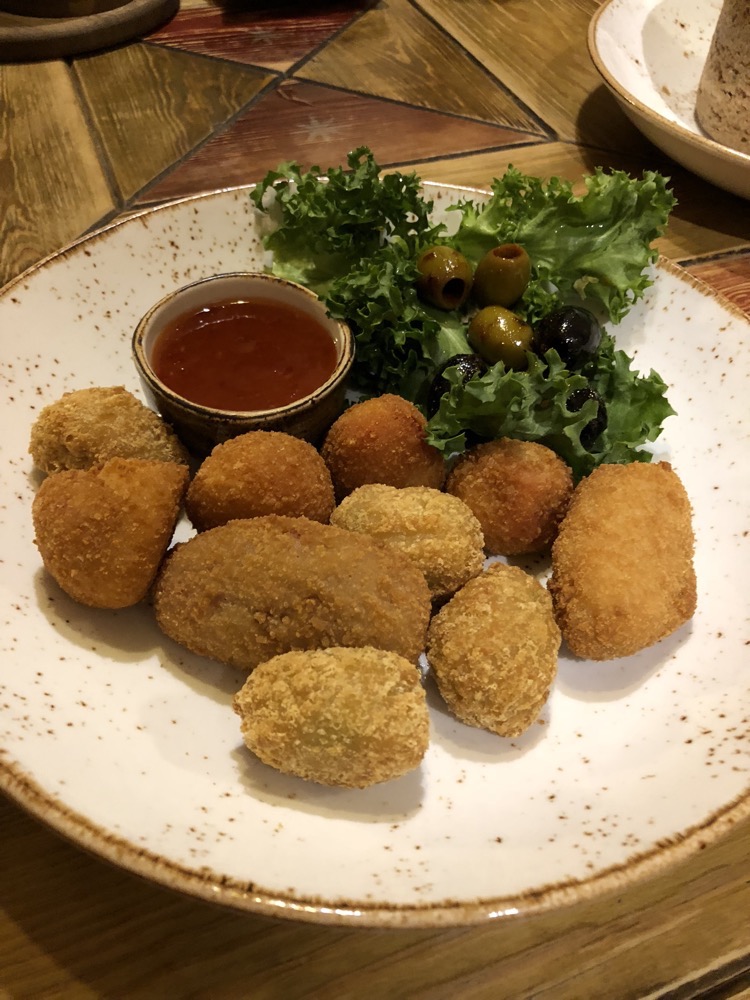 Next we tried the ‘thick and creamy wild mushroom soup’… which I tried and exclaimed “I hate this place! Best mushroom soup I have ever had, and it’s in bloody Lithuania!”
Next we tried the ‘thick and creamy wild mushroom soup’… which I tried and exclaimed “I hate this place! Best mushroom soup I have ever had, and it’s in bloody Lithuania!” yale also ordered a second entree of meat dumplings served with sour cream and some sort of nutty soupy broth stuff. It was very tasty – somehow just the right amount of salty.
yale also ordered a second entree of meat dumplings served with sour cream and some sort of nutty soupy broth stuff. It was very tasty – somehow just the right amount of salty. We had finished the brandy tasting paddle and the beers etc, so yale ordered a couple of meads and a homemade vodka. On the left honey mead, the vodka (average, but we may have been spoiled of late) and some god awful herbal mead shit that was 75% alcohol! Man that stuff is strong.
We had finished the brandy tasting paddle and the beers etc, so yale ordered a couple of meads and a homemade vodka. On the left honey mead, the vodka (average, but we may have been spoiled of late) and some god awful herbal mead shit that was 75% alcohol! Man that stuff is strong.
 Dinner consisted of venison meatballs served with spinach mashed potato, loads of beetroot and a cranberry/blueberry sauce. Delicious.
Dinner consisted of venison meatballs served with spinach mashed potato, loads of beetroot and a cranberry/blueberry sauce. Delicious. And yale had some enormous dumpling things filled with mean and drowning in a thick mushroom sauce.
And yale had some enormous dumpling things filled with mean and drowning in a thick mushroom sauce. After dinner (and all those strong drinks) we barely managed to find our way out of the hidden tunnels of amazing foody goodness.
After dinner (and all those strong drinks) we barely managed to find our way out of the hidden tunnels of amazing foody goodness.


 We want to get a full day to check out Vilnius tomorrow and both of us have laundry that needed attending to so we head back to the B&B for what was supposed to be an early night but it is already getting close to midnight. Again.
We want to get a full day to check out Vilnius tomorrow and both of us have laundry that needed attending to so we head back to the B&B for what was supposed to be an early night but it is already getting close to midnight. Again.